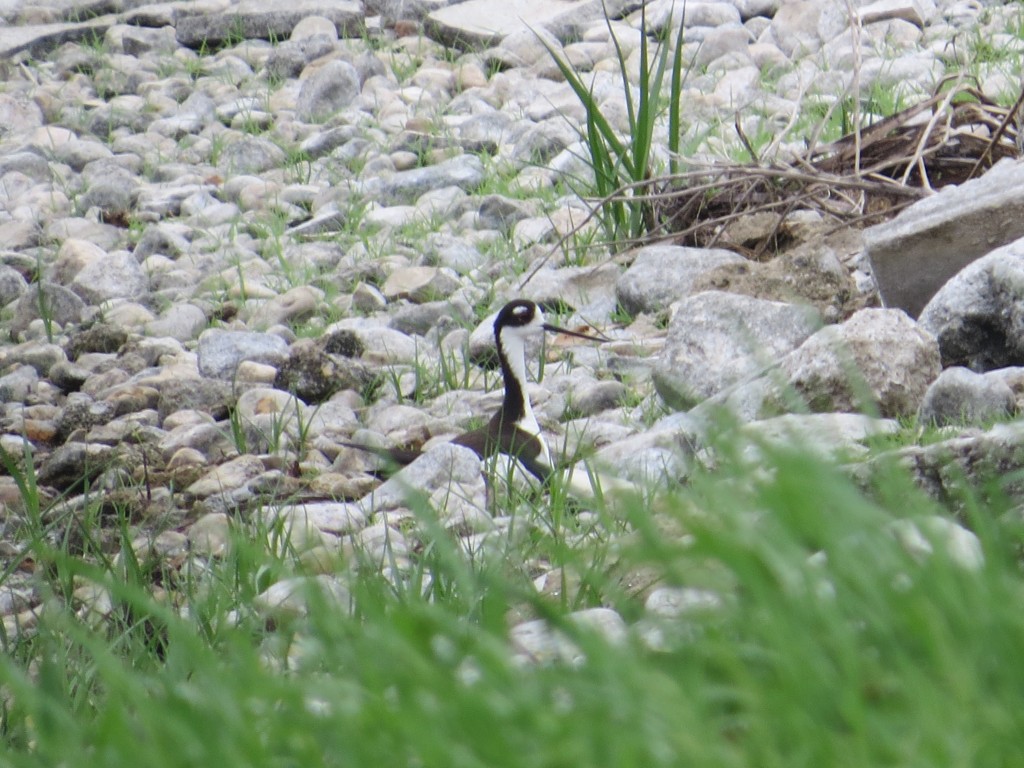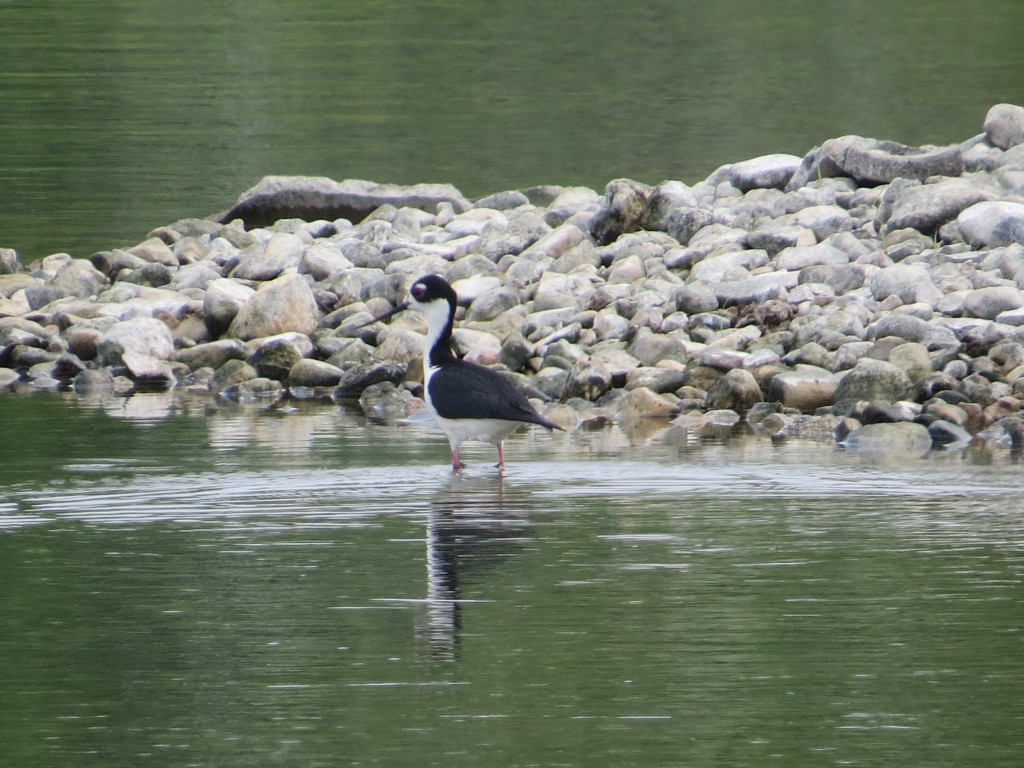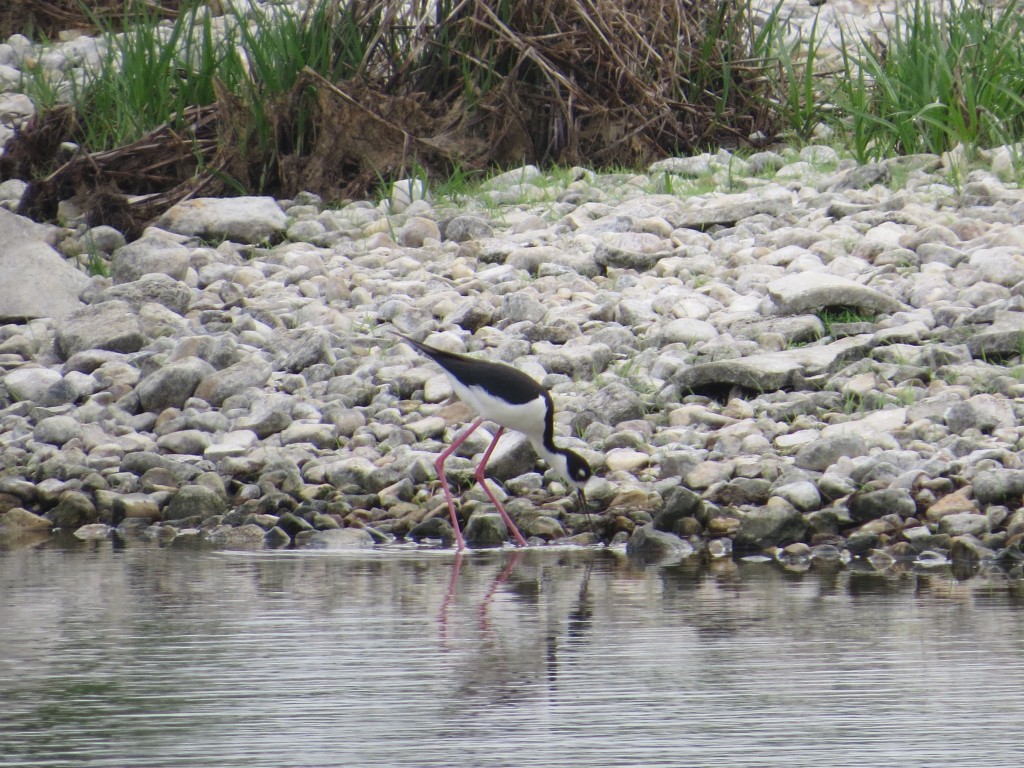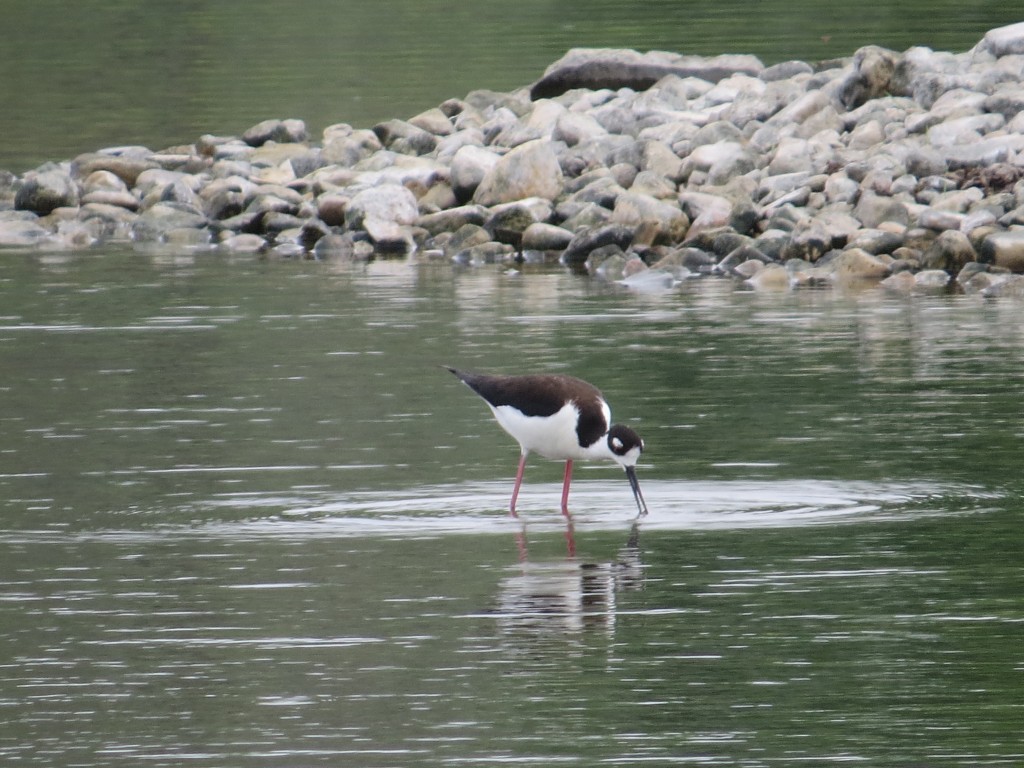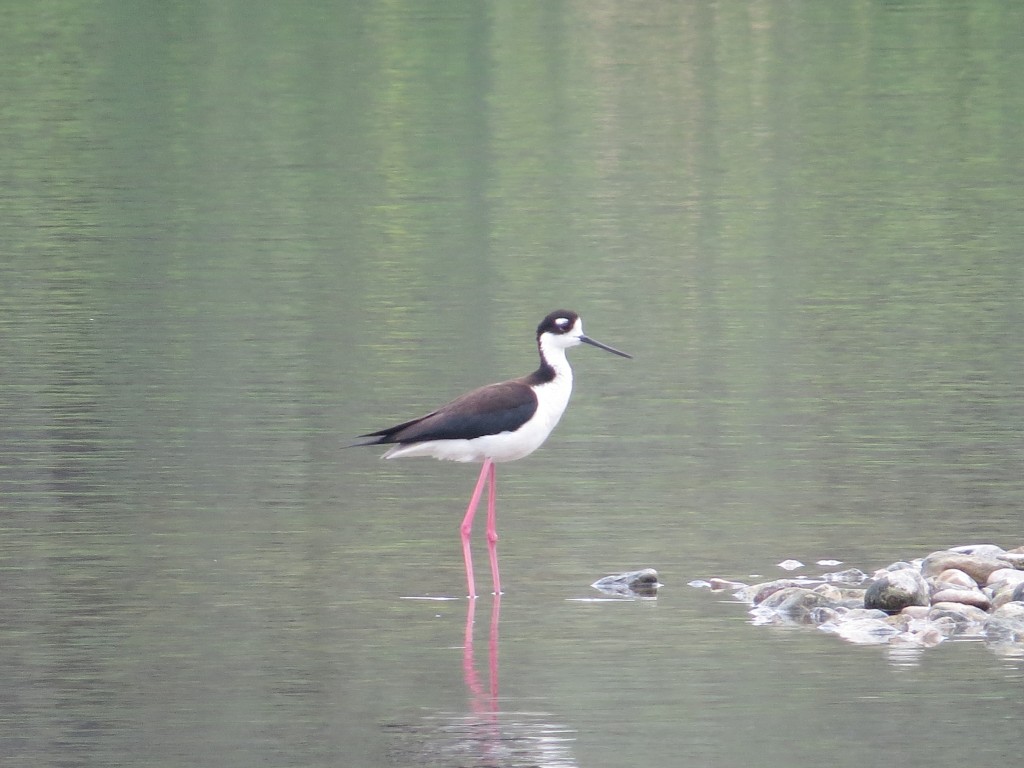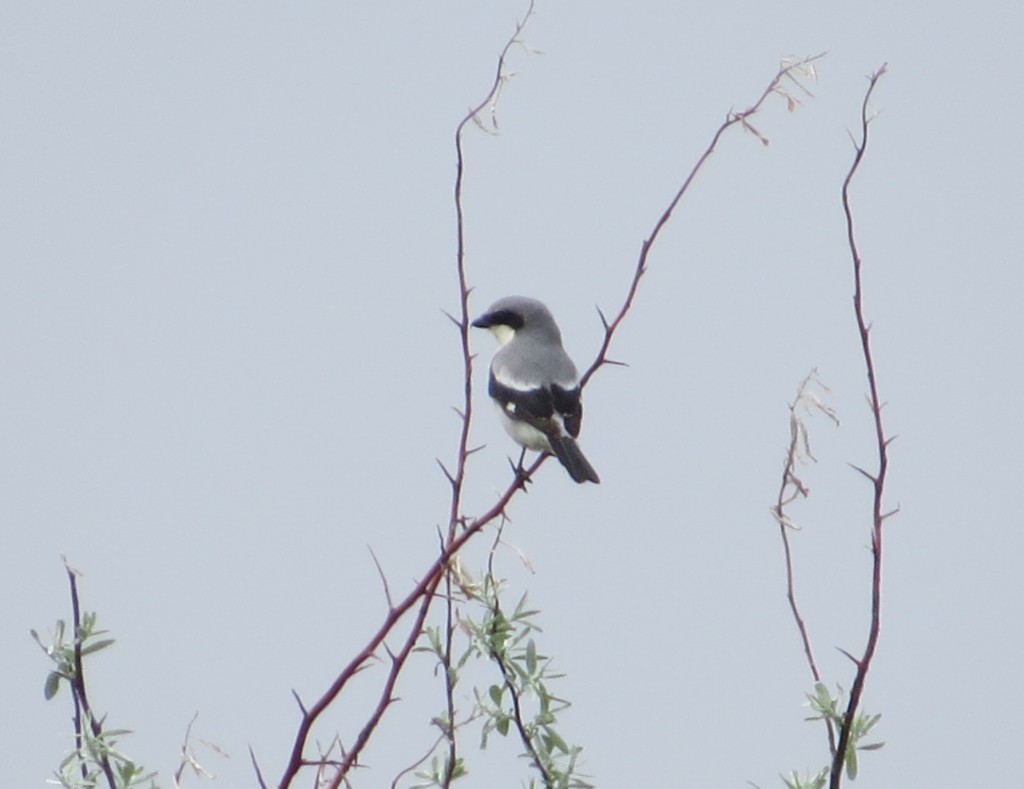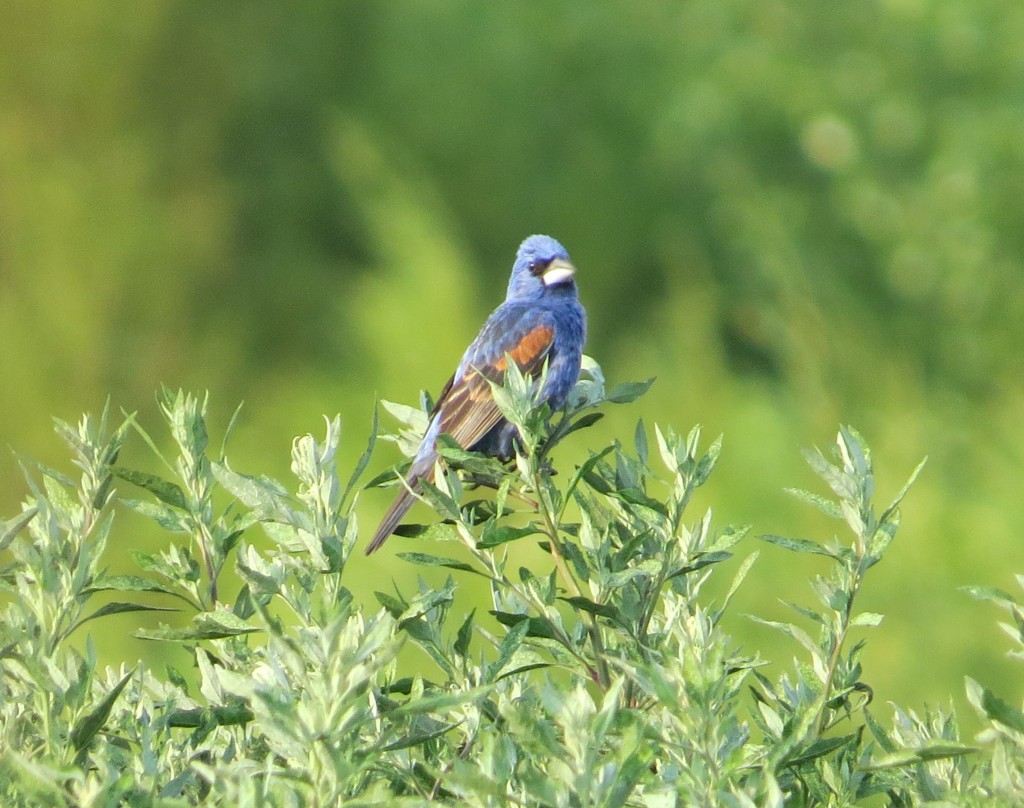
Though we racked up double-digit lifers in Colorado, that trip is a distant birding memory. The birding back home has been incredibly exciting. More is at play than just adding a life bird or getting that beautiful photo. Instead, there’s been some serious citizen-science going on.
Let me get to the point. I believe that the Blue Grosbeak is expanding its range in Minnesota and growing in numbers, so I have been doing some investigating to back up my theory. I can remember when I first became a birder how I badly wanted to see a Blue Grosbeak. Imagine my surprise then, when I learned that they are a rare, regular species in the very southwestern corner of Minnesota. Specifically, Blue Mounds State Park in Rock County is the place to see them. That’s where we got our lifer last year.
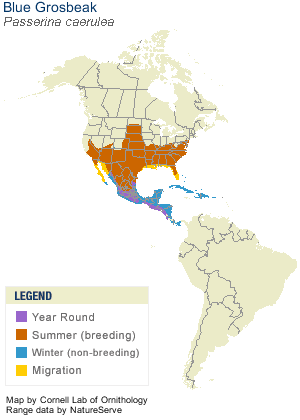
Range map of the Blue Grosbeak from the Cornell Lab of Ornithology http://www.allaboutbirds.org/guide/blue_grosbeak/id
But then I saw them further to the northeast at Cottonwood in each of the last two years when they were discovered by Garrett Wee. I started to get curious about this species growing in numbers when Garrett reported them two years in a row. Additionally he found a nest this year. The site fidelity was intriguing.
Randy Frederickson furthered my curiosity when he said he was hoping to someday find a Blue Grosbeak in Kandiyohi County. I could hardly believe that he would think it was possible, but then he told me how he and Joel Schmidt found a family of Blue Grosbeaks in Renville County just six miles south of the Renville-Kandiyohi county line in 2012. So last week I decided to head to this location in Renville County which was the Olivia compost site. I wanted to see if the Blue Grosbeaks were still around a couple years later. If they were, I wanted to document them for eBird. Some birders have been documenting their Blue Grosbeak sightings, and it is apparent that the Blue Grosbeak has gone beyond its normal Minnesota home of Rock County, the very southwestern corner of the state.
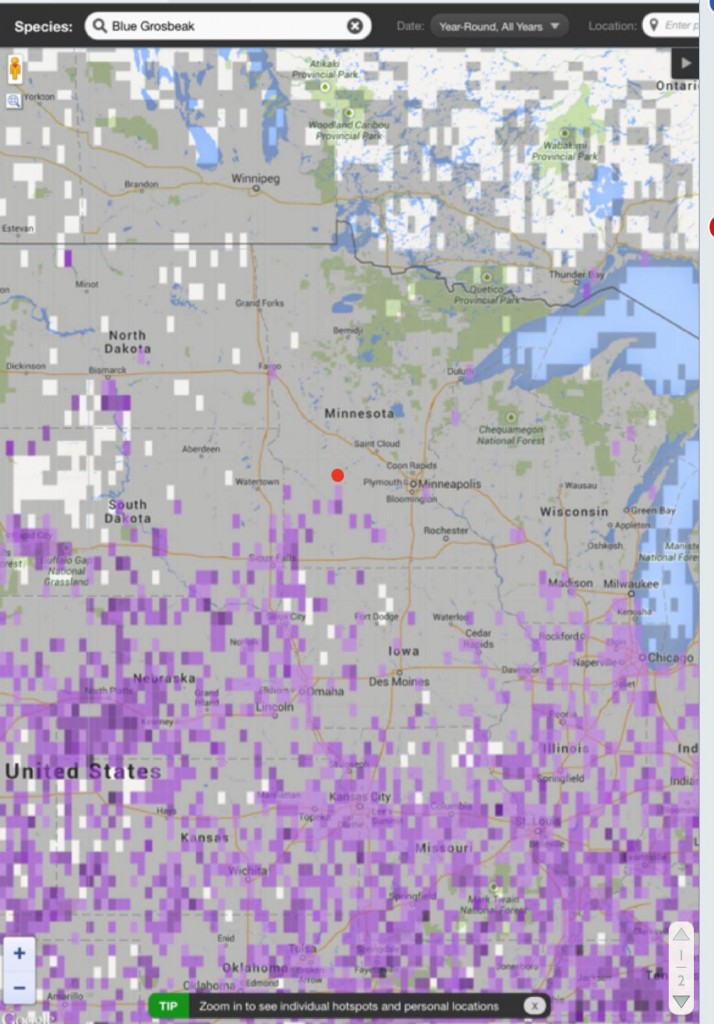
The red dot is where we live. Blue Grosbeaks have traditionally been found in just the very southwestern corner of Minnesota which is much less territory than what this sightings map indicates
I did not find any Blue Grosbeaks at the compost site where Randy and Joel found them two years prior. Not wanting to waste a trip, I had scouted satellite imagery of the area ahead of time looking for any gravel pits or waste areas as Blue Grosbeaks prefer this type of habitat. In our sea of green, these areas are habitat islands. Unlike the arid southwest, this type of desert-wash habitat is rare here and makes for easy places to look for the Blue Grosbeak. If they are in the area, they are going to be in one of these pockets of habitat.
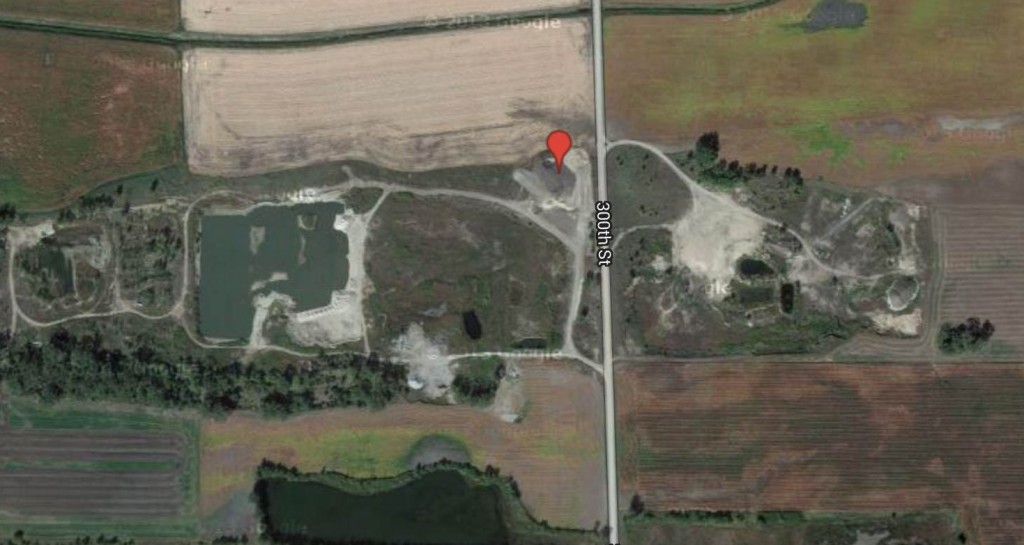
I checked out the gravel pit pictured above just a mile from where the Blue Grosbeaks were seen in 2012. Almost immediately upon arriving I heard a singing male Blue Grosbeak. I was absolutely thrilled, even more so when I finally got to lay eyes on it.
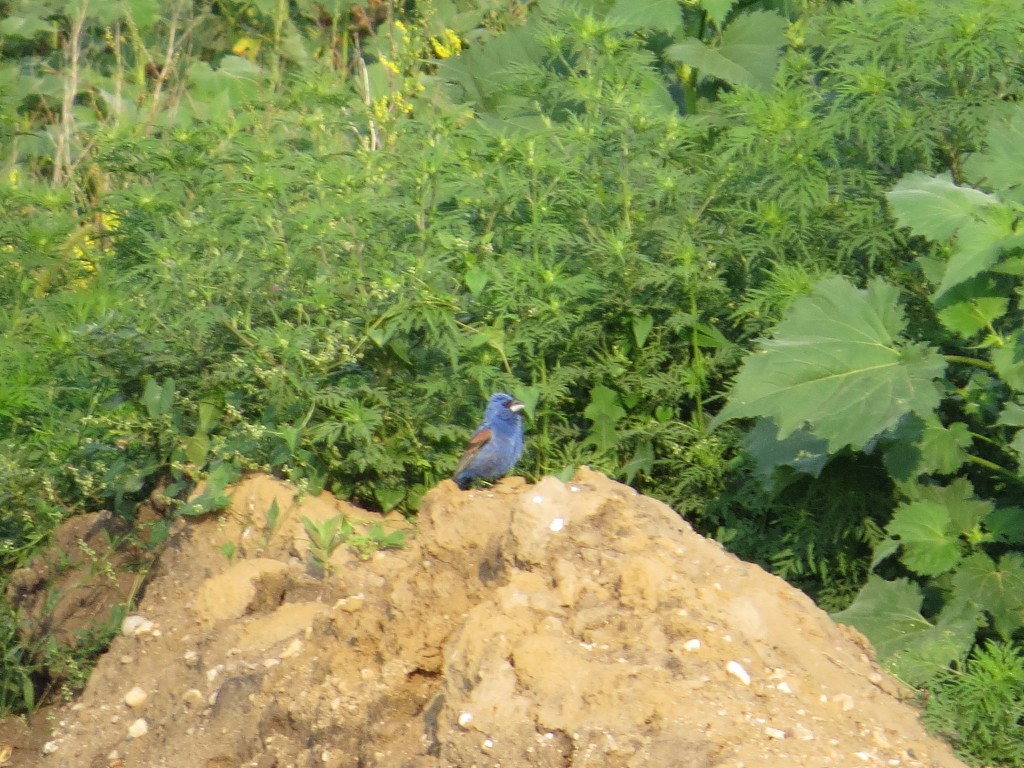
Blue Grosbeak at NE corner of gravel pit on west side of 300th St. just south of 840th Ave.
I was pretty pleased with the find and reported the bird to the listserv, MOU-net, so other birders could see it. But after I was at home and studying satellite images again, I realized I didn’t fully explore the area. It turns out that the pit I stopped at is part of about a four-mile tract of old gravel pits. I went back two days later intent to check out more of the area. When I got to the site of the Grosbeak pictured above, I ran into Ron Erpelding and Herb Dingmann who had just seen the bird and were listening to a second bird nearly a mile away from the first one! Now I was really excited to get my search underway. I took every north-south road that intersected this tract of gravel deposits. And on each road I found a singing male Blue Grosbeak! With Ron and Herb’s bird, that made for five male Blue Grosbeaks. It was unbelievable yet believable because of the habitat I was exploring.
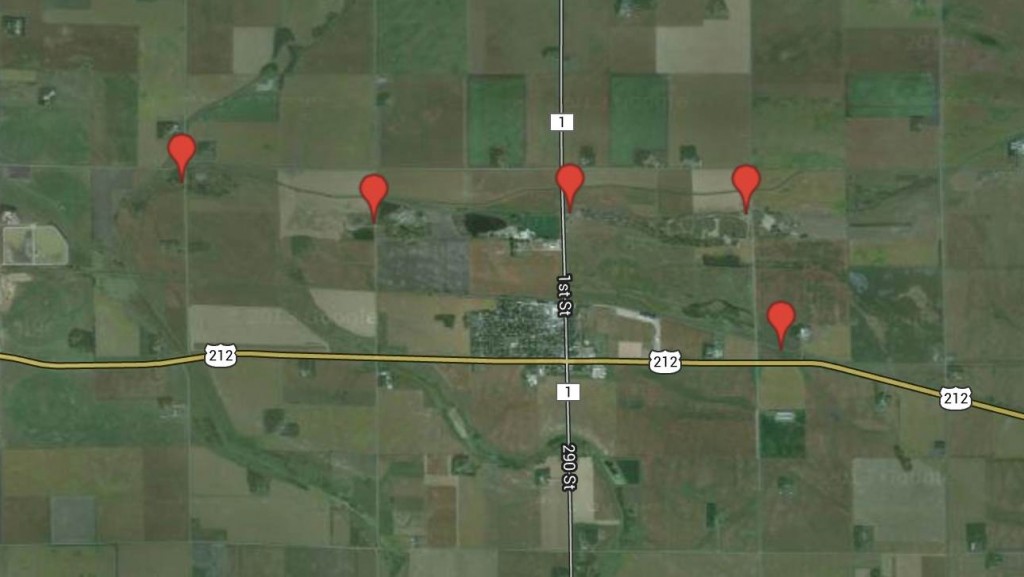
Locations of where I found Blue Grosbeak males; the bottom-right marker is the bird found by Ron Erpelding and Herb Dingmann
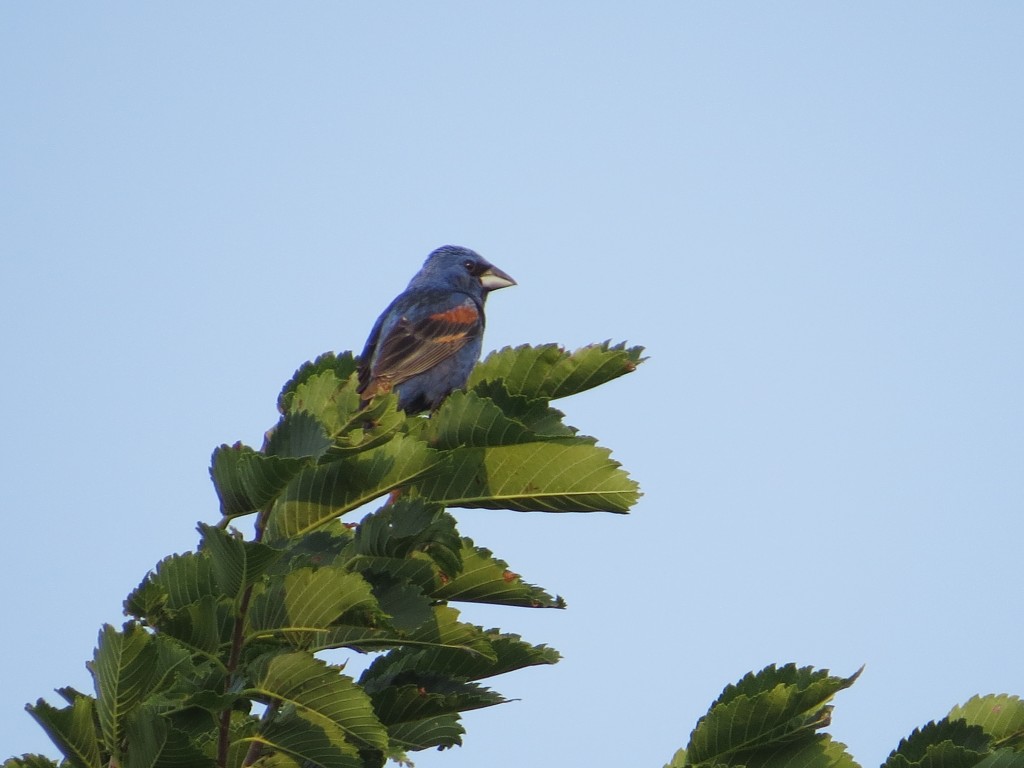
Blue Grosbeak at the Danube Brush Site just north of Danube on Co. Rd. 1
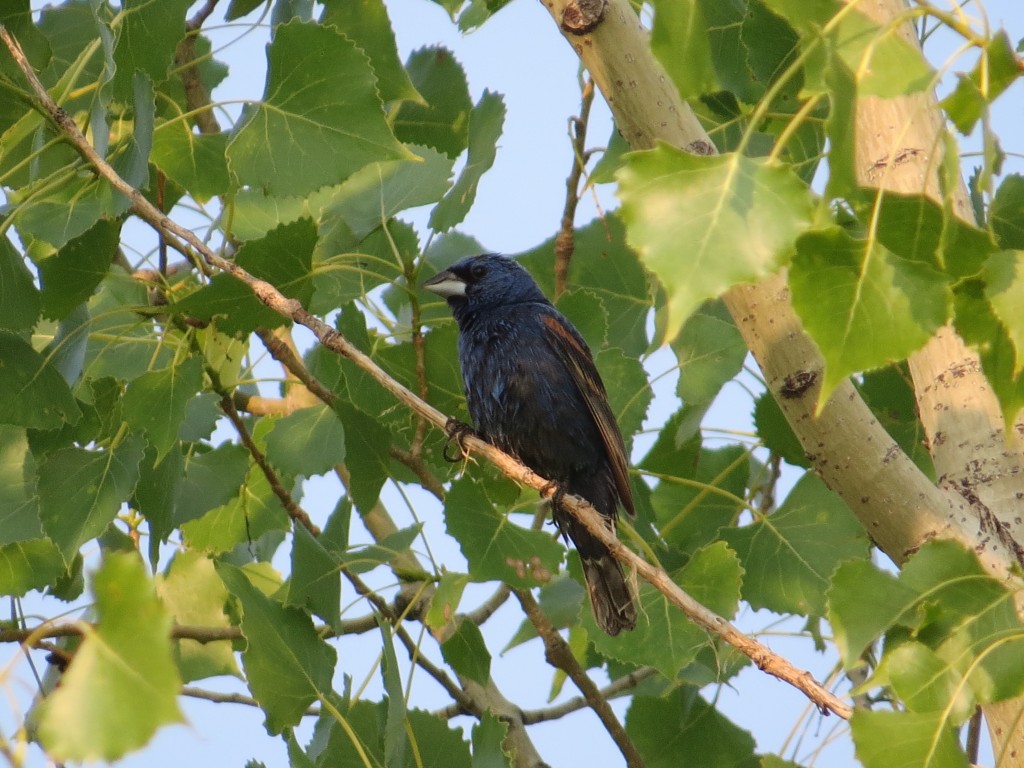
Blue Grosbeak on 280th St. south of 840th Ave. where 280th intersects the gravel pits.
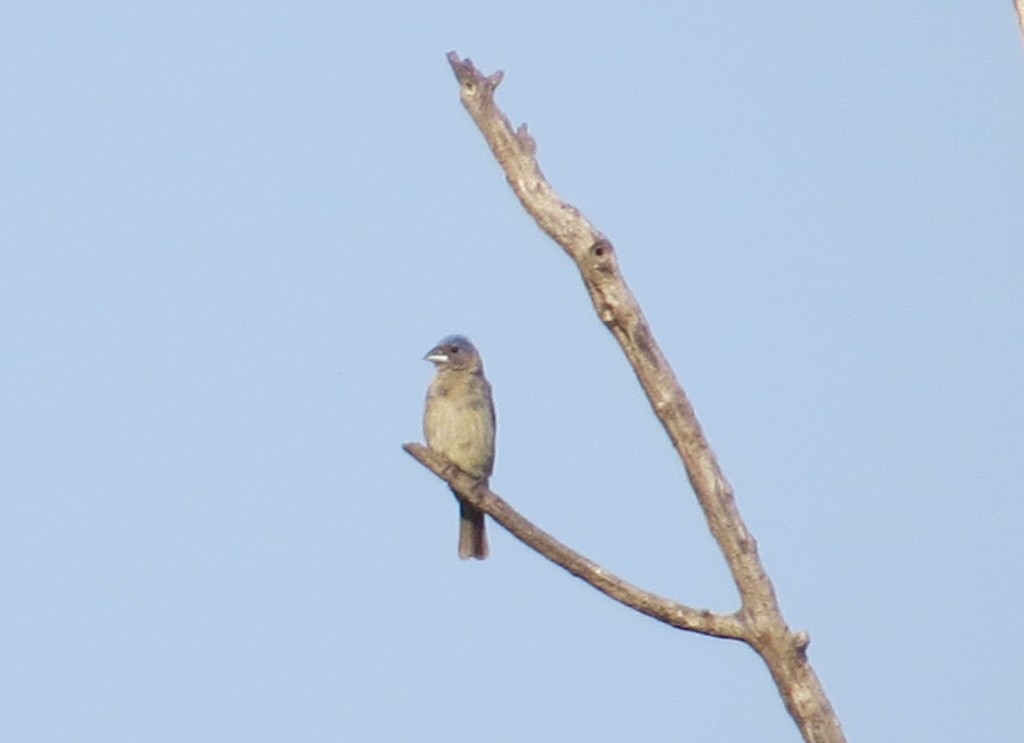
Blue Grosbeak sub-adult male on 270th St. in the trees just south of 840th Ave.
Several birders have made their way to Renville County to find some of these Blue Grosbeaks. What has been phenomenal is that they are turning up more Blue Grosbeaks at these sites and in other counties while en route! One was found in Chippewa County by Ron and Herb that same day, and a family of three was found by Ken Larson to the west in Lac qui Parle County. With this volume of Blue Grosbeaks so far from Rock County, it seems that this species is definitely making its home further north and east than where it is “supposed” to be. Any bit of suitable habitat in the southern half of the state should be investigated by Minnesota birders. I have been studying satellite imagery for any hint of gravel or waste areas in area that is dominated by agricultural fields. I’m particularly interested in finding one here in Kandiyohi County. We are hopeful that one will make the jump six miles north if one hasn’t already.
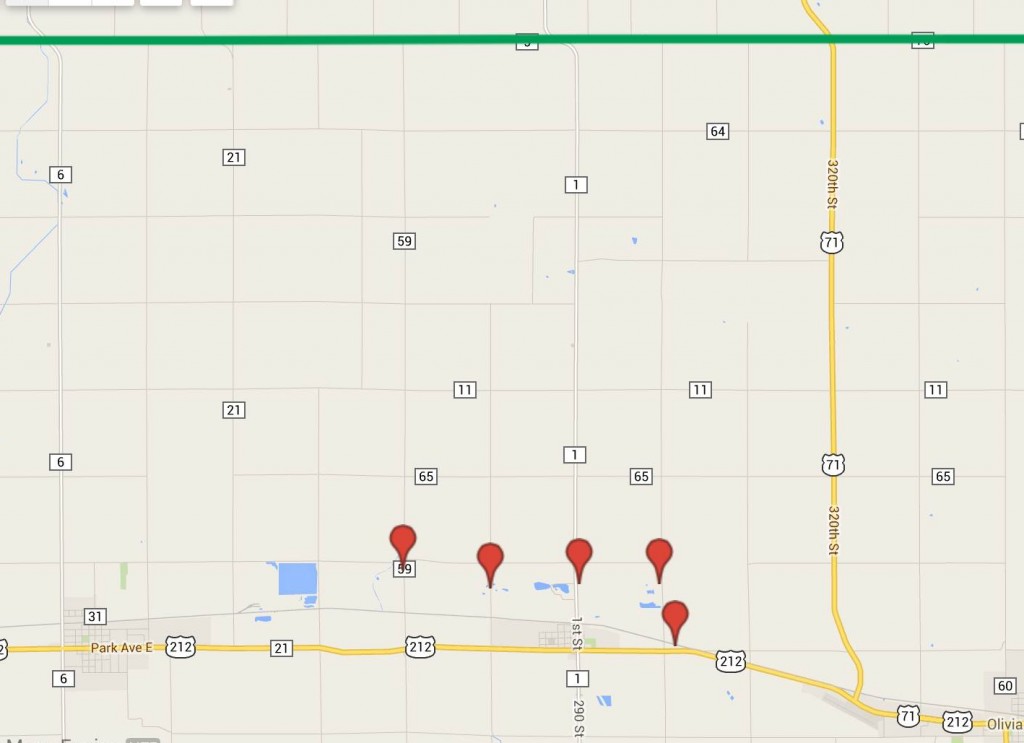
The green line is the Kandiyohi County and Renville County Line – Blue Grosbeaks are only six miles away!
The only problem, though, is that we have no gravel pits to speak of in the southern half of our county. The best and closest habitat, a very large area of several gravel pits, is about 30 miles northeast of all these Grosbeaks.
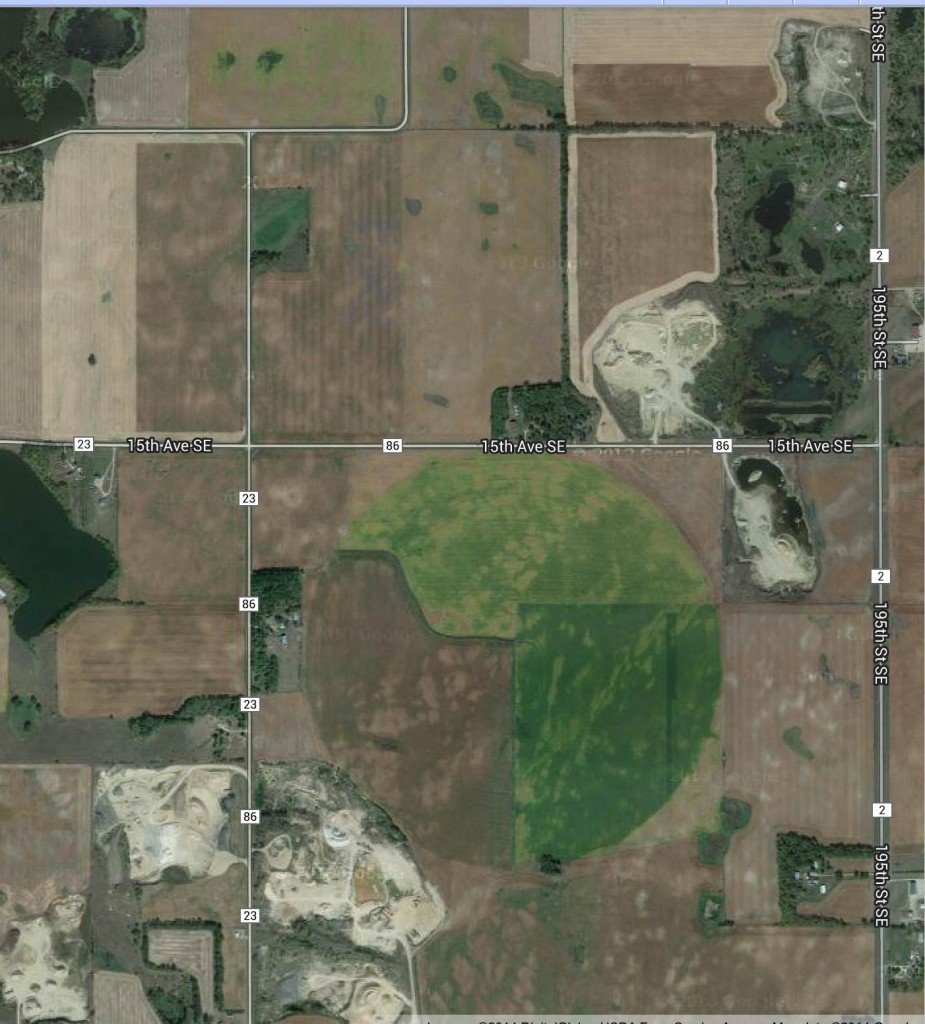
We have already been getting a lot of the necessary permissions to enter these lands to begin our search. Hopefully we can turn one up.
It has been very exciting to not only see Blue Grosbeaks, but to be a witness to a potential range expansion. Evan asked me the other day, “What’s the big deal about the Blue Grosbeak anyway, is it because it has that red wing-patch or something?” Yeah, something like that.
Coming up: cool by-product birds from the Blue Grosbeak searches.

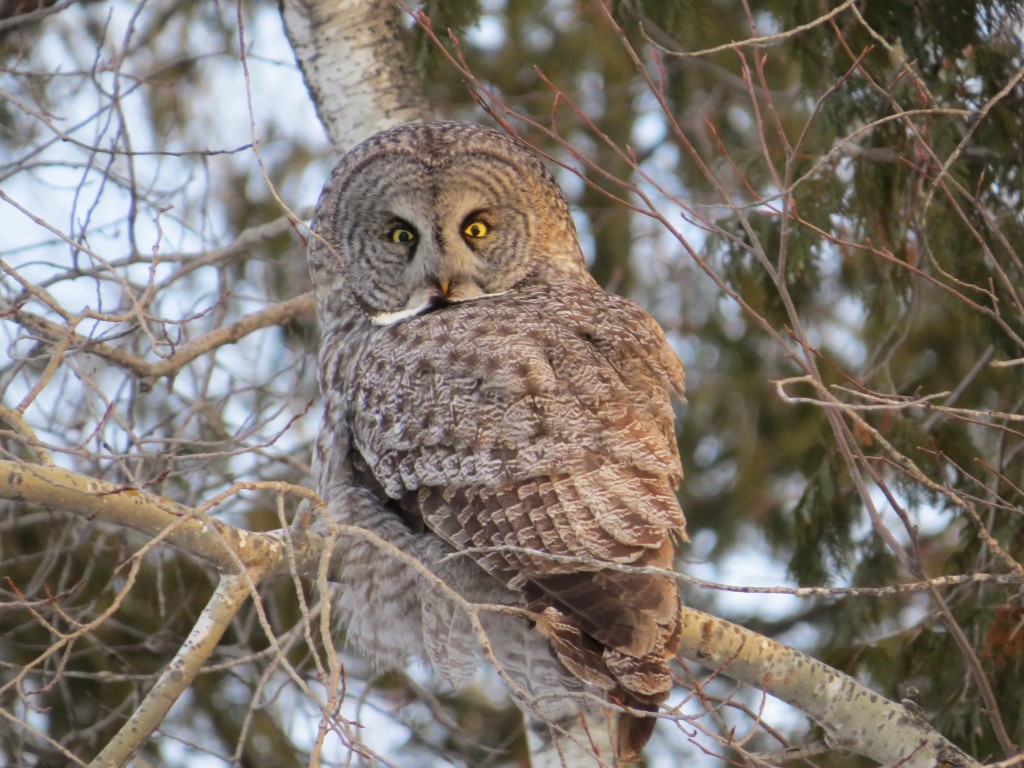
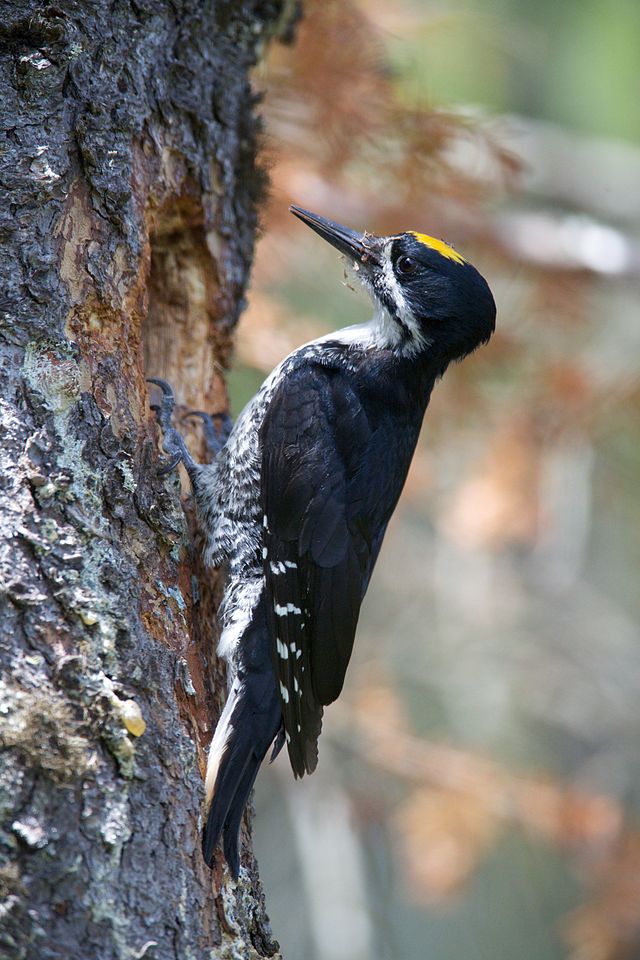
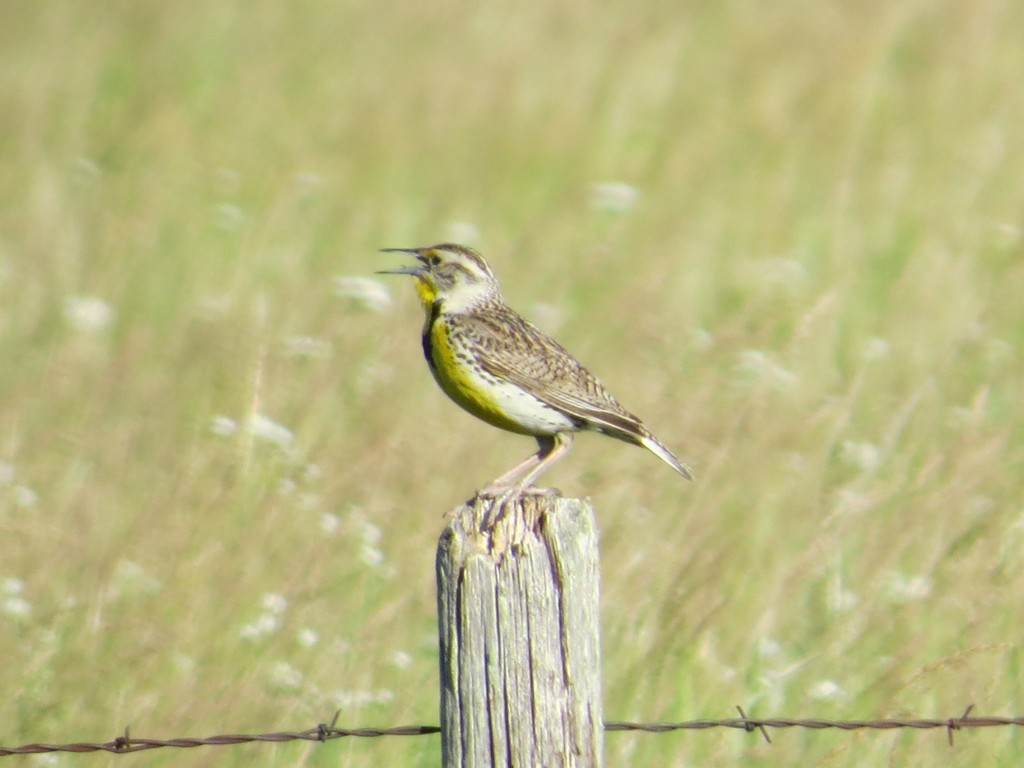
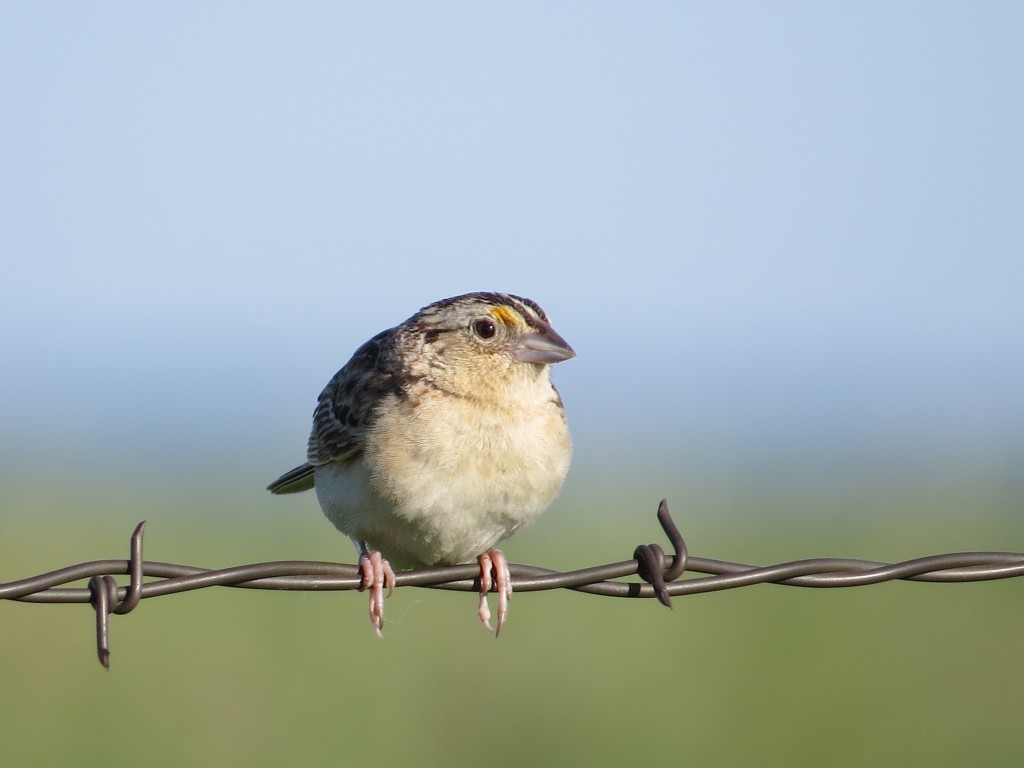
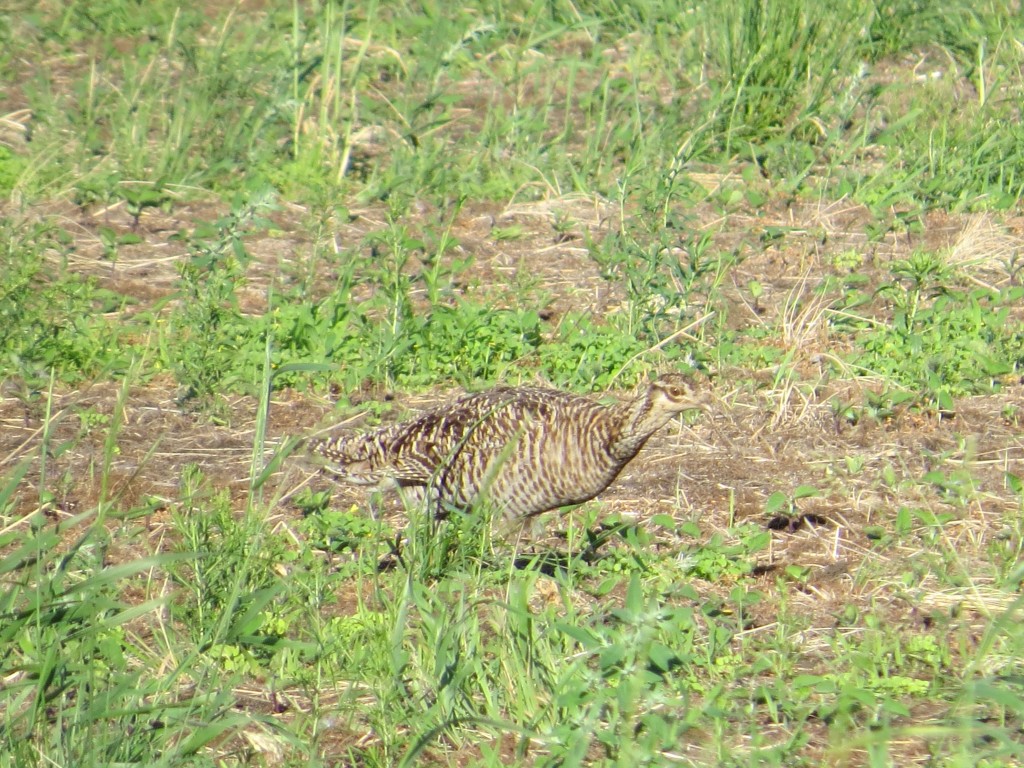
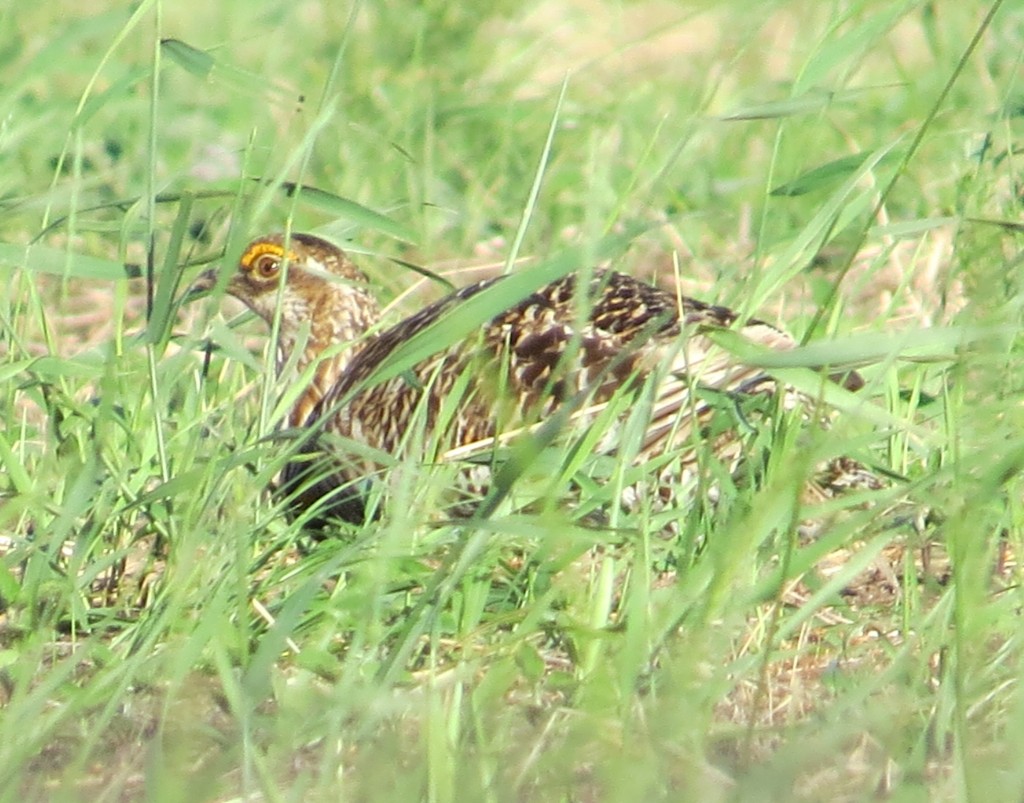
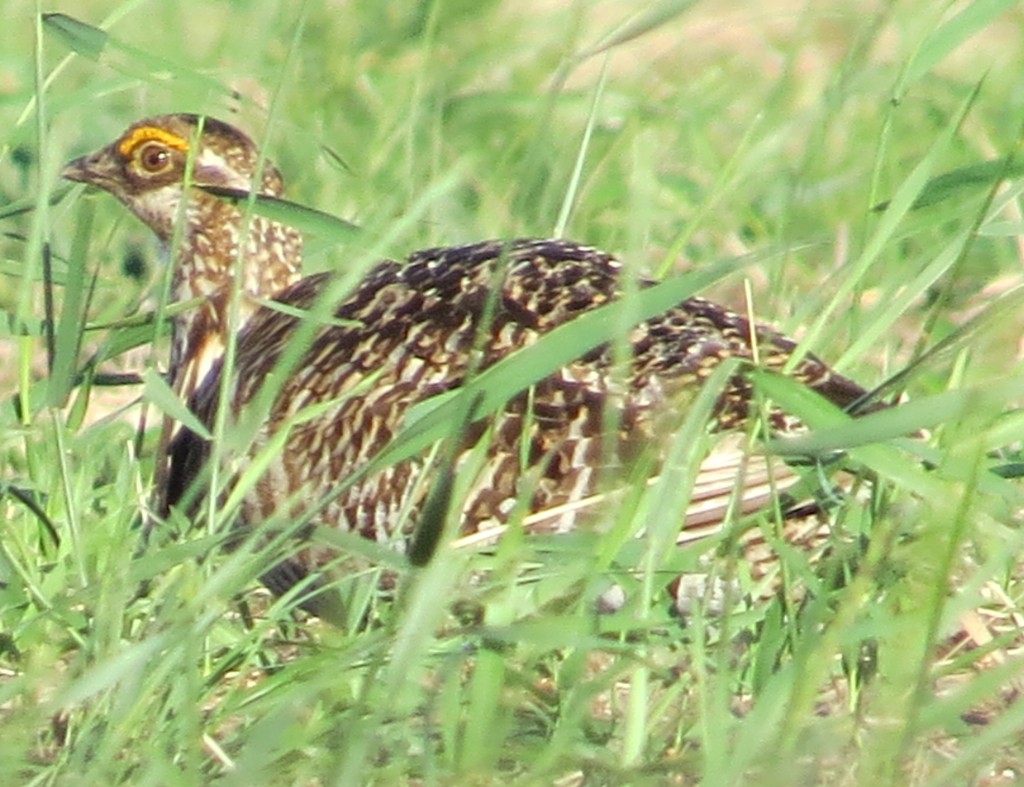
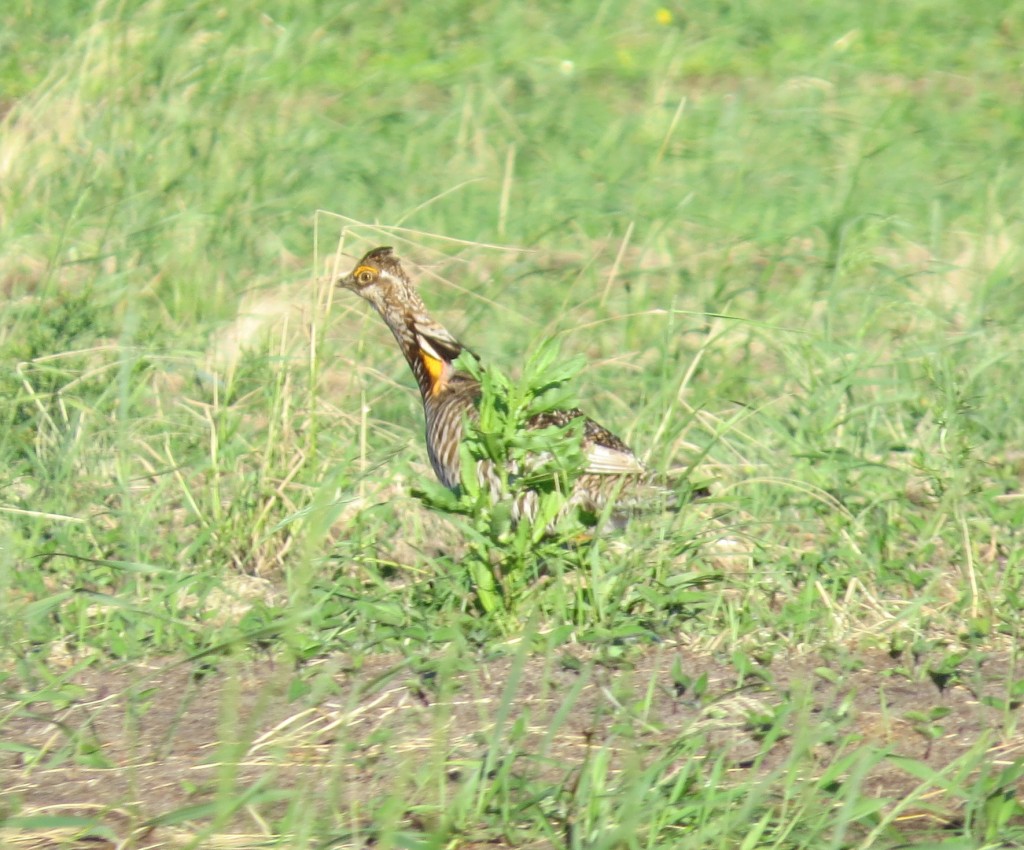 It was a satisfying life bird but not the one we were after. It alone would have made a solid trip. It was also fun to see Marbled Godwits. At first. Then they were everywhere and noisy. Very noisy. It souned like we were at a beach with a bunch of gulls.
It was a satisfying life bird but not the one we were after. It alone would have made a solid trip. It was also fun to see Marbled Godwits. At first. Then they were everywhere and noisy. Very noisy. It souned like we were at a beach with a bunch of gulls.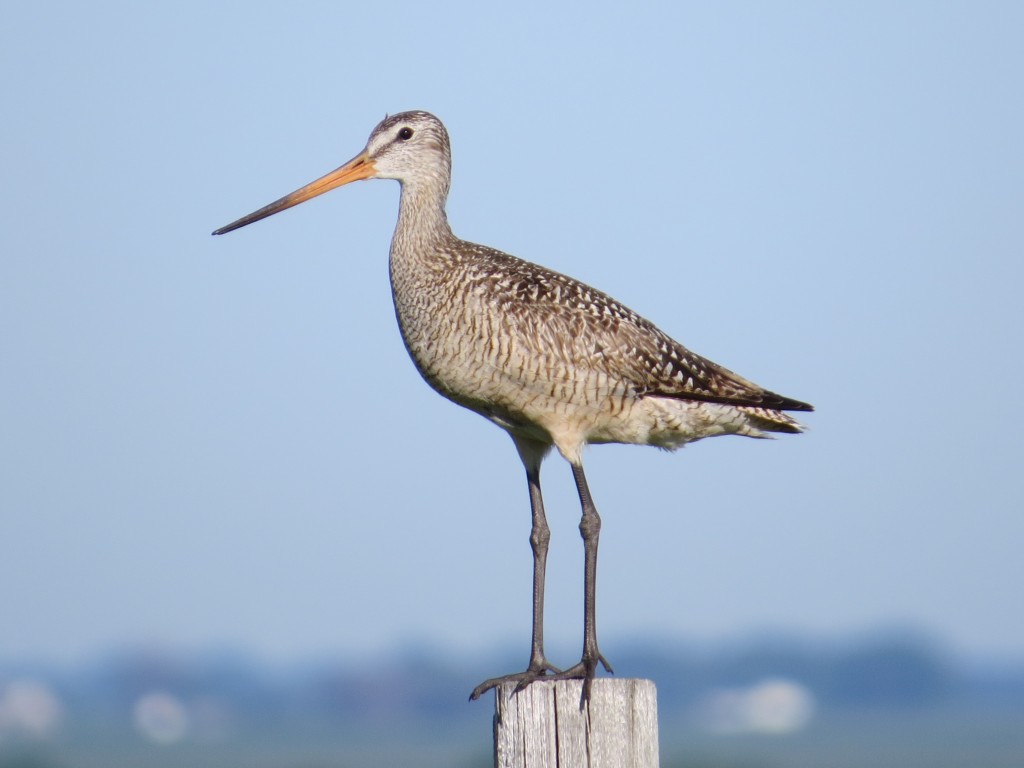
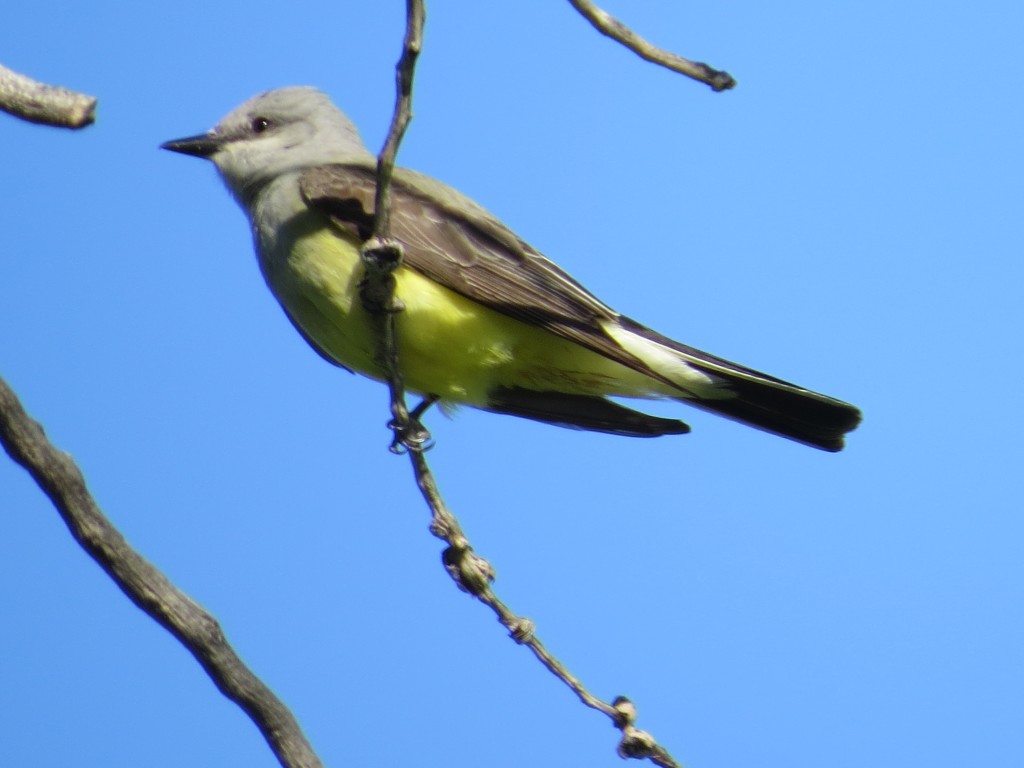
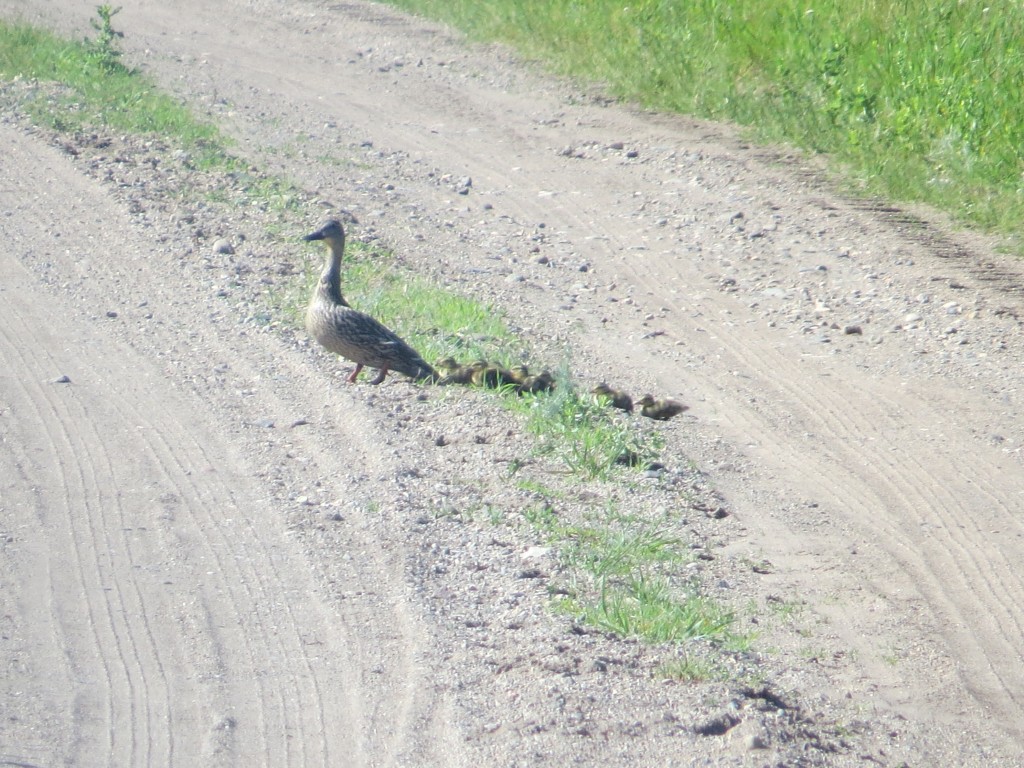
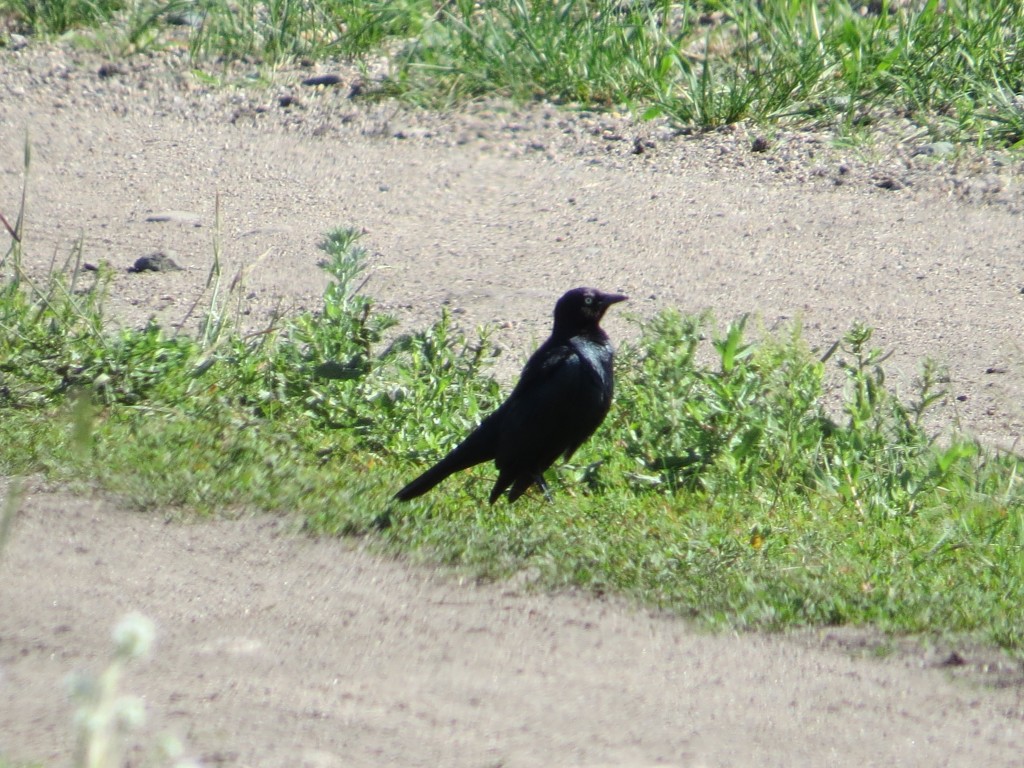
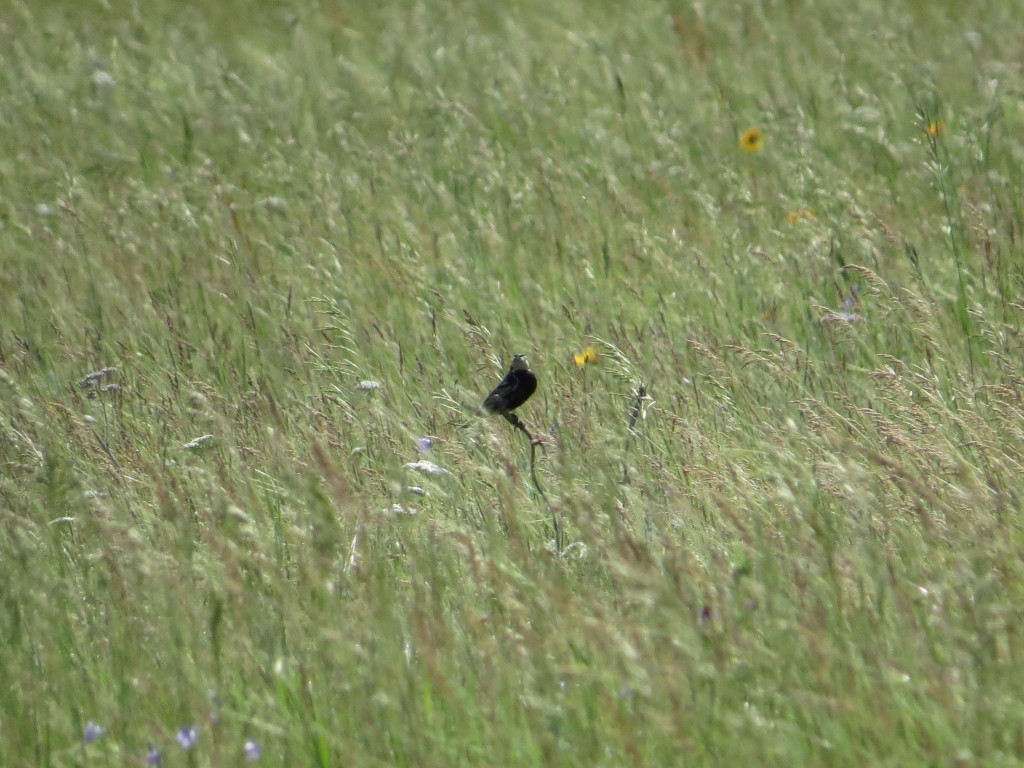
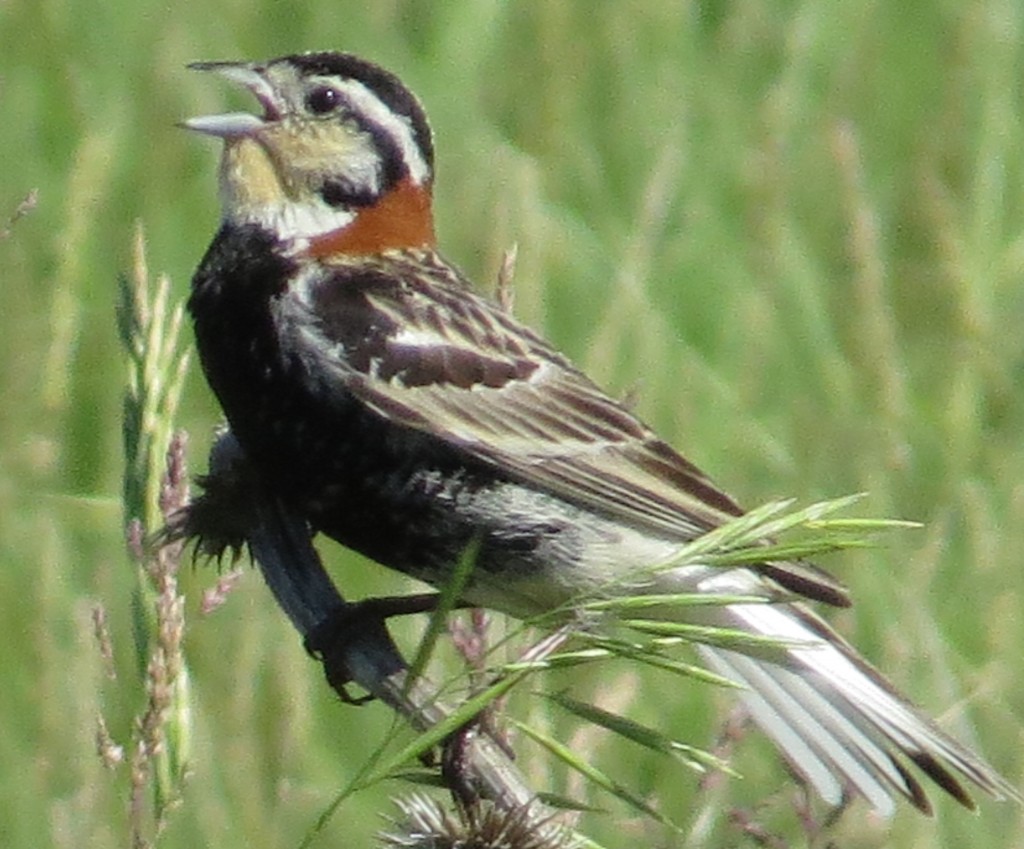
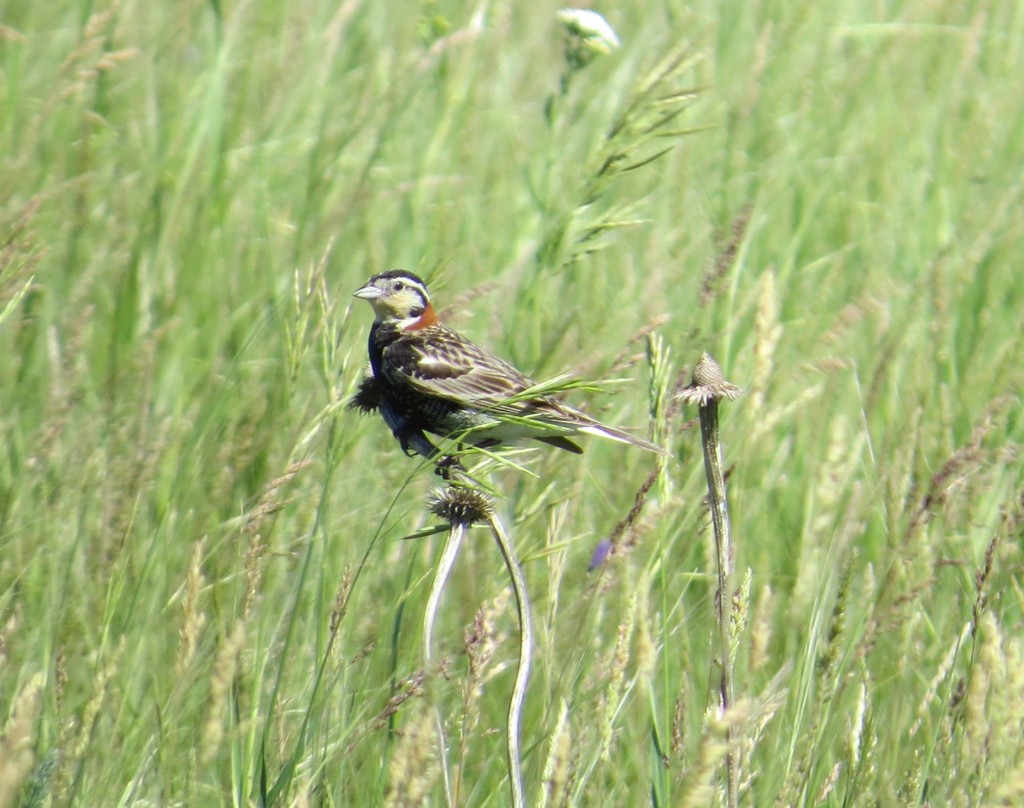
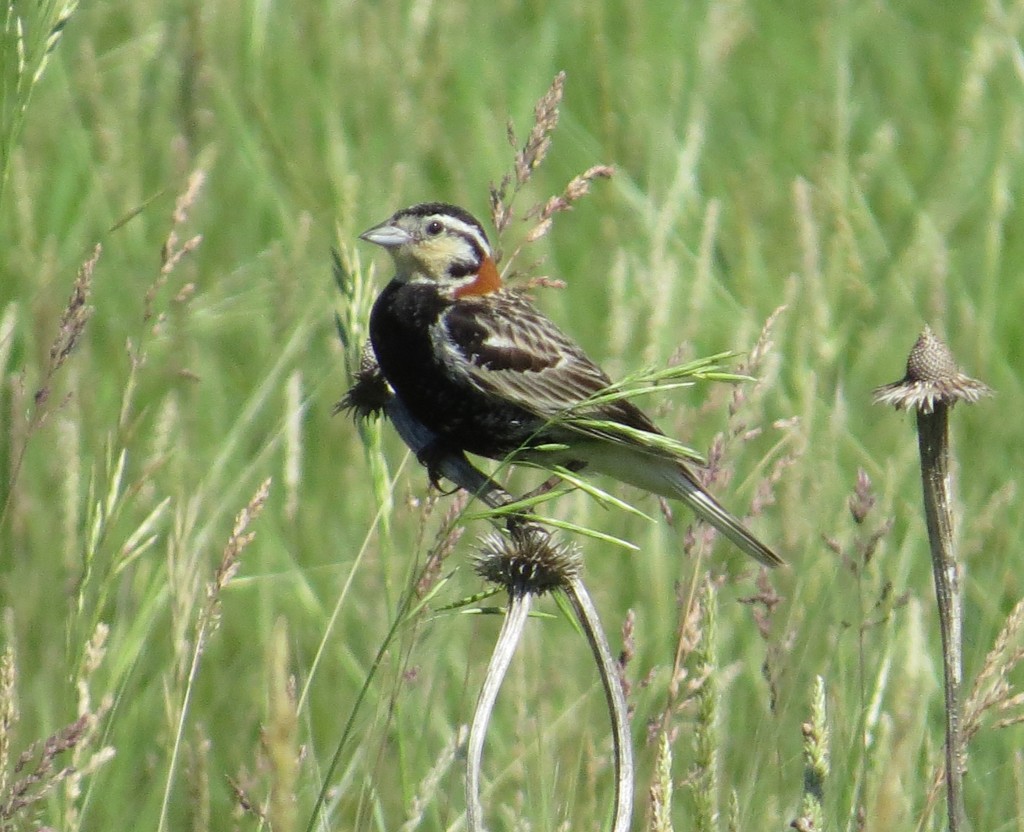
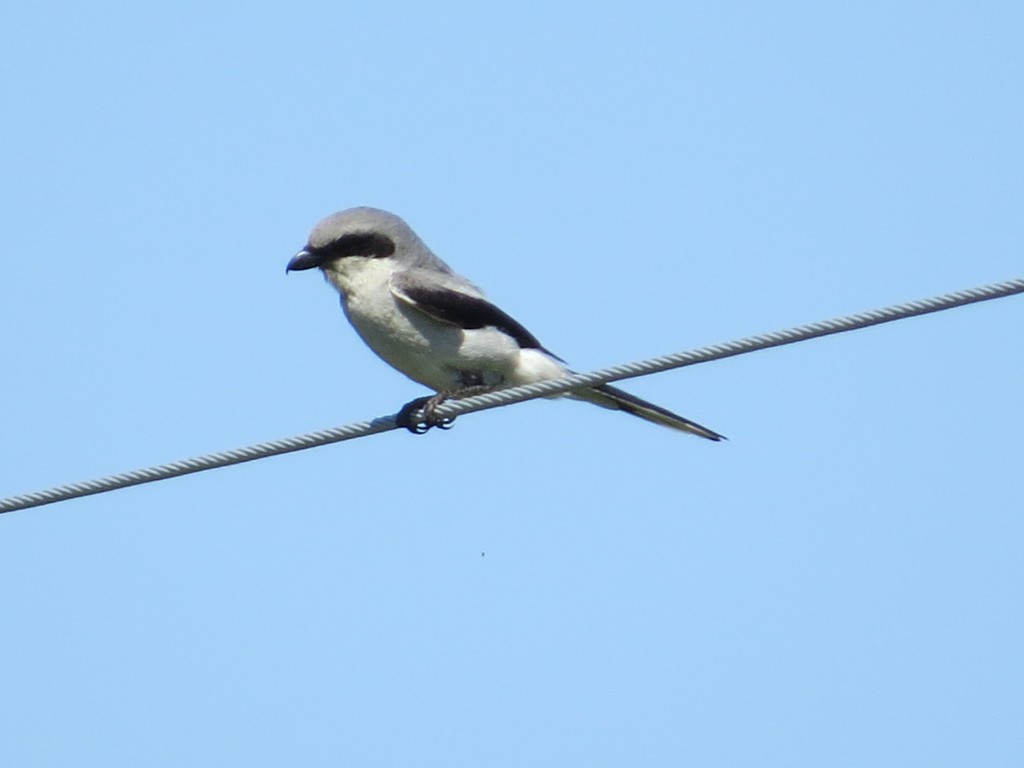
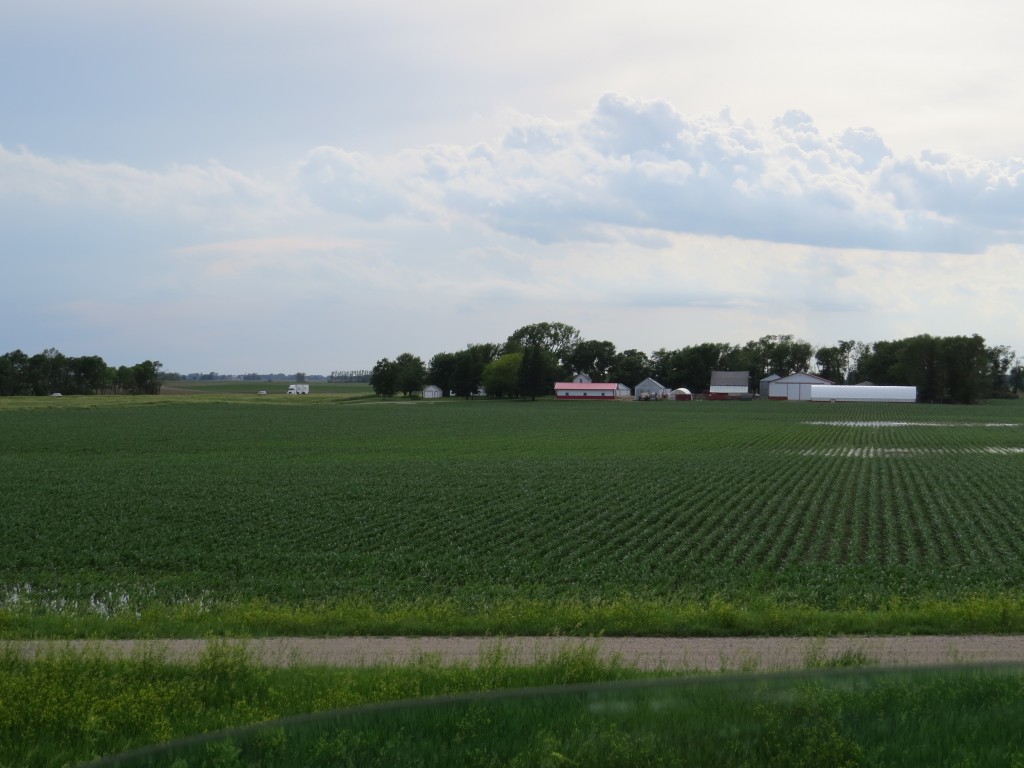
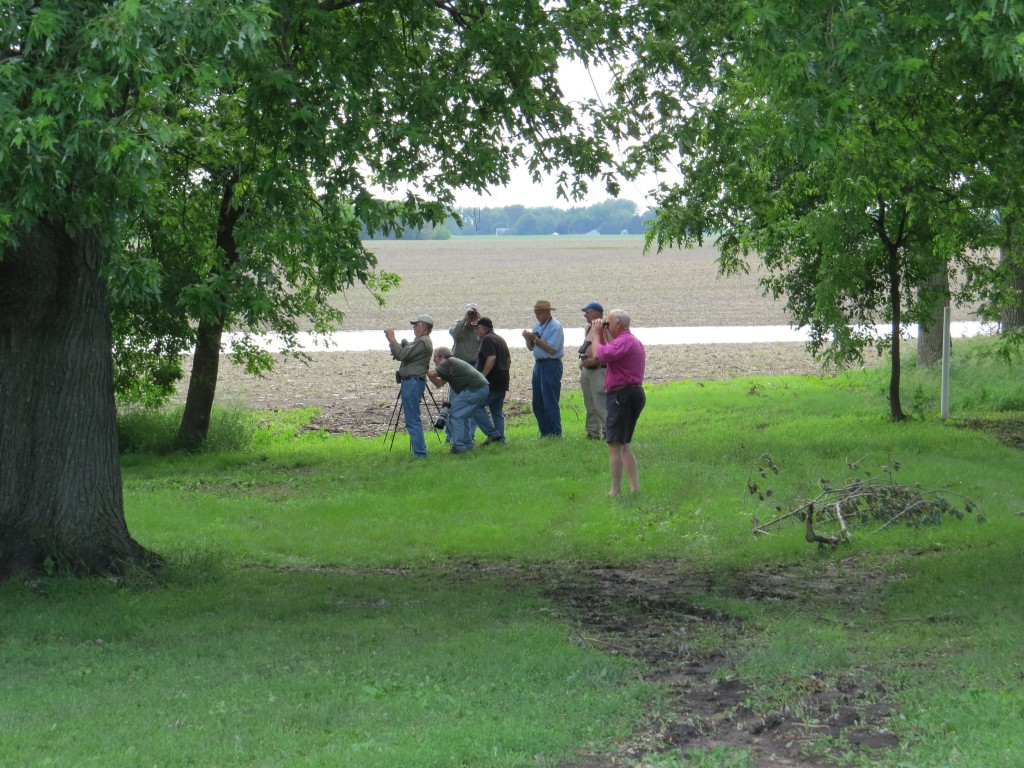 It was quite a party. Everyone was pretty excited. Marin picked up on the palpable excitement as she asked, “What are all these guys so excited about?”
It was quite a party. Everyone was pretty excited. Marin picked up on the palpable excitement as she asked, “What are all these guys so excited about?”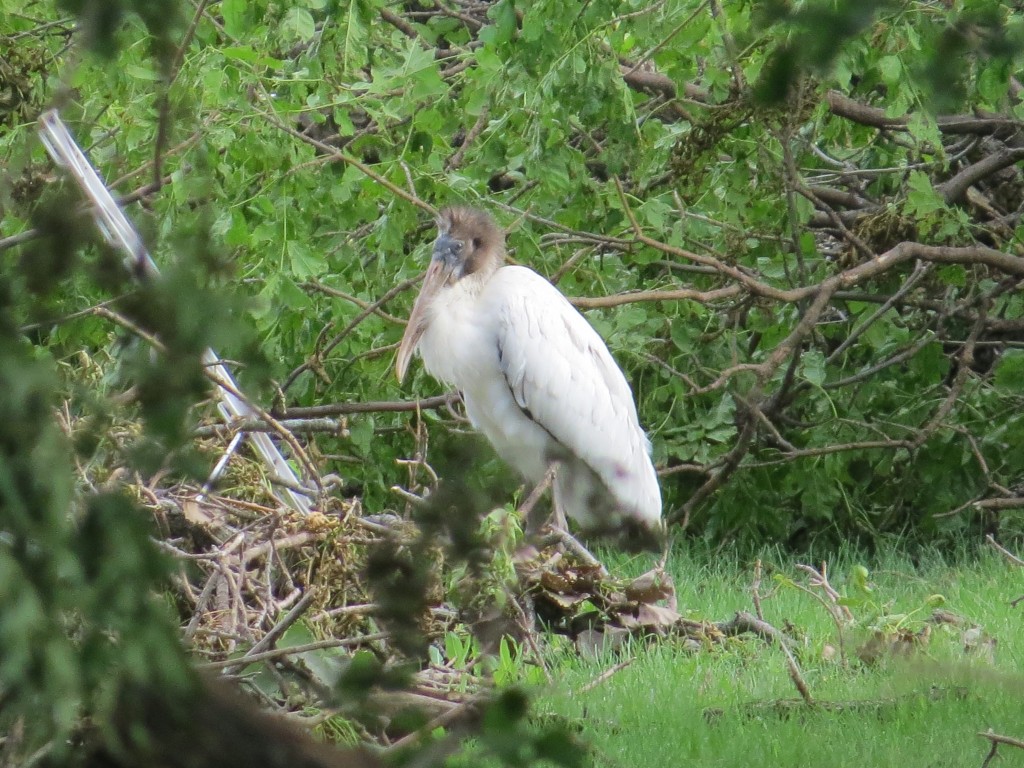
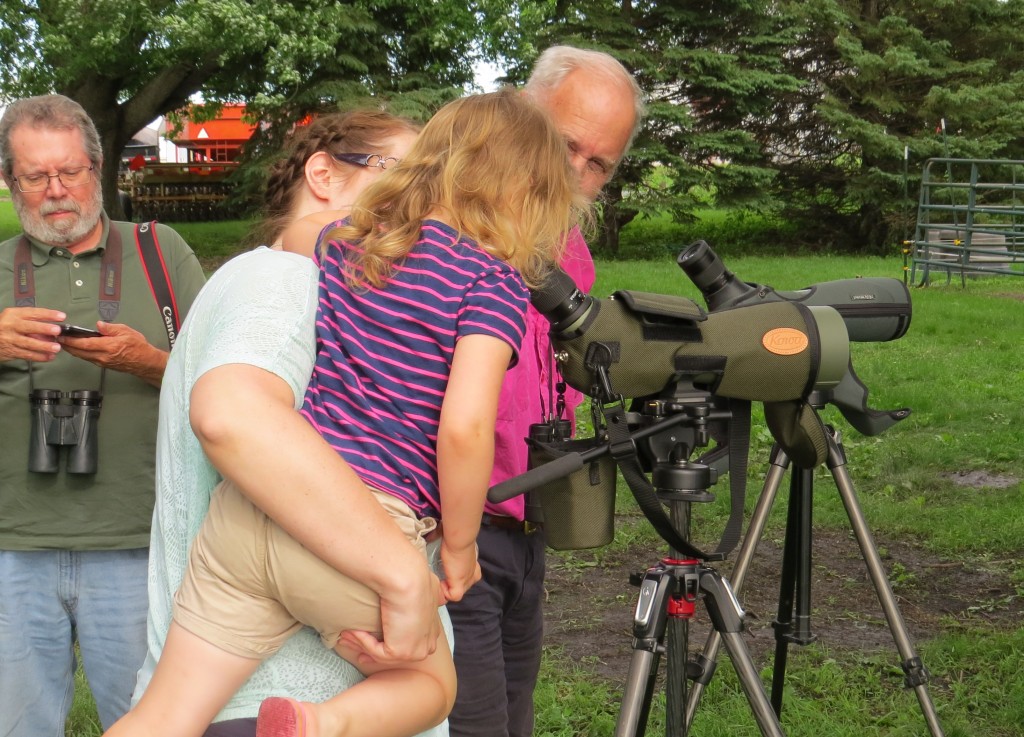
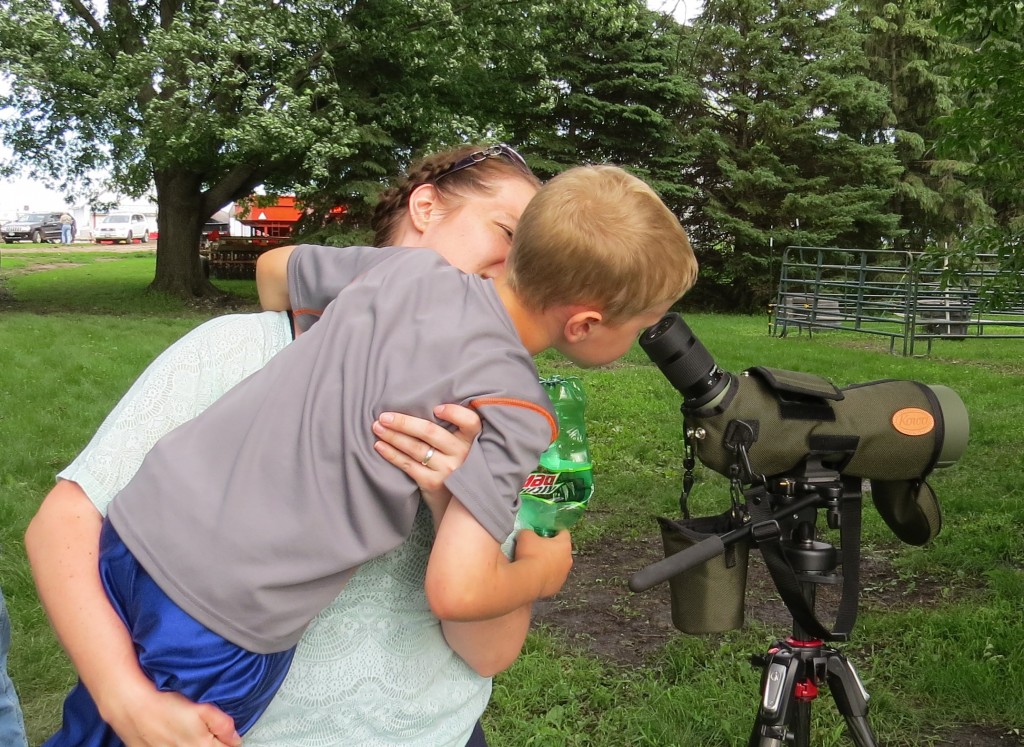

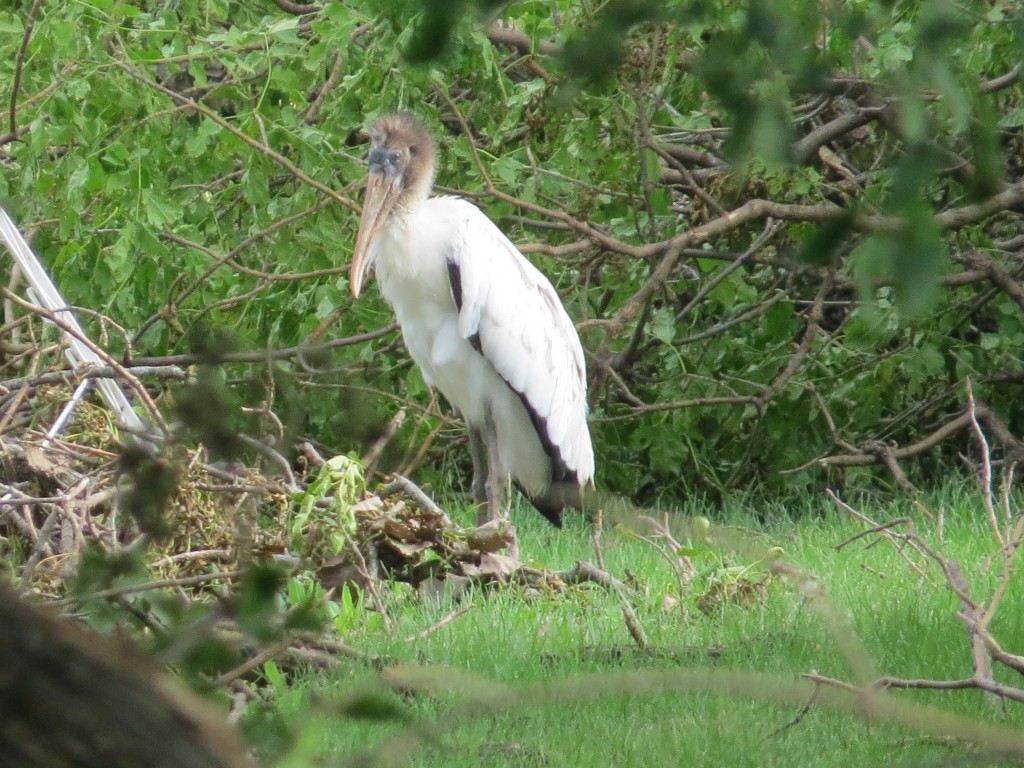
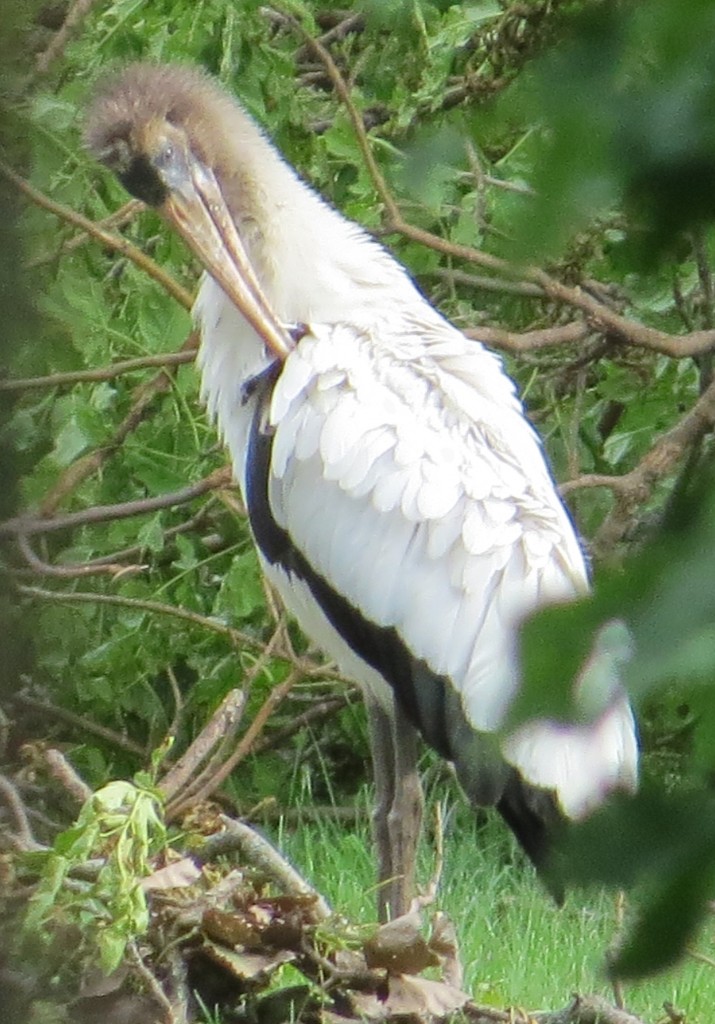 While I photographed the bird, Melissa and the kids went with Randy to check out some of the farmyard animals. Apparently I missed Marin nearly get attacked by this giant rooster when it was chasing her while she ran, unbeknownst to Marin. The ensuing screams would have likely scared away the stork, and I would have been banished from the birding circles of which I participate. Thankfully Melissa thwarted the attack by getting Marin to stop running which then stopped the rooster from chasing her. By doing so, she was able to keep the screams and stork at bay, keeping Minnesota birders happy and my reputation intact.
While I photographed the bird, Melissa and the kids went with Randy to check out some of the farmyard animals. Apparently I missed Marin nearly get attacked by this giant rooster when it was chasing her while she ran, unbeknownst to Marin. The ensuing screams would have likely scared away the stork, and I would have been banished from the birding circles of which I participate. Thankfully Melissa thwarted the attack by getting Marin to stop running which then stopped the rooster from chasing her. By doing so, she was able to keep the screams and stork at bay, keeping Minnesota birders happy and my reputation intact.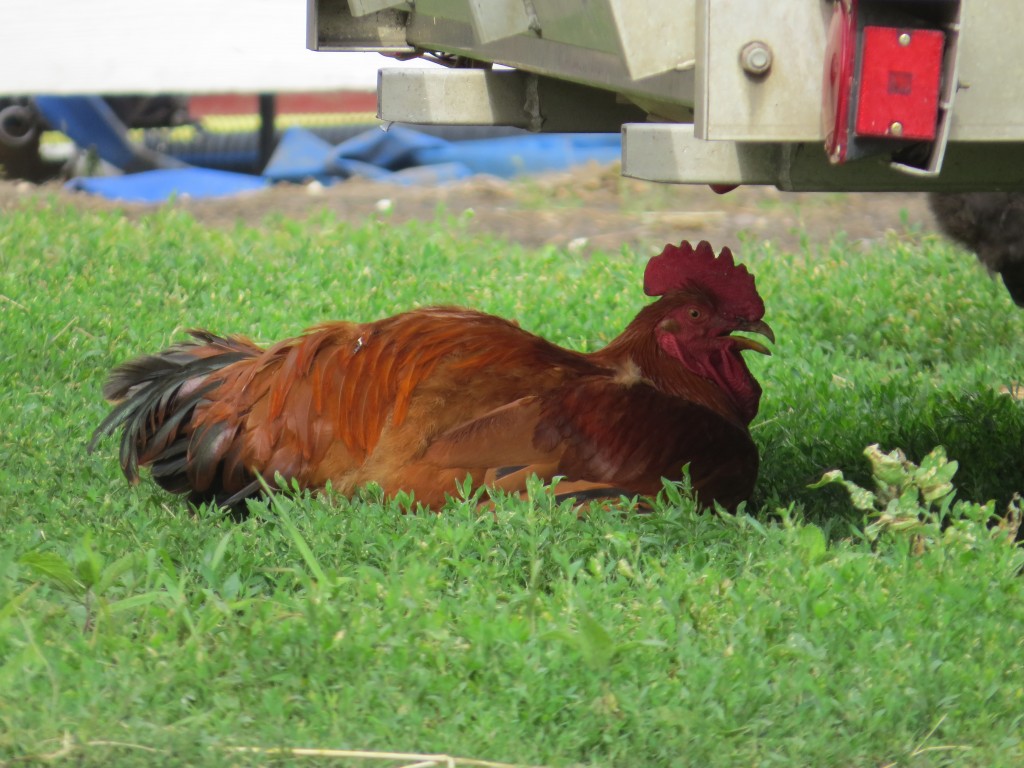
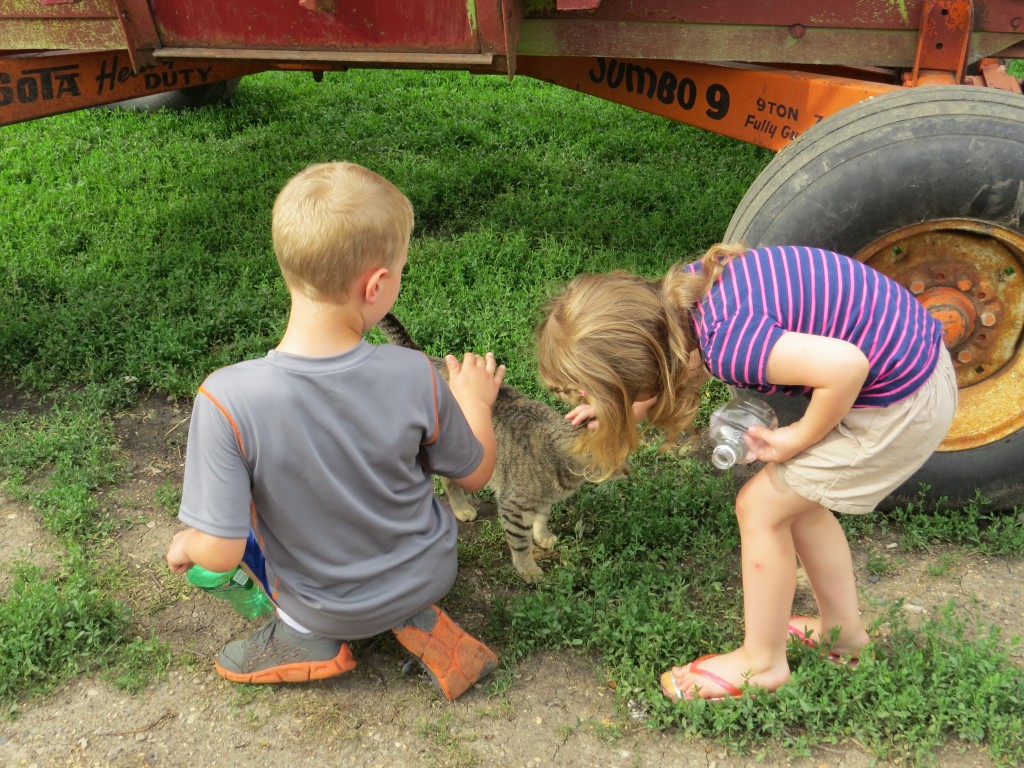
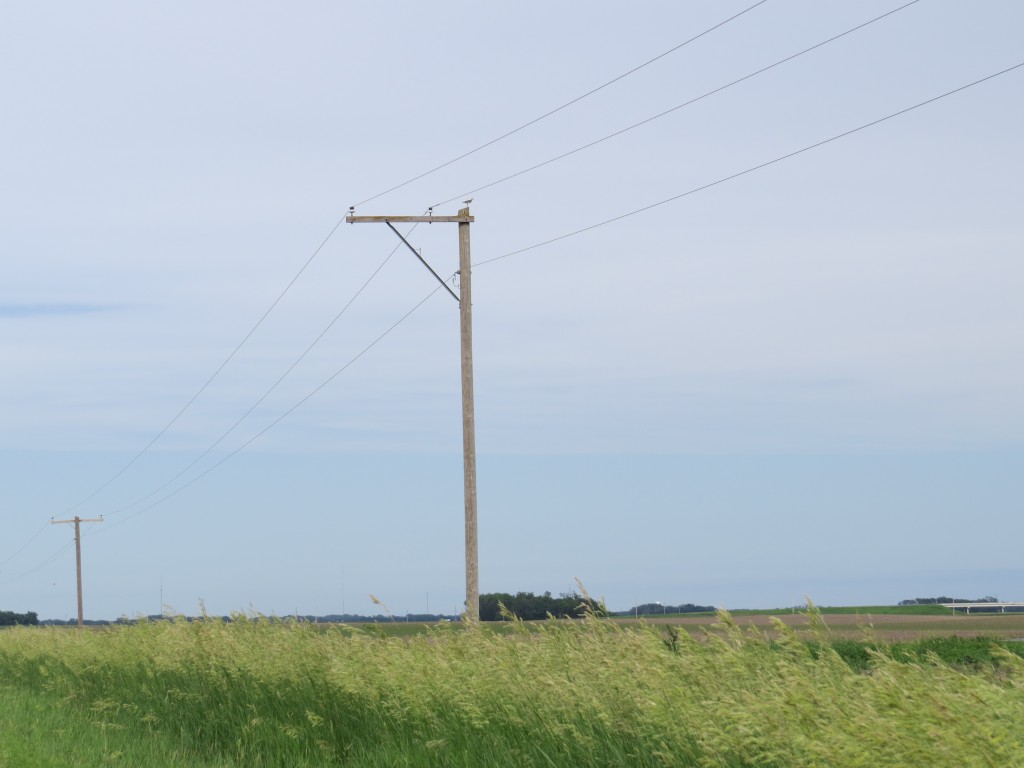
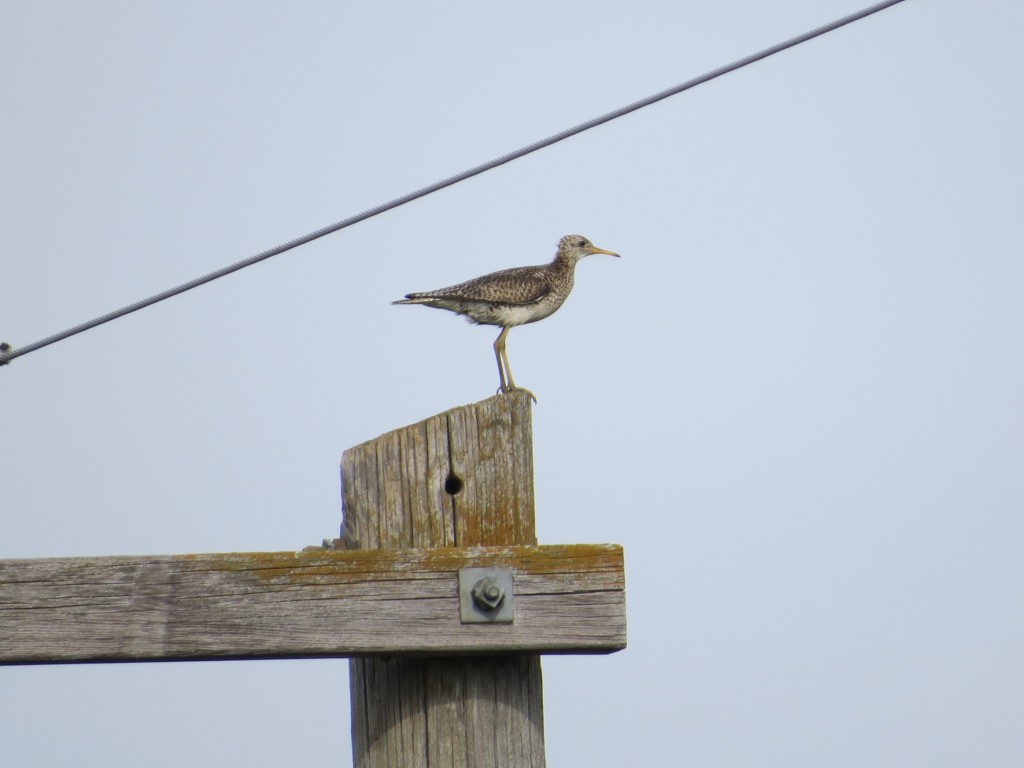 It was finally time to head home on the 3-hour return trip. The visiting continued, but this time it was Marin who was talking everyone’s ear off and thoroughly thriving on the attention of a new person in the car. By the time we got home our bodies and ears were tired. It had been a whirlwind 7-hour adventure. But it was a lot of fun to do something spur of the moment and witness something unique as a family. I told Melissa that it’s probably the closest thing she’ll get to experiencing a flash mob like she’s always wanted to see.
It was finally time to head home on the 3-hour return trip. The visiting continued, but this time it was Marin who was talking everyone’s ear off and thoroughly thriving on the attention of a new person in the car. By the time we got home our bodies and ears were tired. It had been a whirlwind 7-hour adventure. But it was a lot of fun to do something spur of the moment and witness something unique as a family. I told Melissa that it’s probably the closest thing she’ll get to experiencing a flash mob like she’s always wanted to see.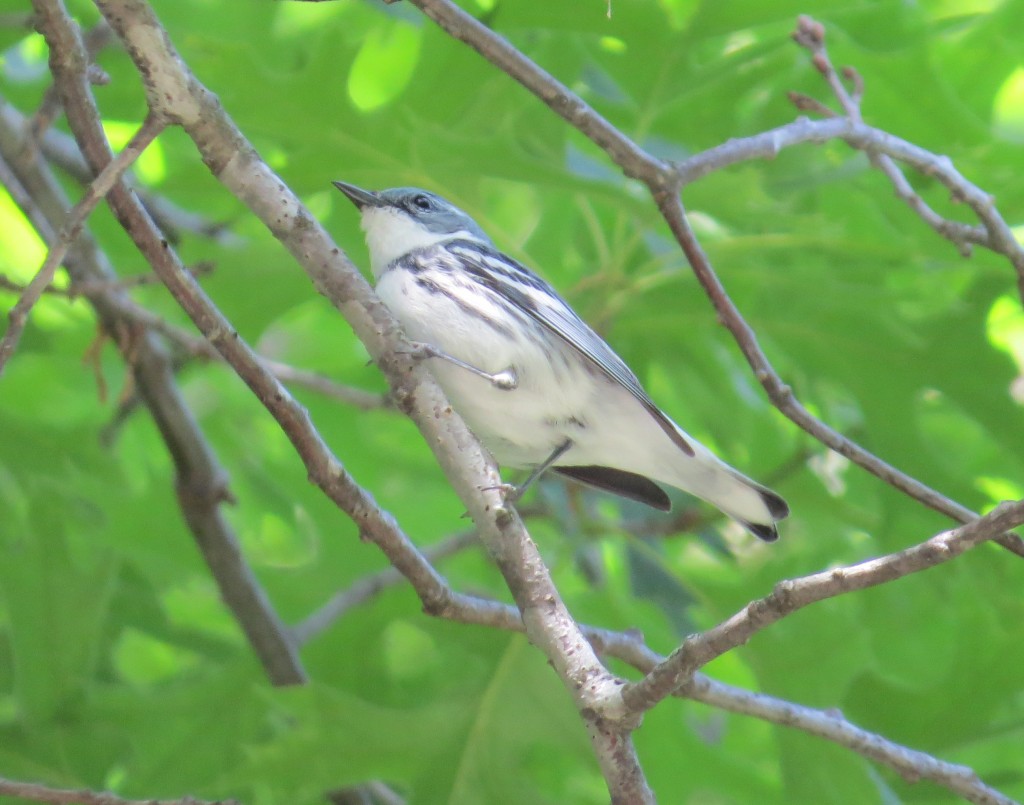
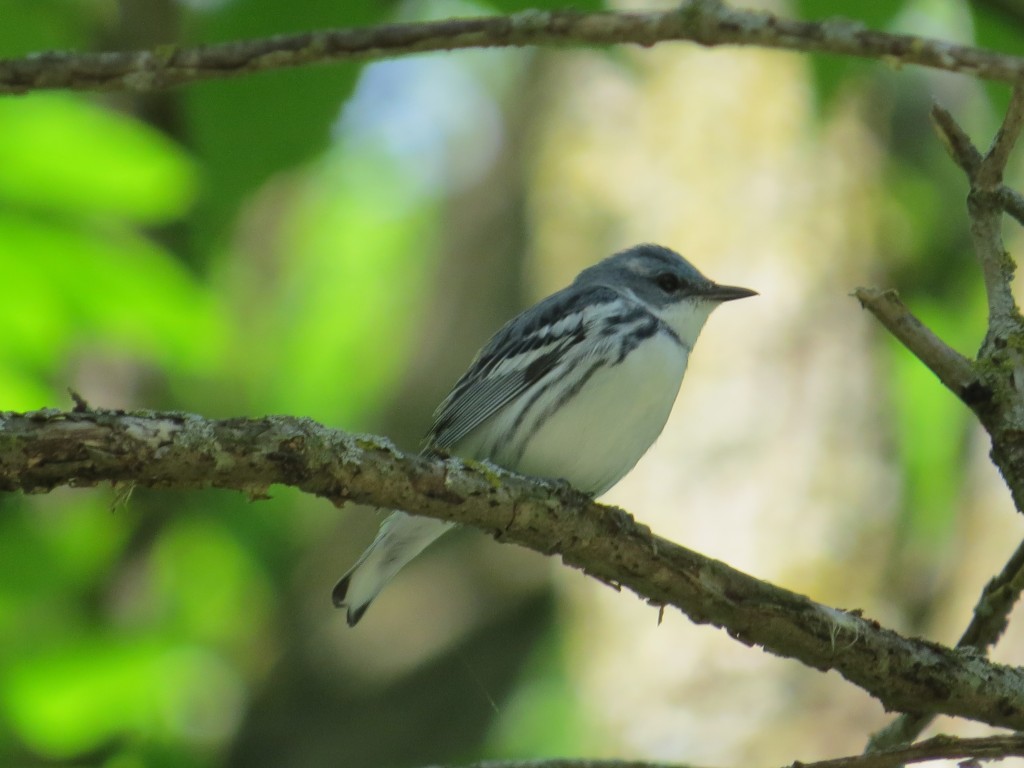
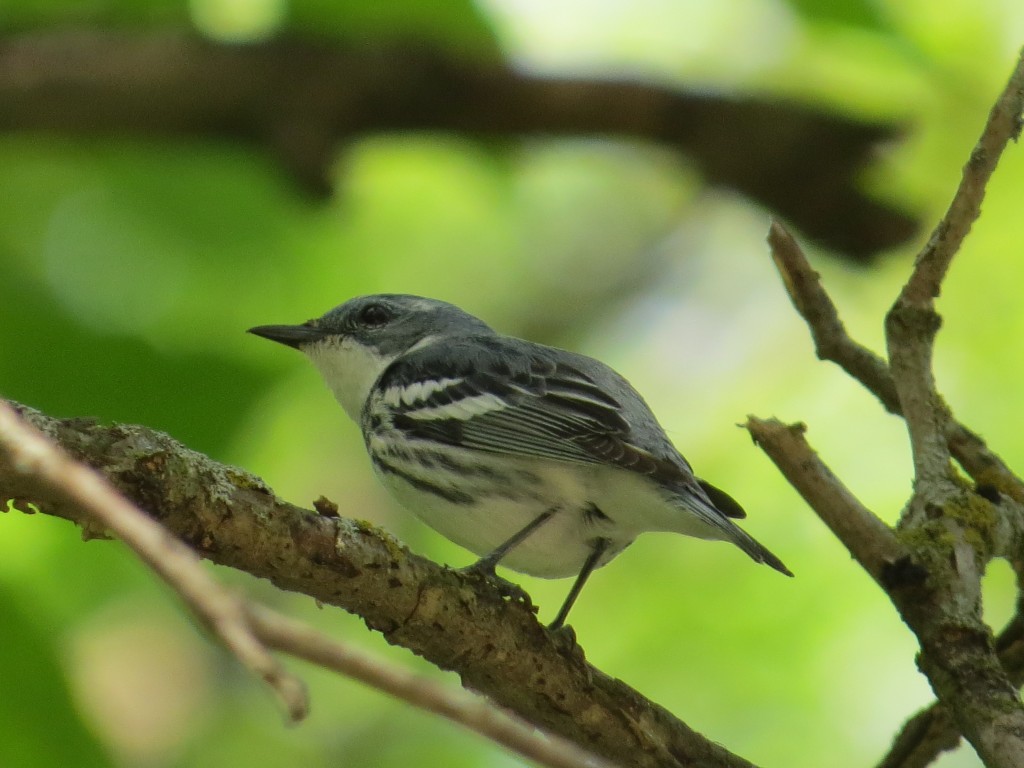
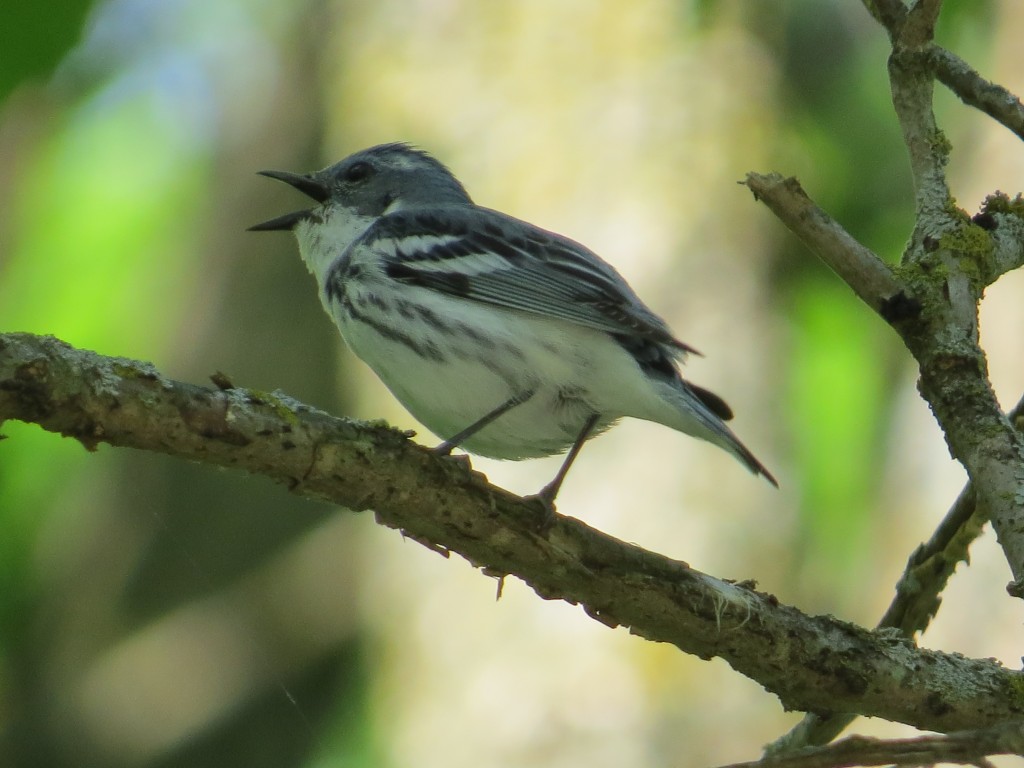
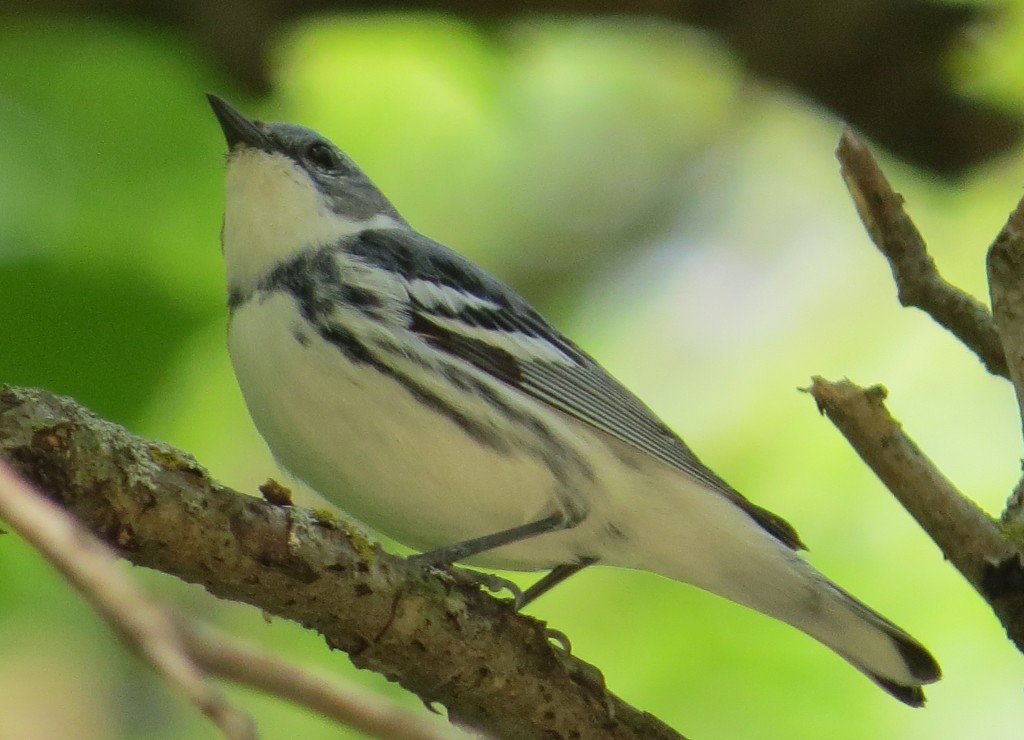
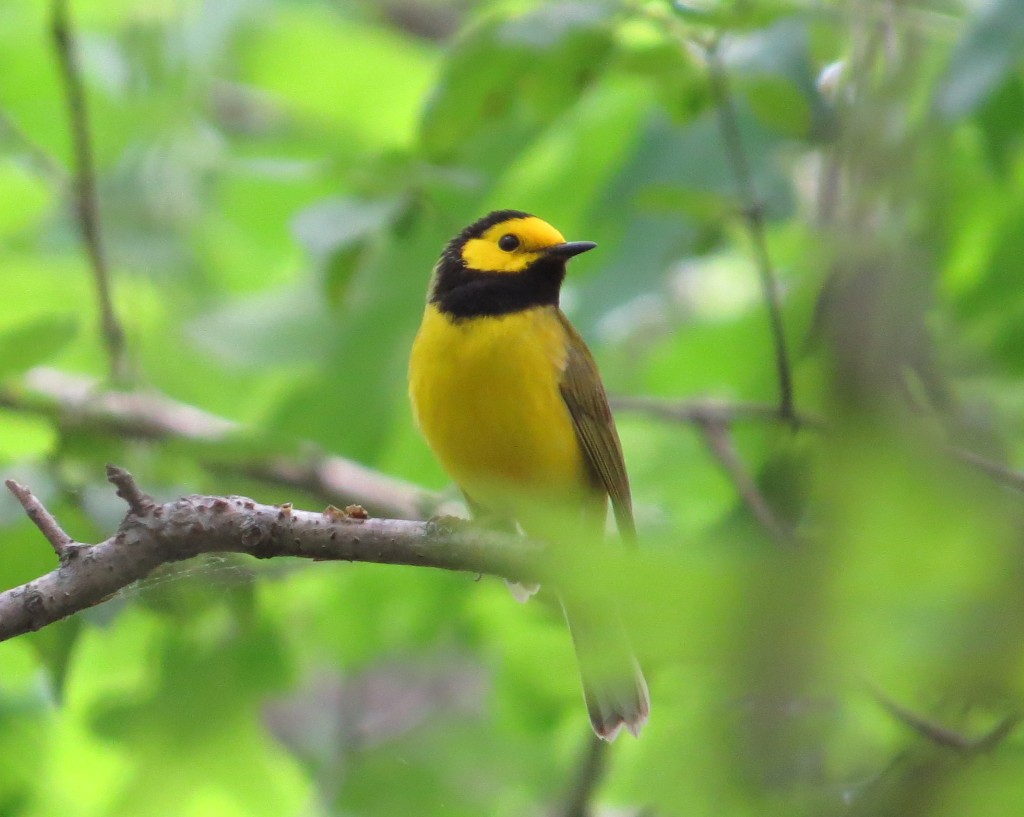
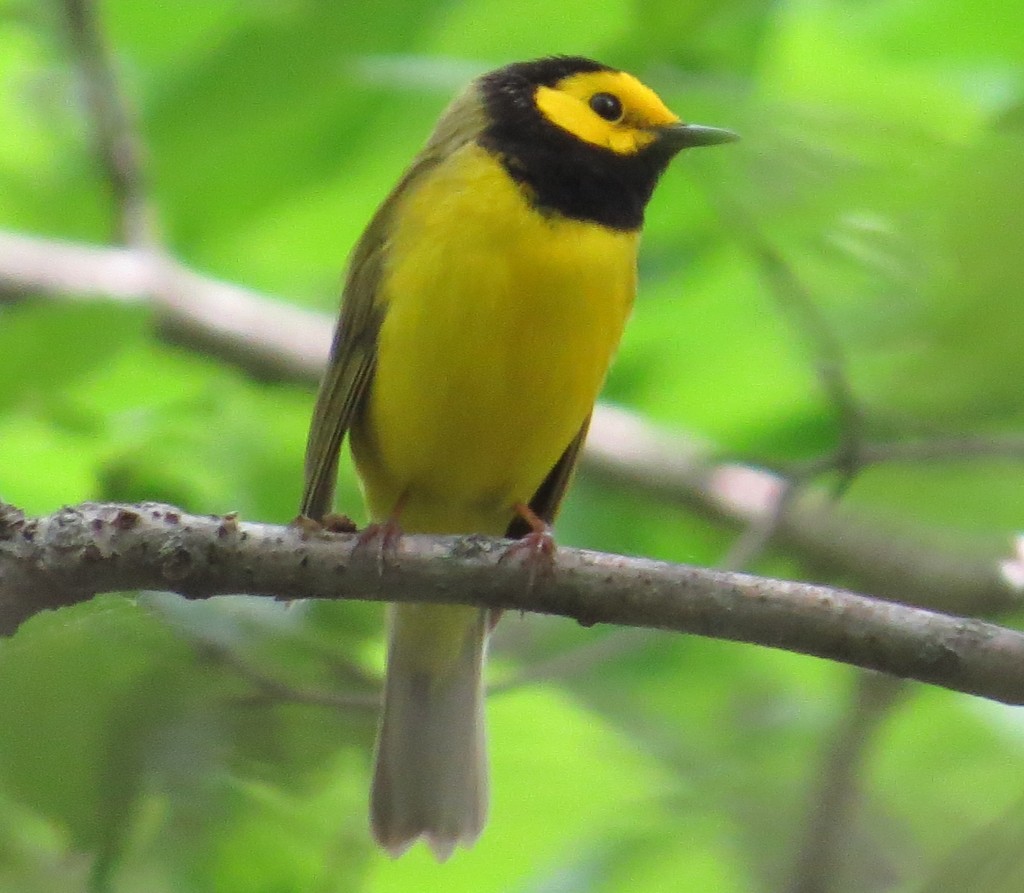
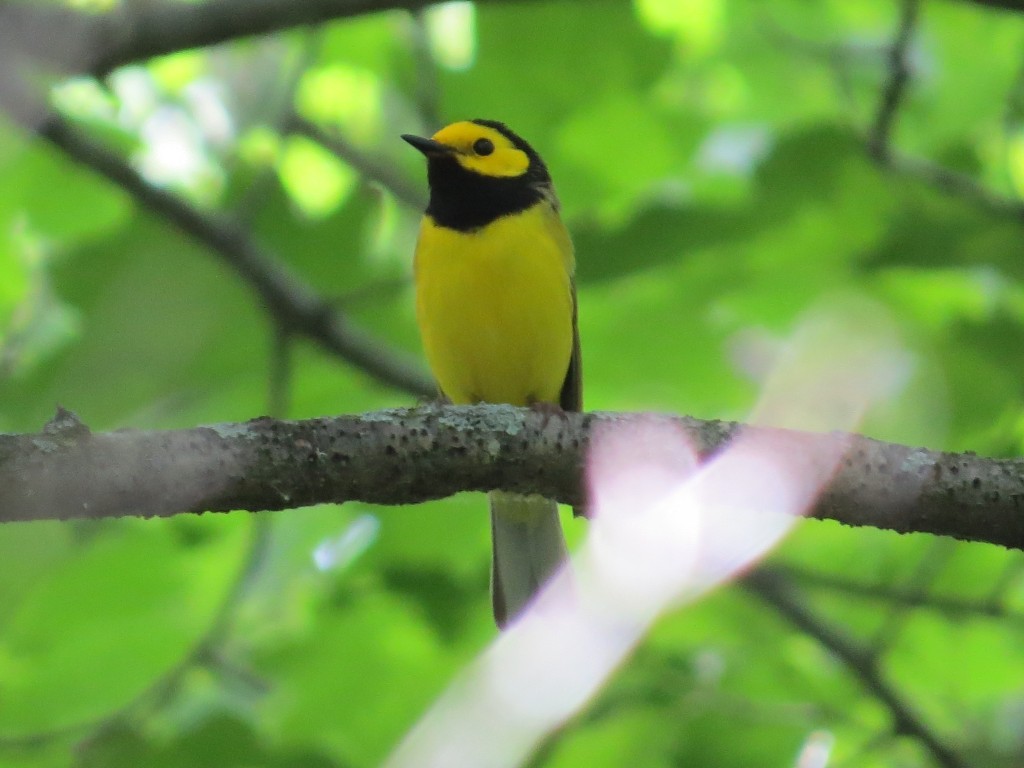
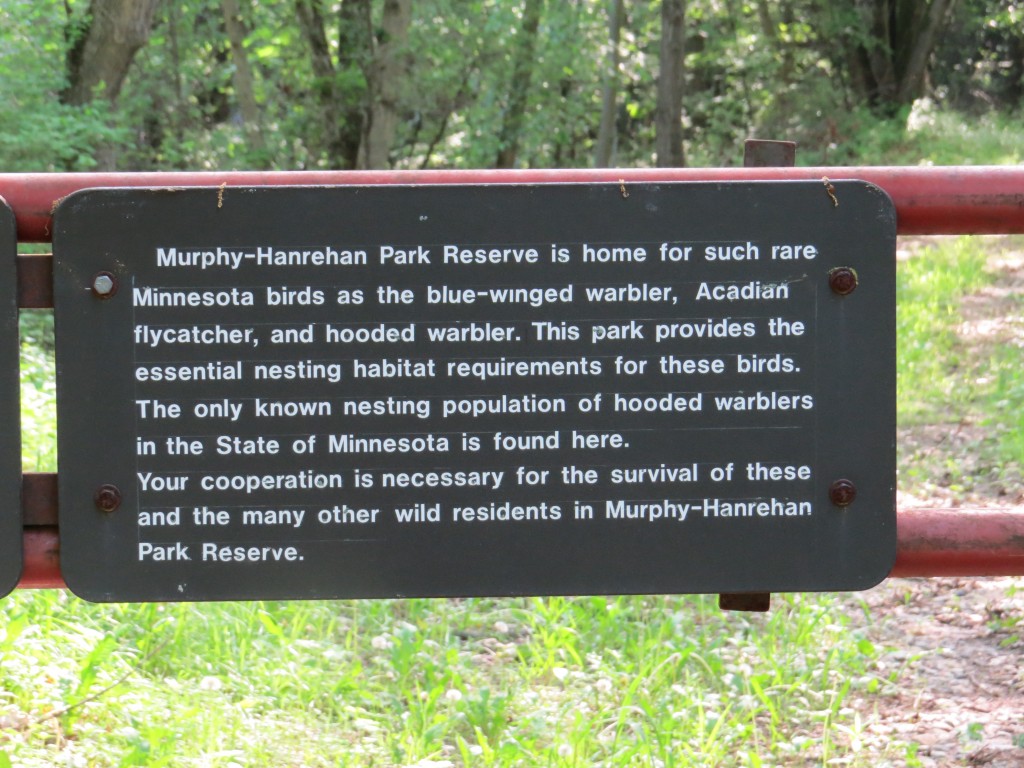
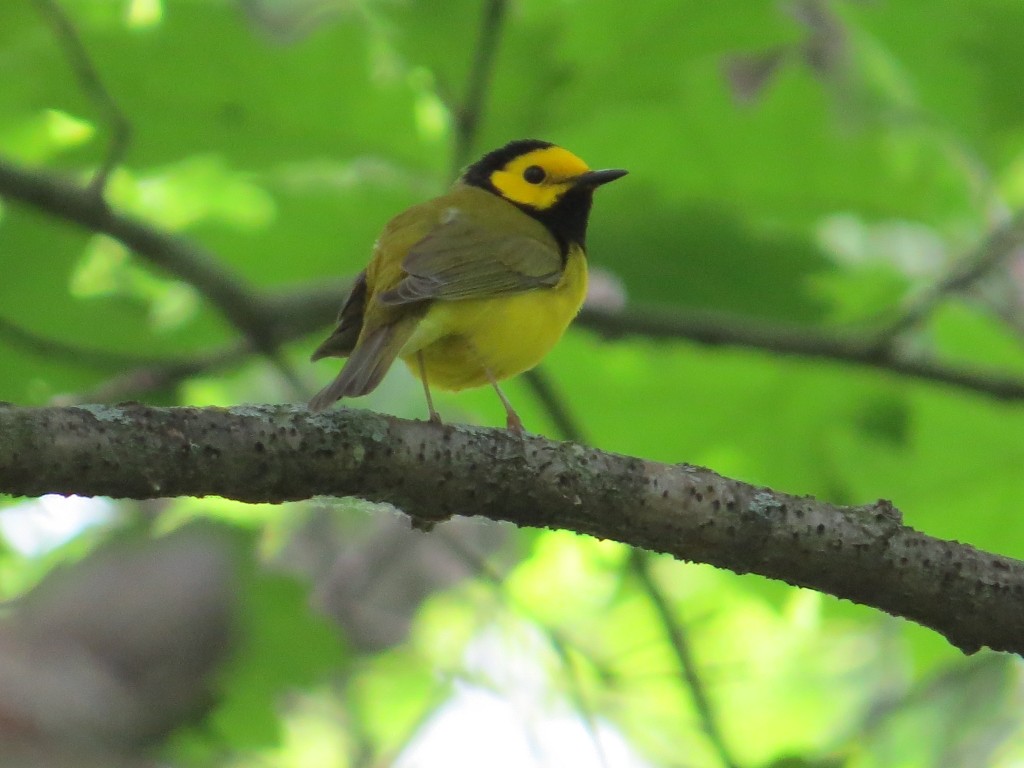
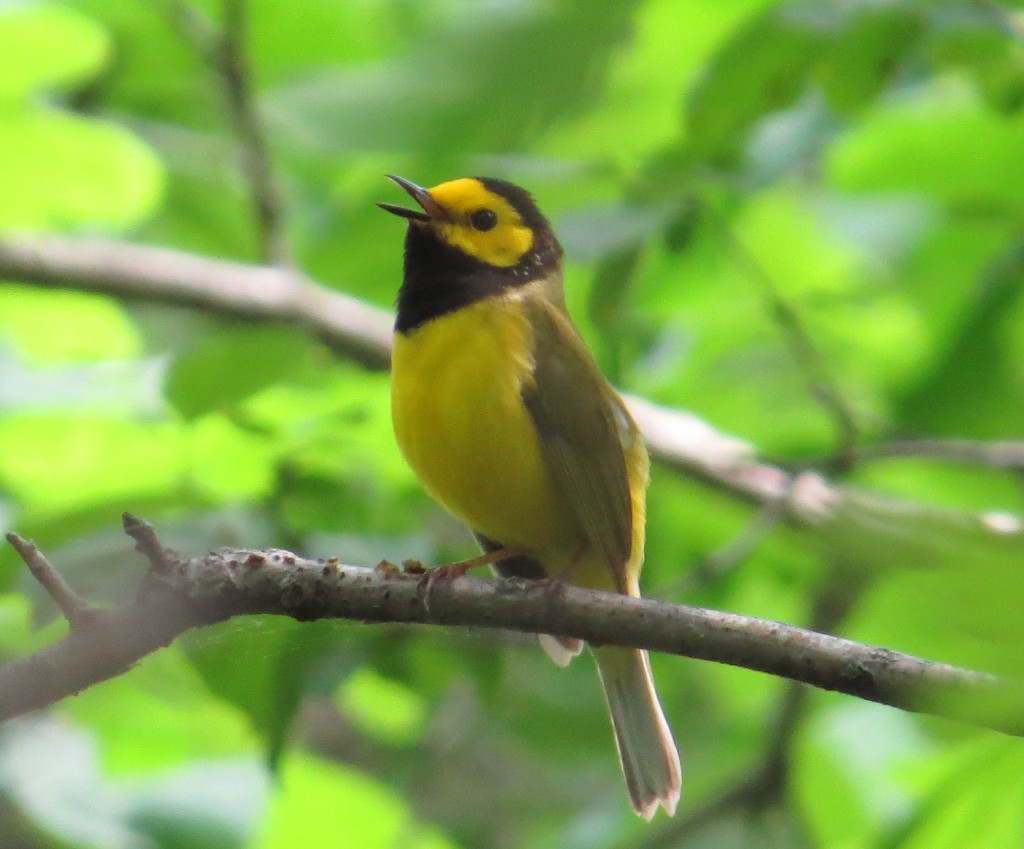 Another fun sighting was a Cerulean Warbler. This was my best look which is not an uncommon look at this tree-top dweller.
Another fun sighting was a Cerulean Warbler. This was my best look which is not an uncommon look at this tree-top dweller.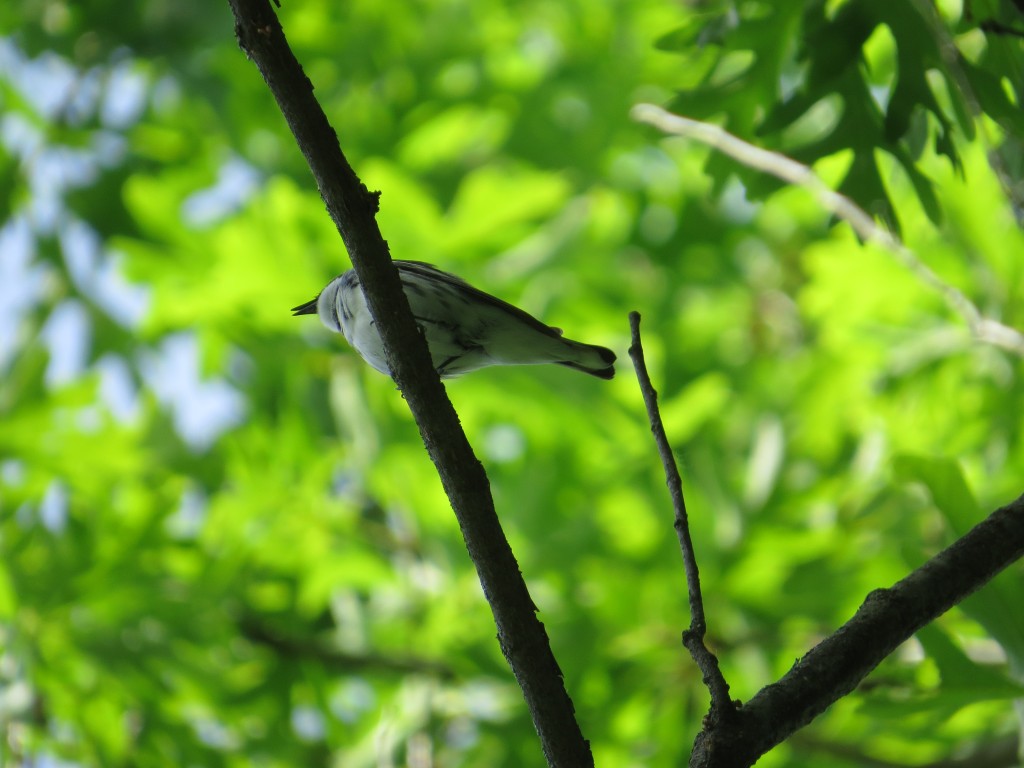
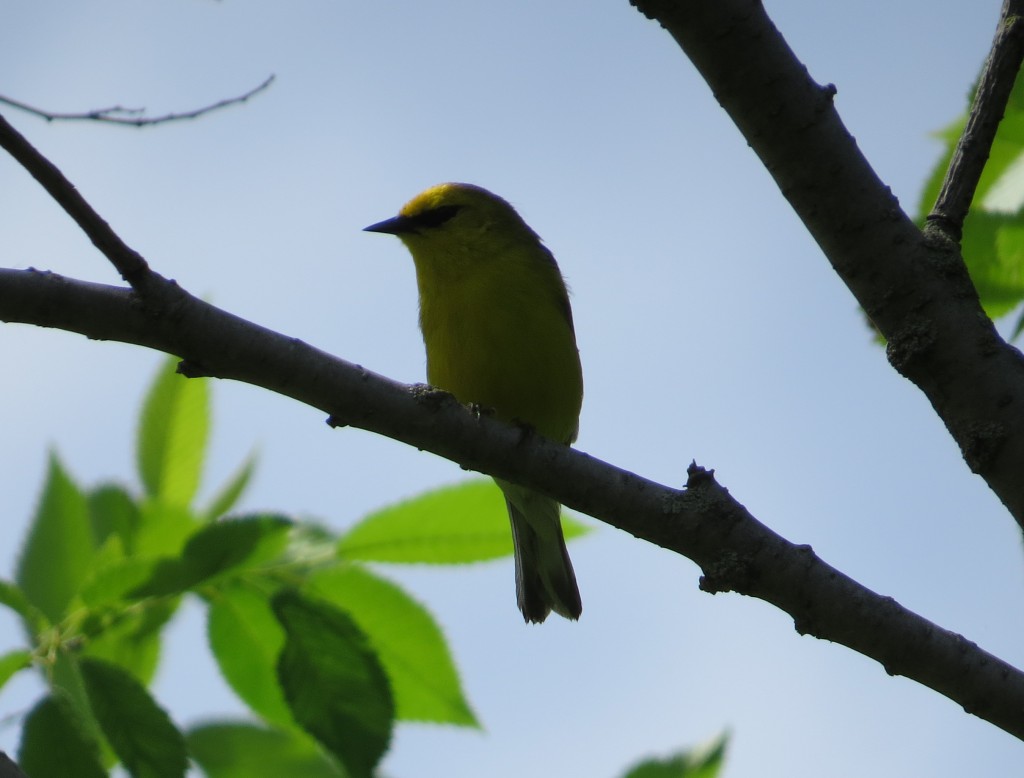
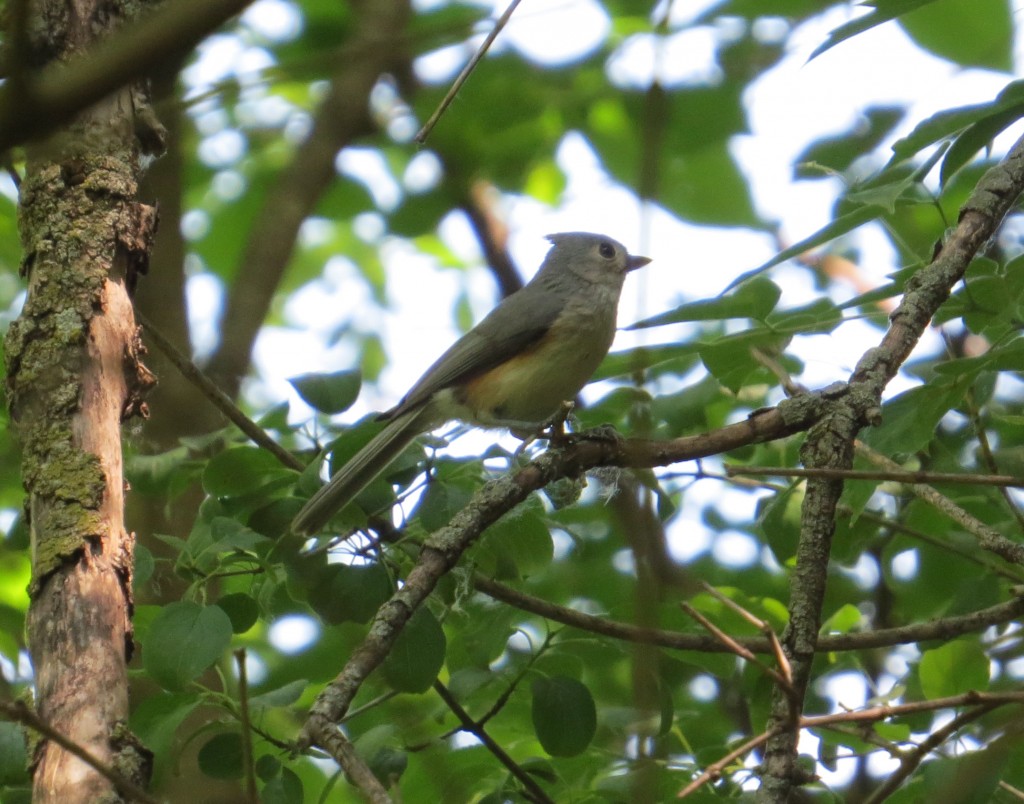
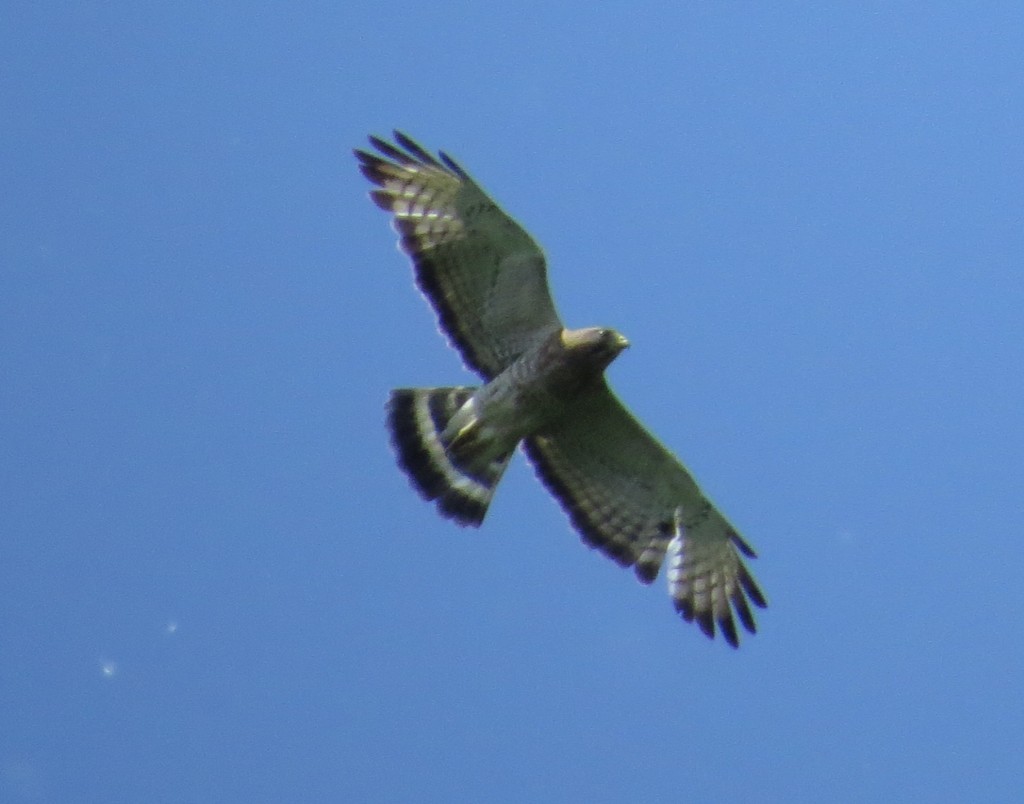
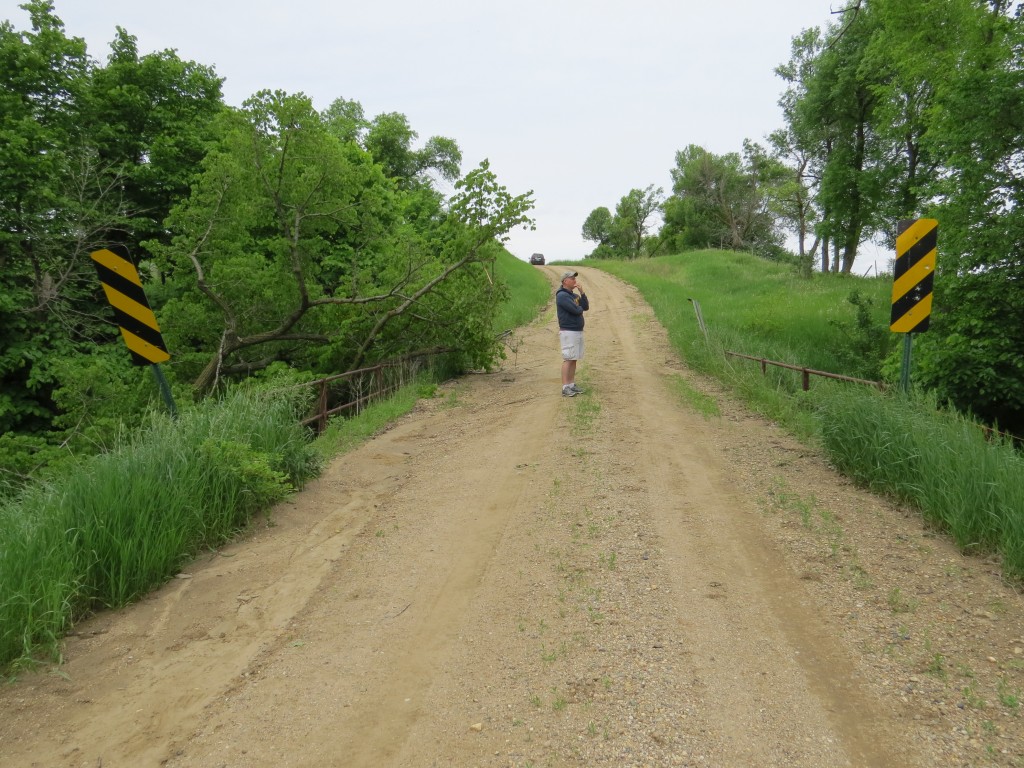
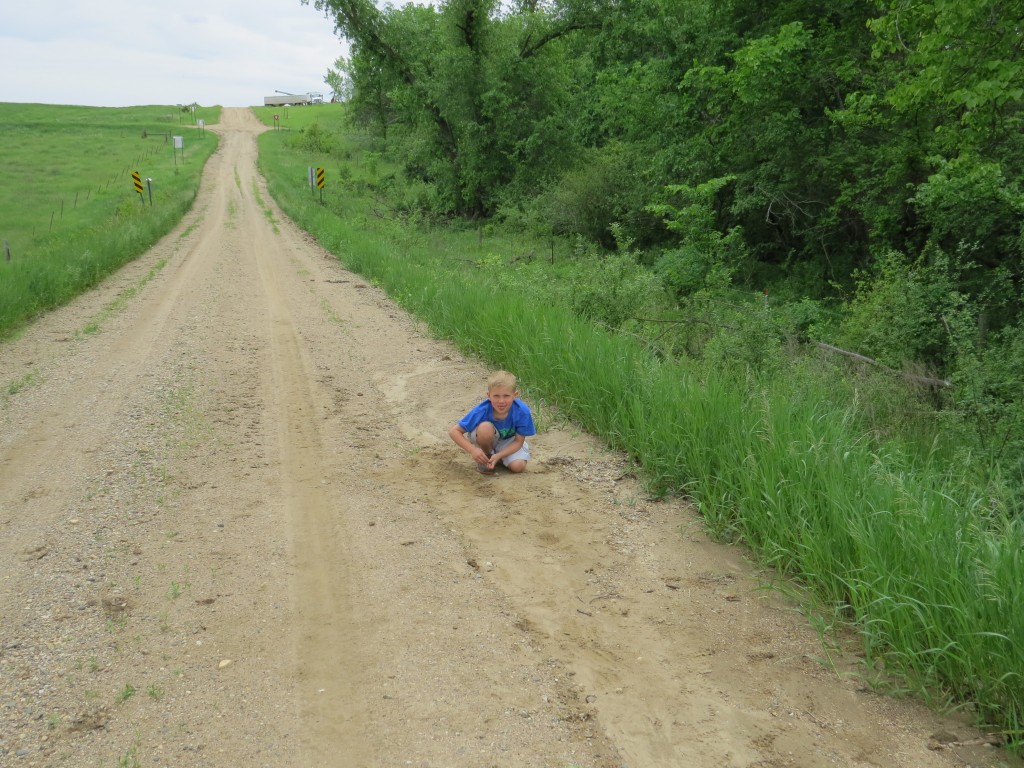 For the better part of an hour Steve and I were both trying to turn every House Sparrow we saw into our target bird. But we failed. The highlight was maybe seeing an Alder Flycatcher, a life bird. I say ‘maybe’ because it’s a bird that can only be safely identified by voice, and Steve and I were convinced it was giving the Alder’s call of, “Free beer!” This bird, too, flew off before we could analyze it further.
For the better part of an hour Steve and I were both trying to turn every House Sparrow we saw into our target bird. But we failed. The highlight was maybe seeing an Alder Flycatcher, a life bird. I say ‘maybe’ because it’s a bird that can only be safely identified by voice, and Steve and I were convinced it was giving the Alder’s call of, “Free beer!” This bird, too, flew off before we could analyze it further.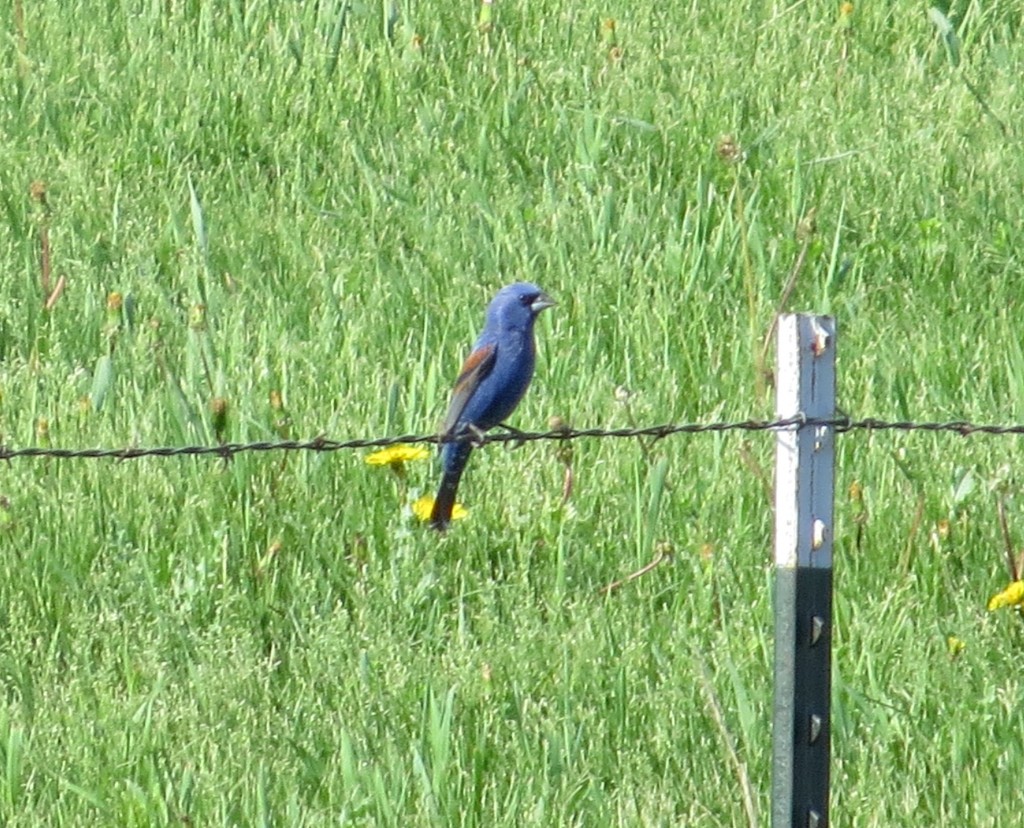
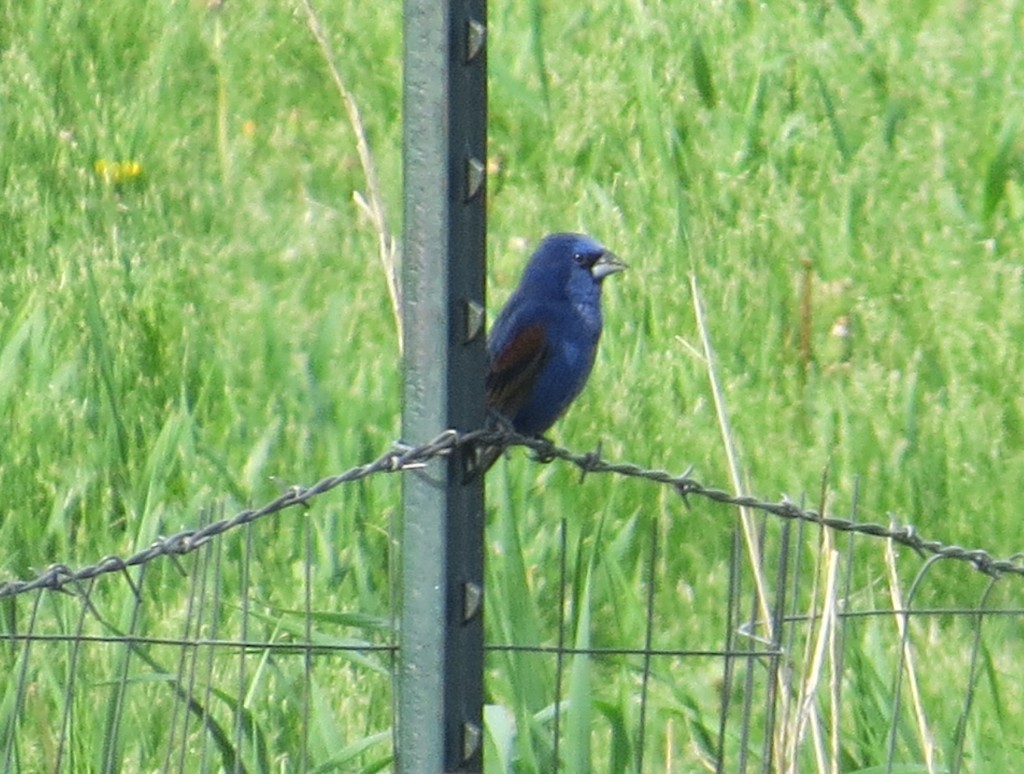
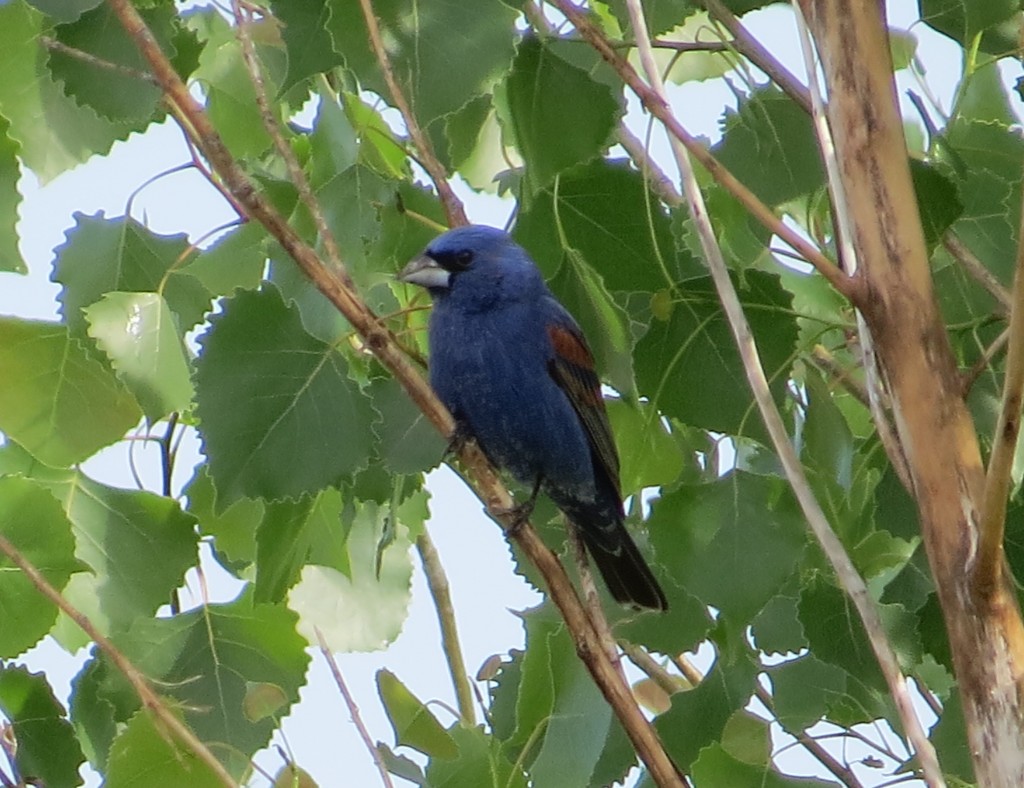 Such a fun bird to see! As I photographed the bird on the sewage pond fence, the city worker who was mowing drove right up to where the bird was and scared it away. Nuts. Then he shut off his mower, and I thought ‘Oh, great. Here we go again. I wonder what he’s going to accuse me of.’ Instead of a suspicious inquiry, though, he asked if we were birdwatchers and then told me I should go ahead and drive on the dikes around the sewage ponds to show my daughter the baby Canada Geese. You gotta love the Cottonwood sewage ponds where not only are there no gates keeping you out, but the city worker encourages you to come check see all that their ponds have to offer. The geese are another story; I actually have a very strong dislike for the species. Undoubtedly it originates from my younger years of shoveling loads of goose poop off our beach, lawn, and docks whenever they would visit the resort. It’s kind of funny how when people see us out birding they ask us if we are looking at geese or want to know where geese are. I always appreciate the friendliness and offer to help, but there is no way I can quash their enthusiasm and tell them how I feel about this ubiquitous bird. So I thank them and tell them I’m just checking out all the birds.
Such a fun bird to see! As I photographed the bird on the sewage pond fence, the city worker who was mowing drove right up to where the bird was and scared it away. Nuts. Then he shut off his mower, and I thought ‘Oh, great. Here we go again. I wonder what he’s going to accuse me of.’ Instead of a suspicious inquiry, though, he asked if we were birdwatchers and then told me I should go ahead and drive on the dikes around the sewage ponds to show my daughter the baby Canada Geese. You gotta love the Cottonwood sewage ponds where not only are there no gates keeping you out, but the city worker encourages you to come check see all that their ponds have to offer. The geese are another story; I actually have a very strong dislike for the species. Undoubtedly it originates from my younger years of shoveling loads of goose poop off our beach, lawn, and docks whenever they would visit the resort. It’s kind of funny how when people see us out birding they ask us if we are looking at geese or want to know where geese are. I always appreciate the friendliness and offer to help, but there is no way I can quash their enthusiasm and tell them how I feel about this ubiquitous bird. So I thank them and tell them I’m just checking out all the birds.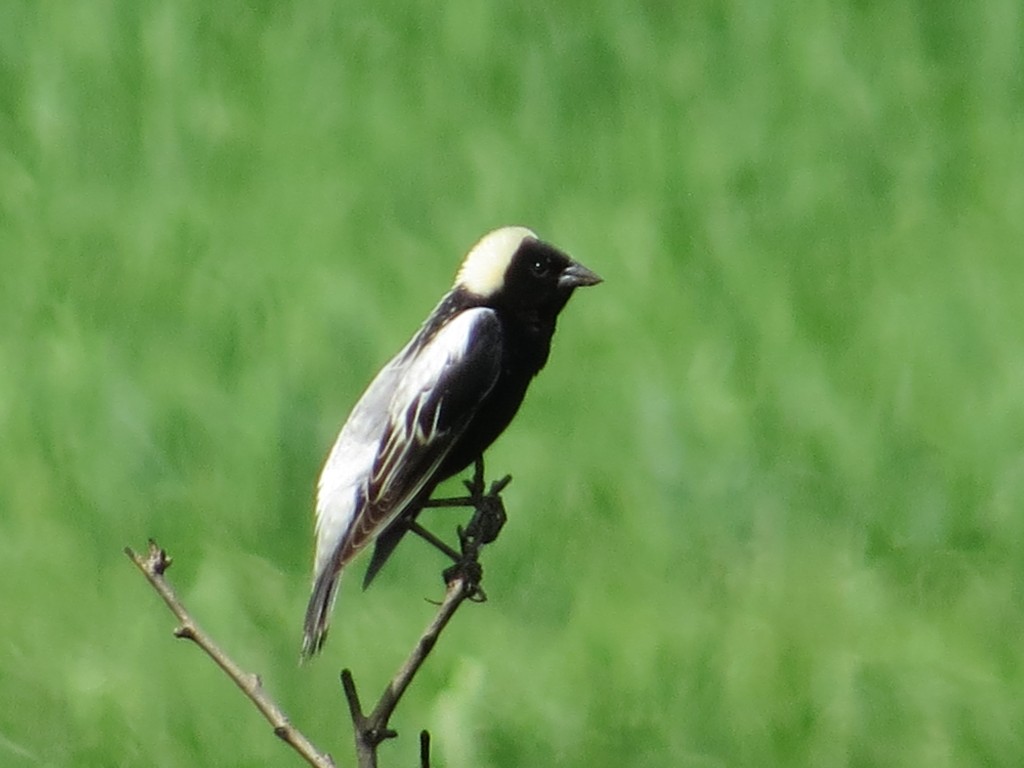
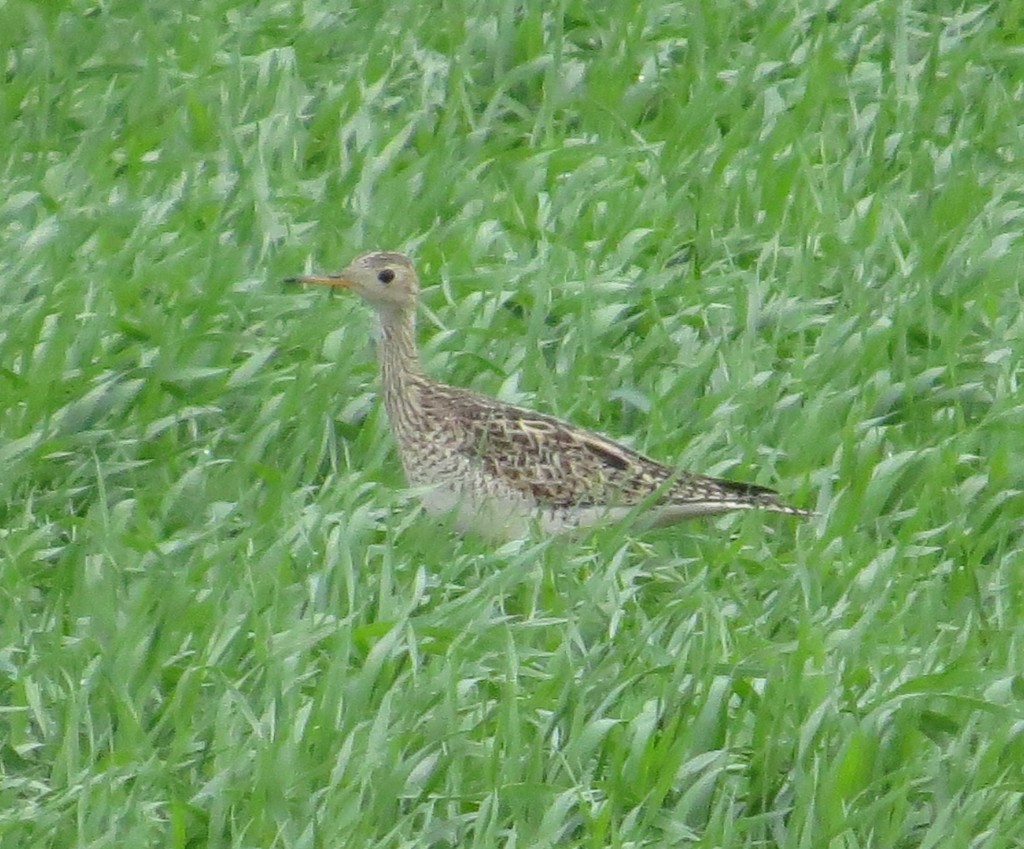
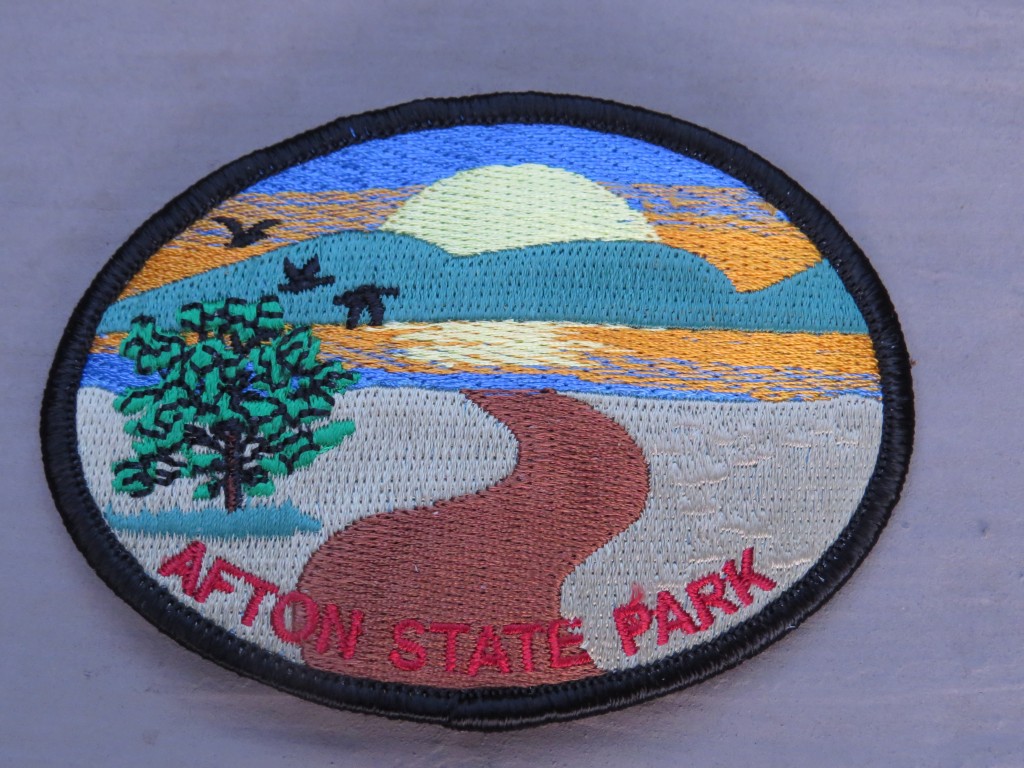
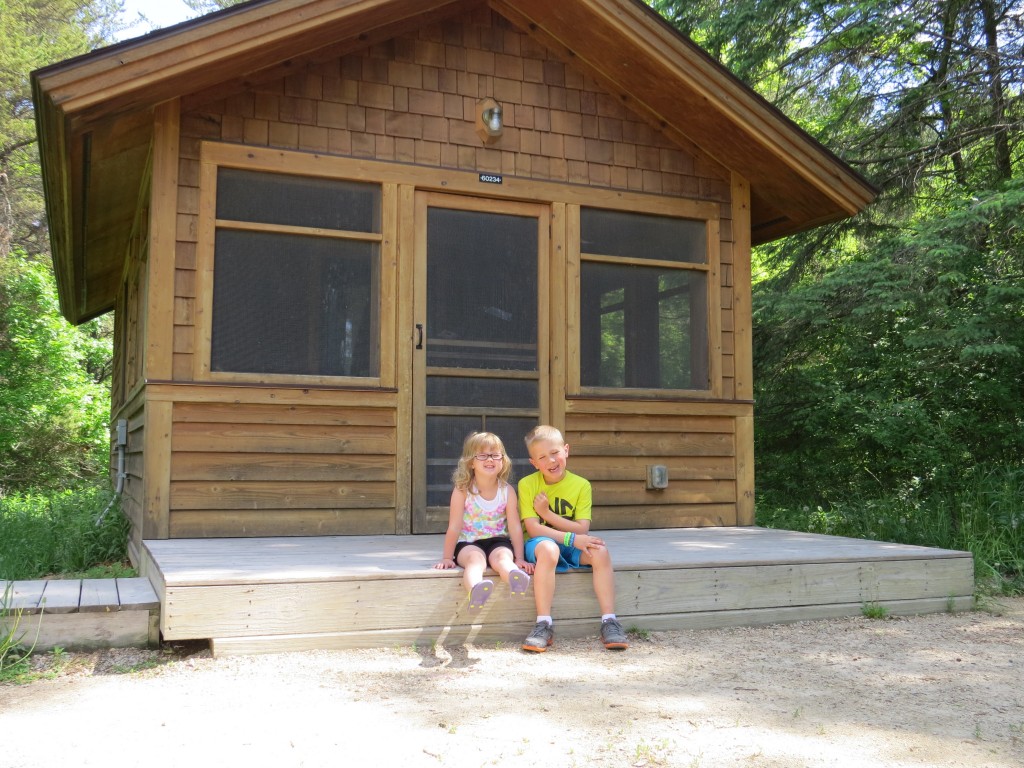
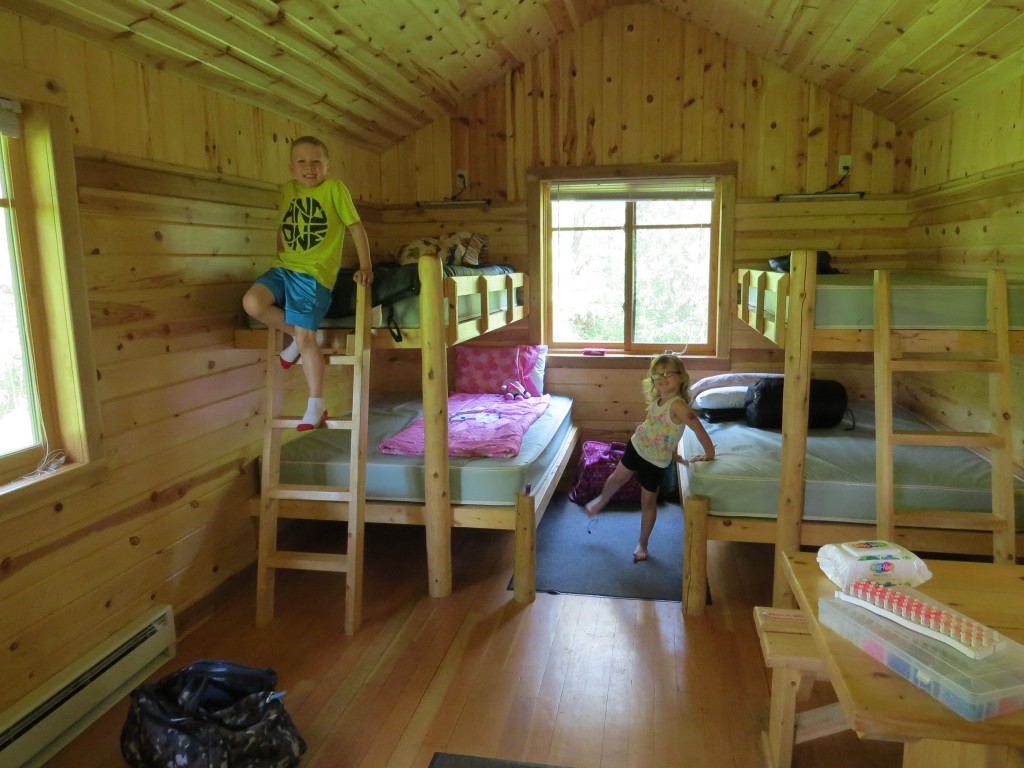
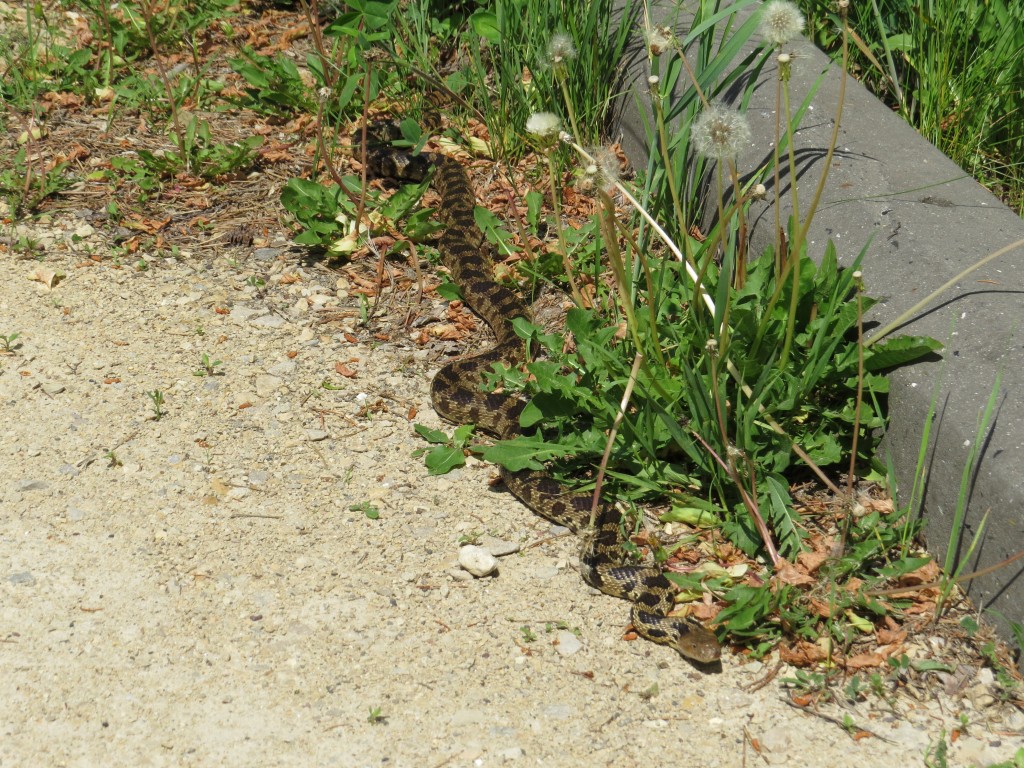
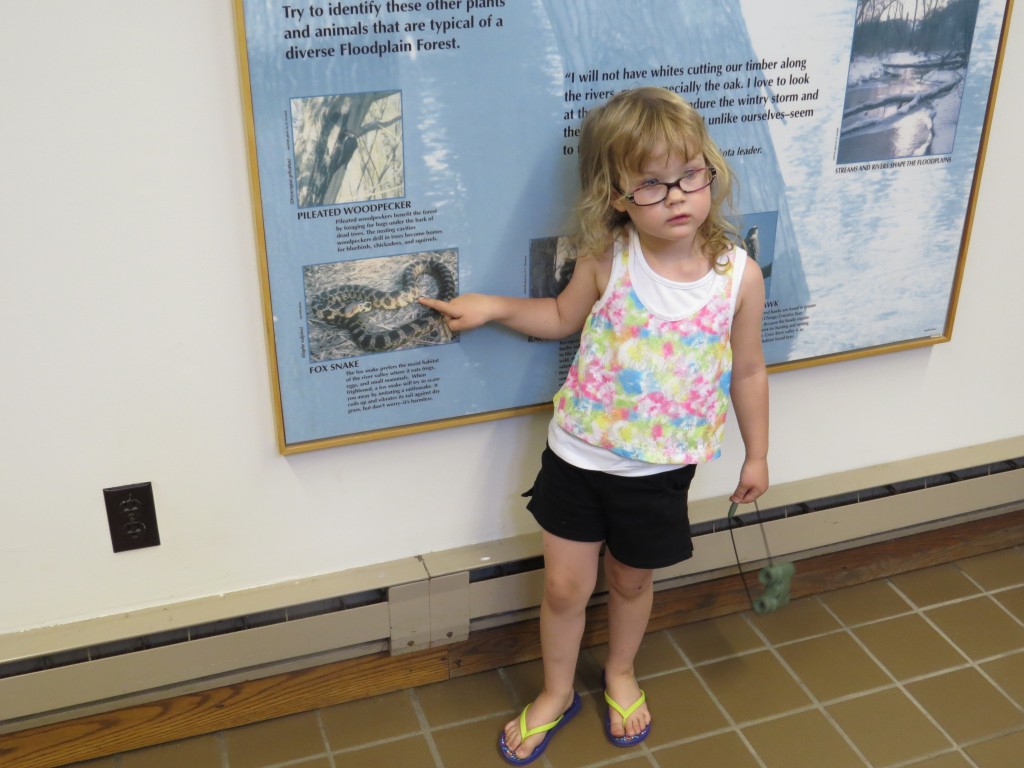
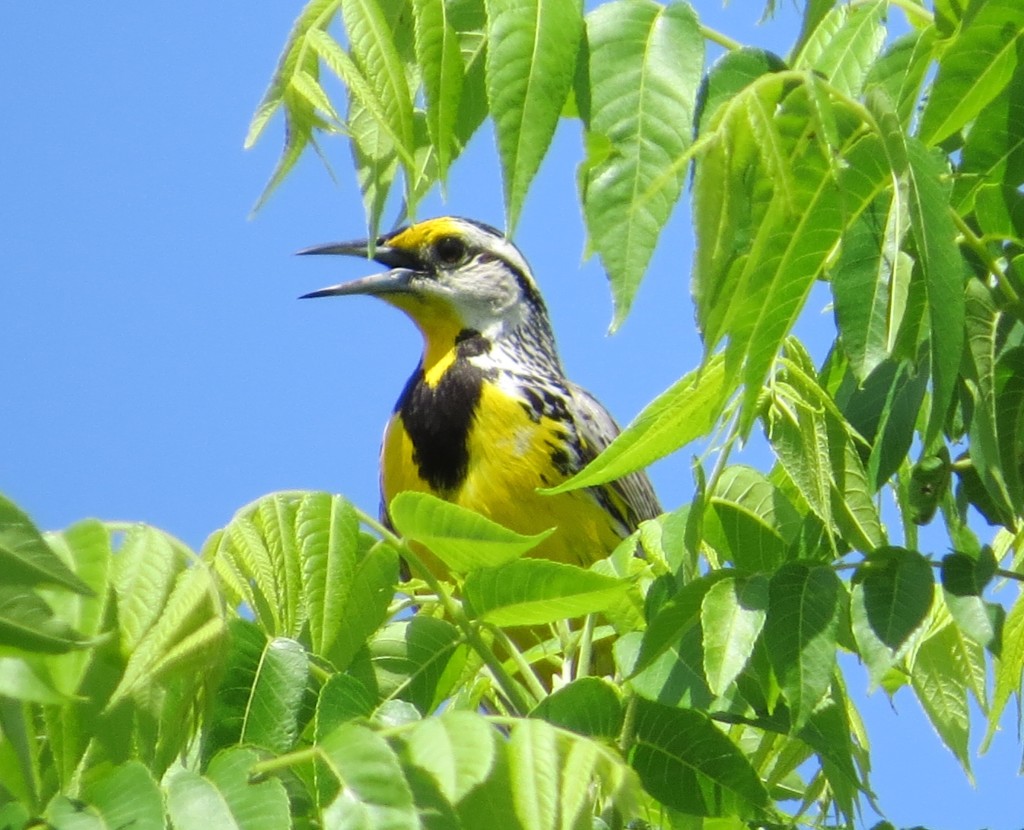
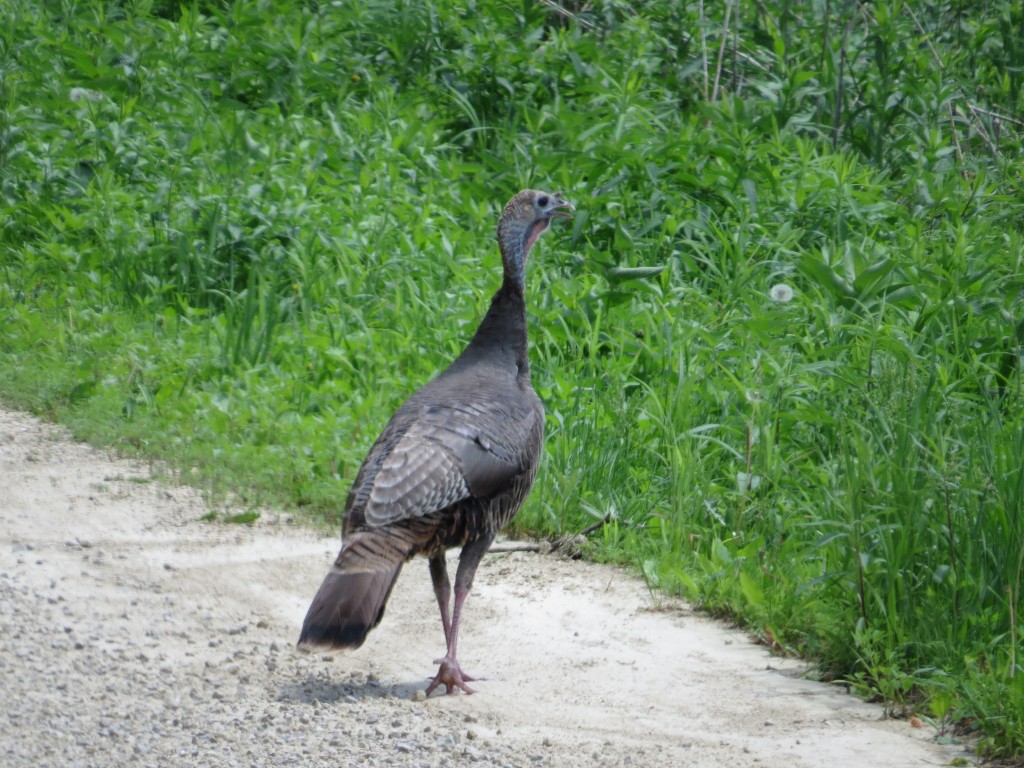
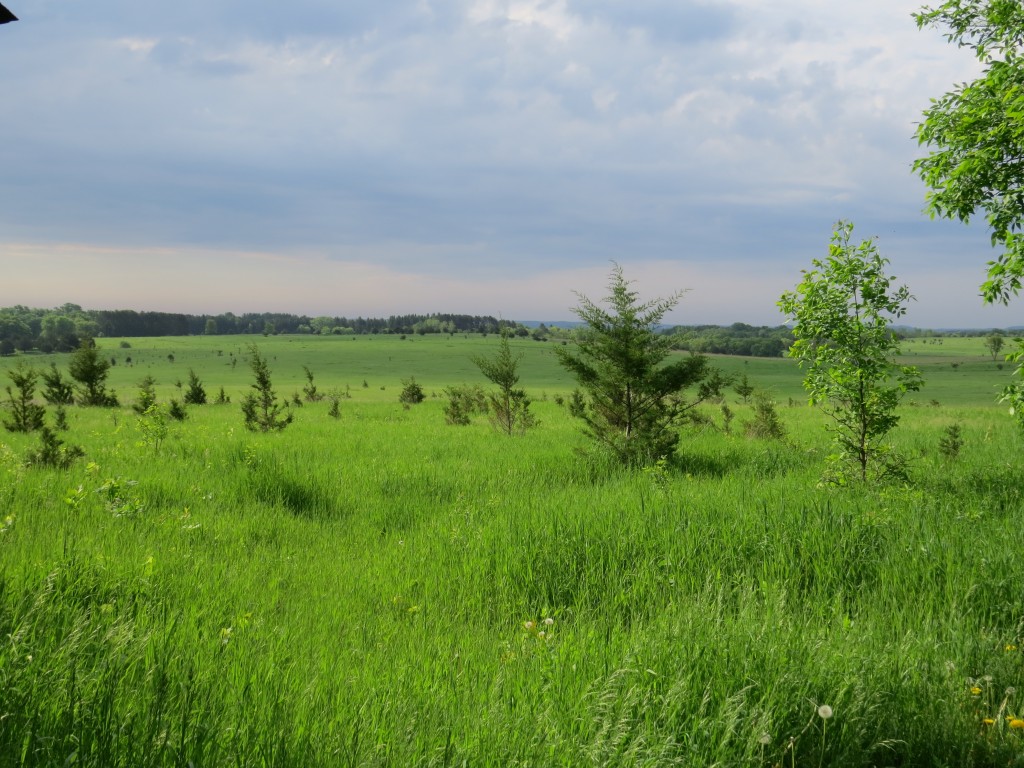
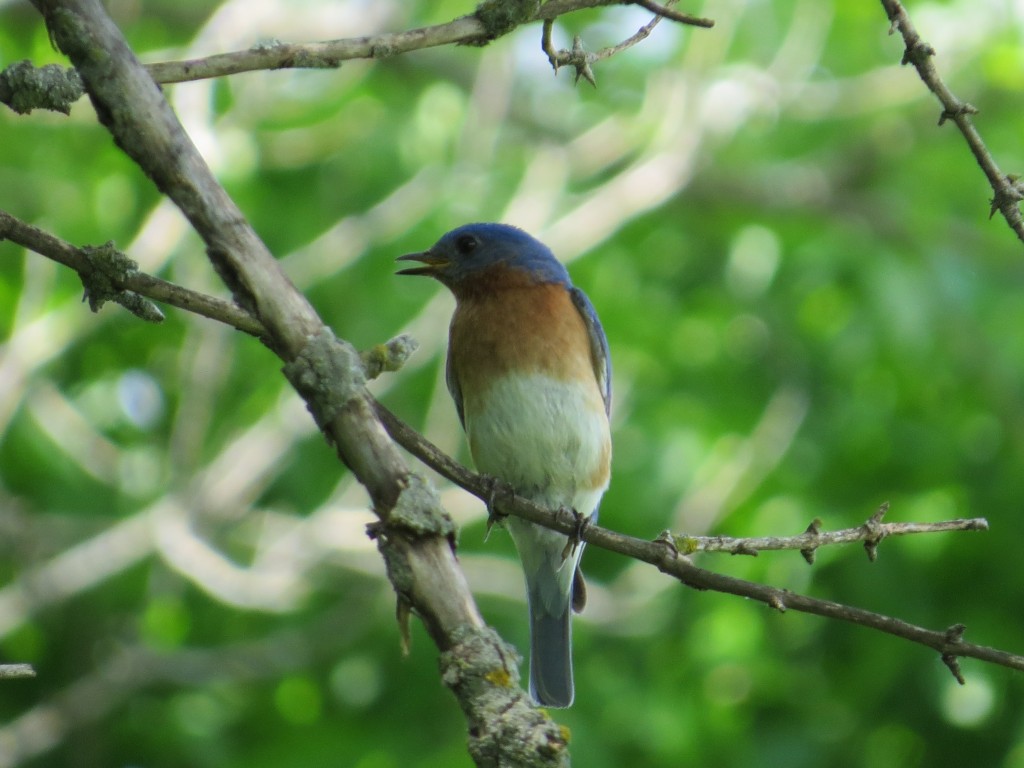
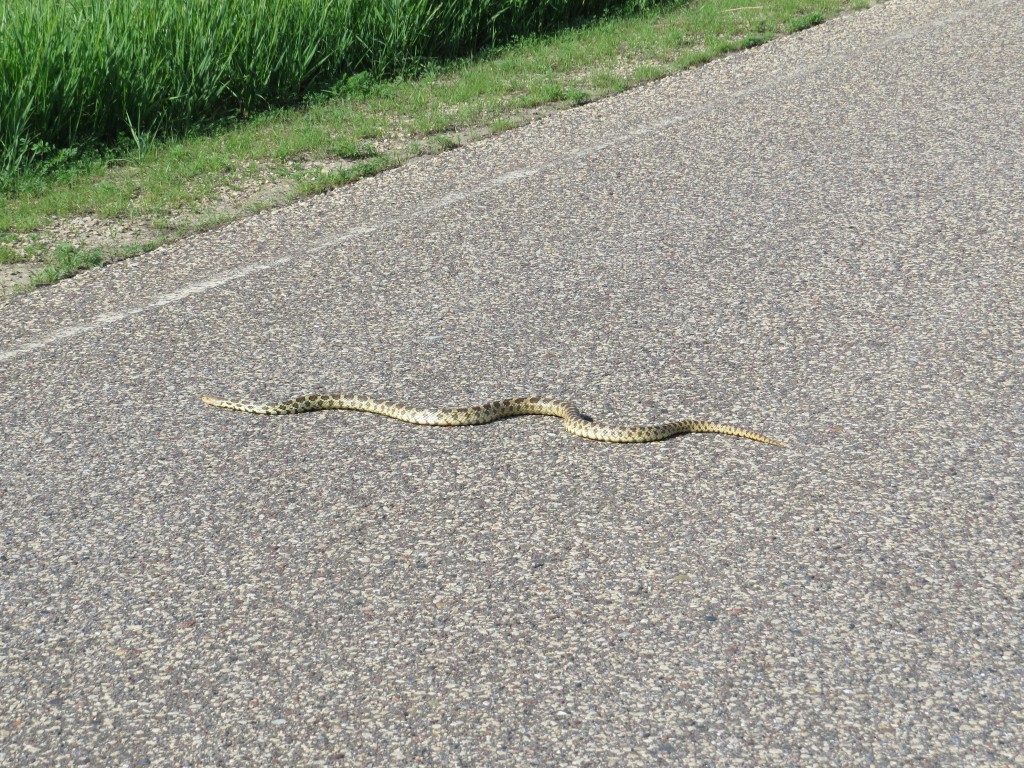 After this experience we finally made it to the trailhead. This time things went a lot smoother with a lot less complaining. The hike down the large hill was the most challenging as the sign shows, though Marin was convinced the sign meant it was a snake trail. Given our day, who could blame her? Here you can see Evan contemplating her observation.
After this experience we finally made it to the trailhead. This time things went a lot smoother with a lot less complaining. The hike down the large hill was the most challenging as the sign shows, though Marin was convinced the sign meant it was a snake trail. Given our day, who could blame her? Here you can see Evan contemplating her observation.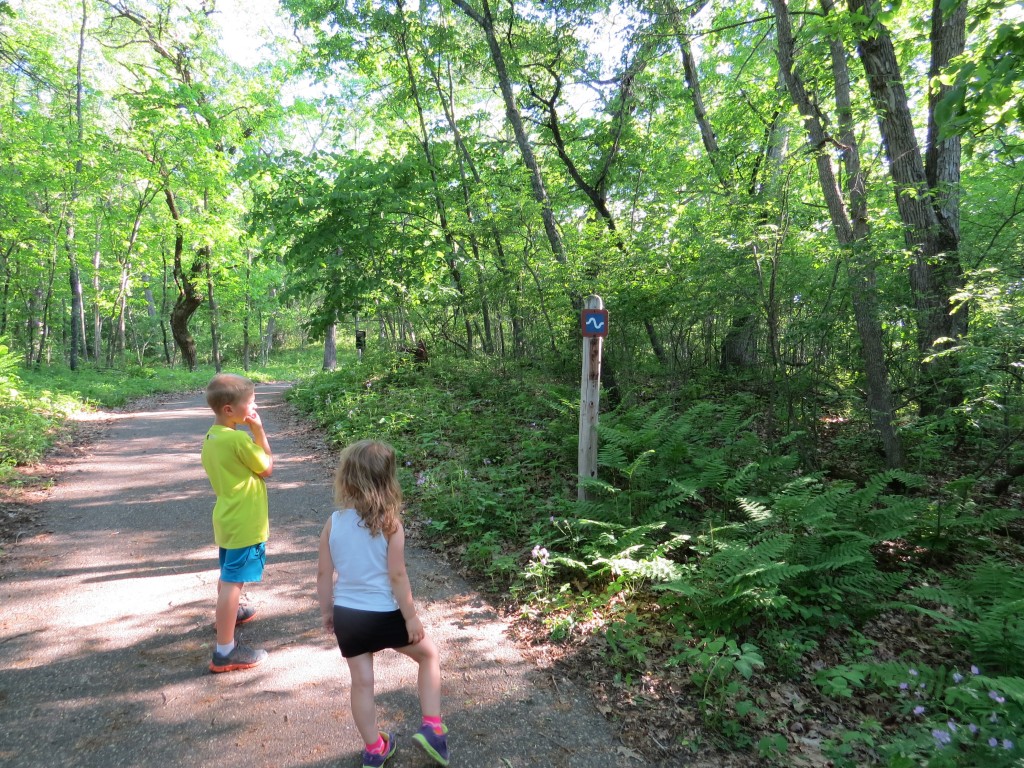 The river bottoms trail was flat and easy as it took us right next to the St. Croix and right along the base of an oak-wooded hillside where the Hooded Warblers were known to be. I knew the song well as its been my phone’s ring tone for some time, but I just wasn’t hearing it. Argh. Later on, though, as we passed by some flooded timber along the edge of the river, I heard the distinctive call of the Prothonotary Warbler! Not the main target, but good enough! After a little while we got to lay our eyes on it. What a thrill it was to see it for the first time!
The river bottoms trail was flat and easy as it took us right next to the St. Croix and right along the base of an oak-wooded hillside where the Hooded Warblers were known to be. I knew the song well as its been my phone’s ring tone for some time, but I just wasn’t hearing it. Argh. Later on, though, as we passed by some flooded timber along the edge of the river, I heard the distinctive call of the Prothonotary Warbler! Not the main target, but good enough! After a little while we got to lay our eyes on it. What a thrill it was to see it for the first time!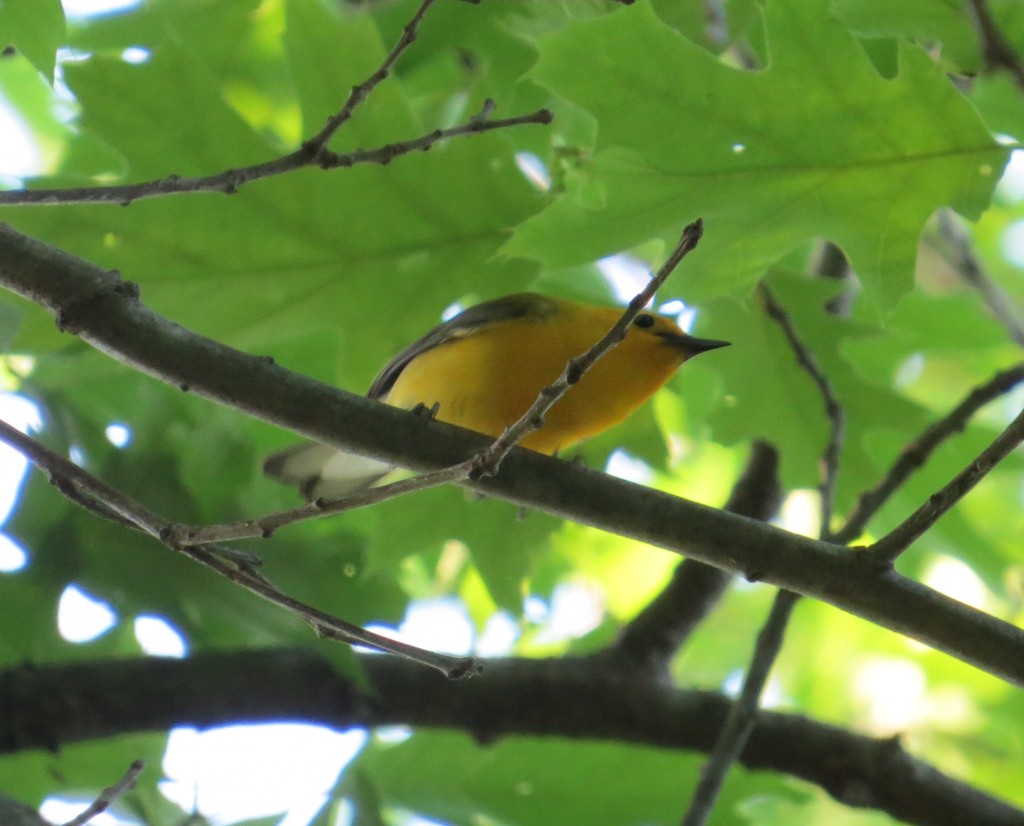
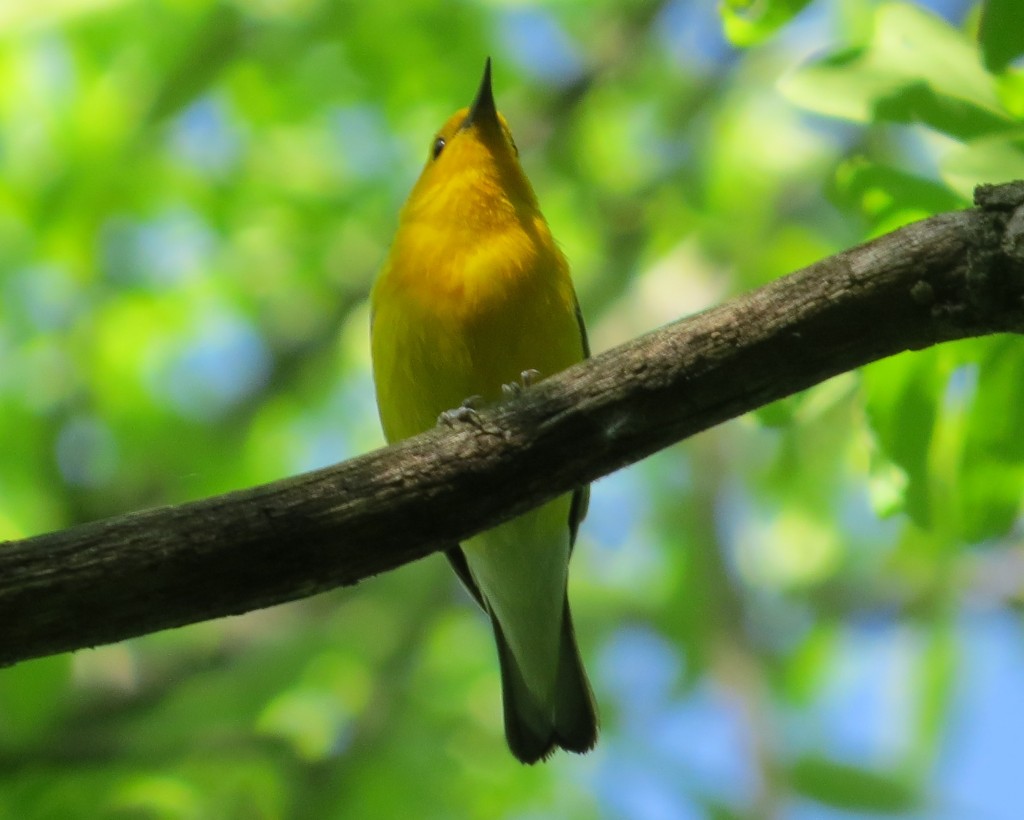
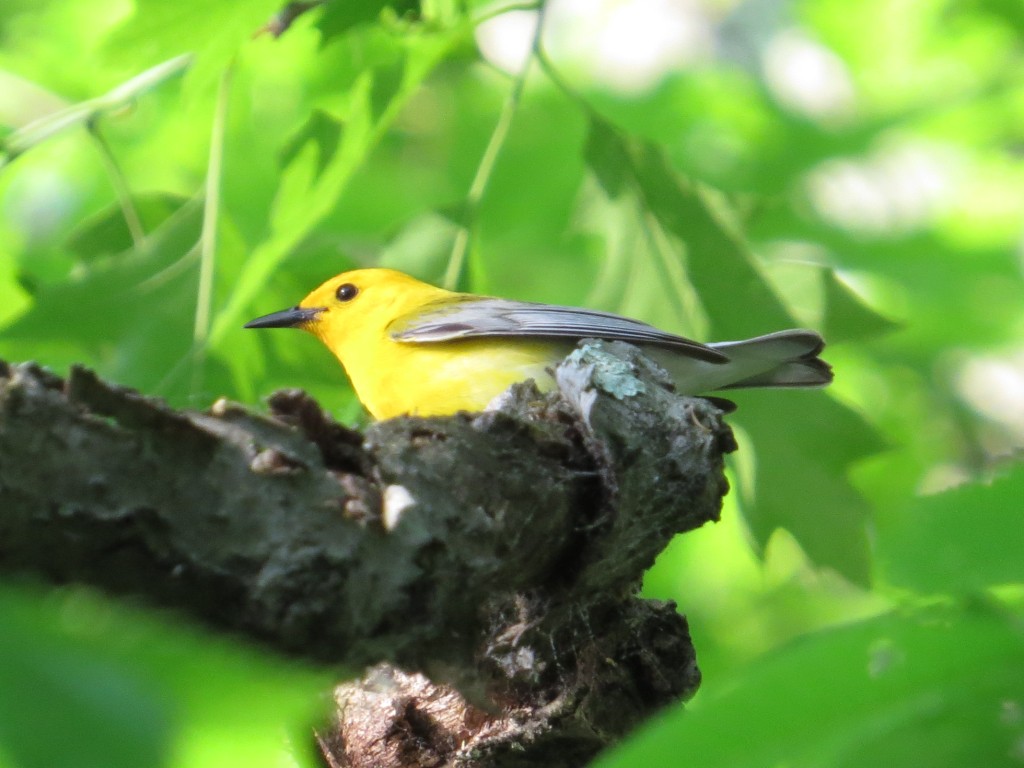
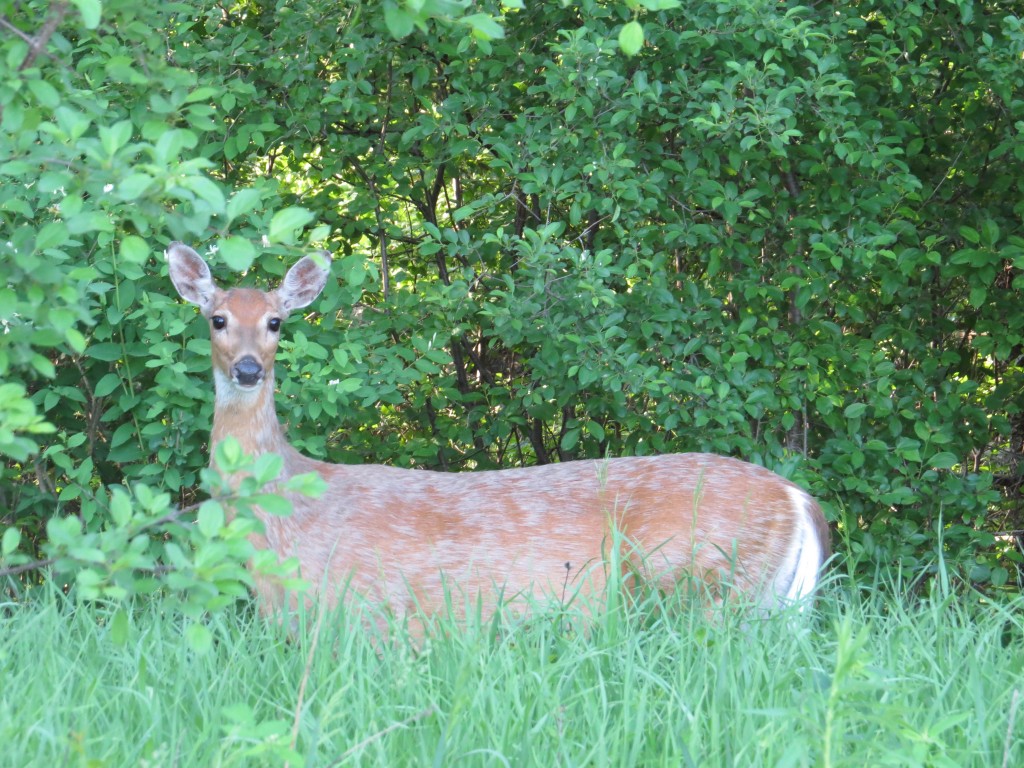
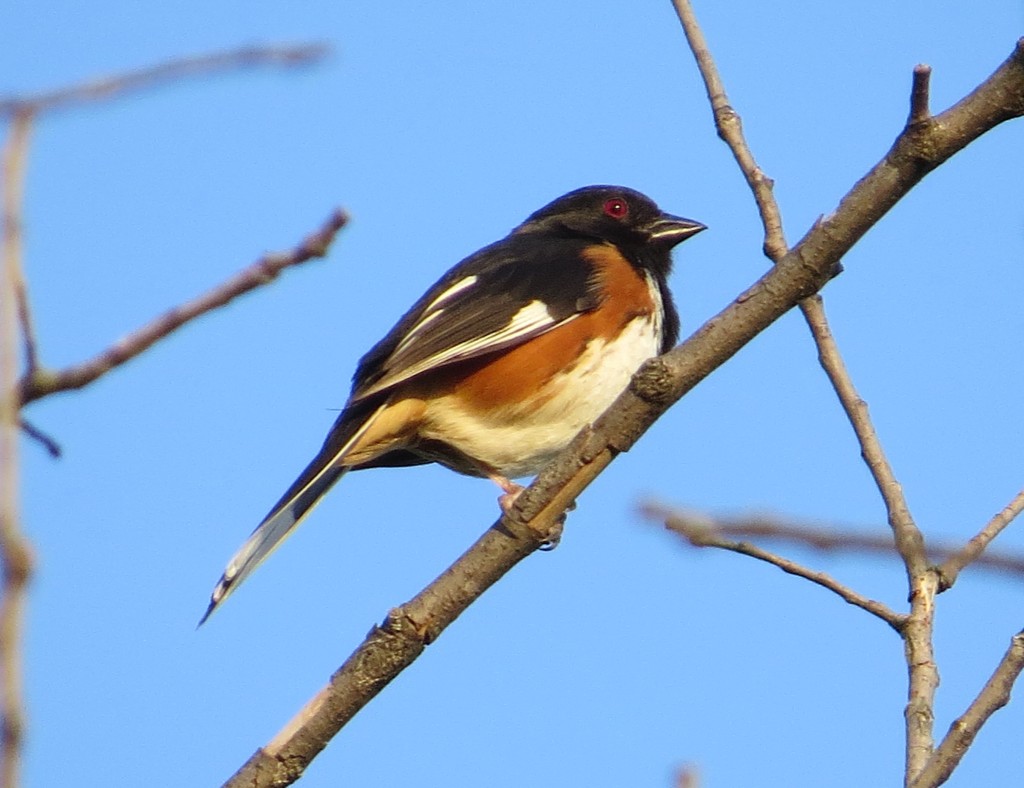
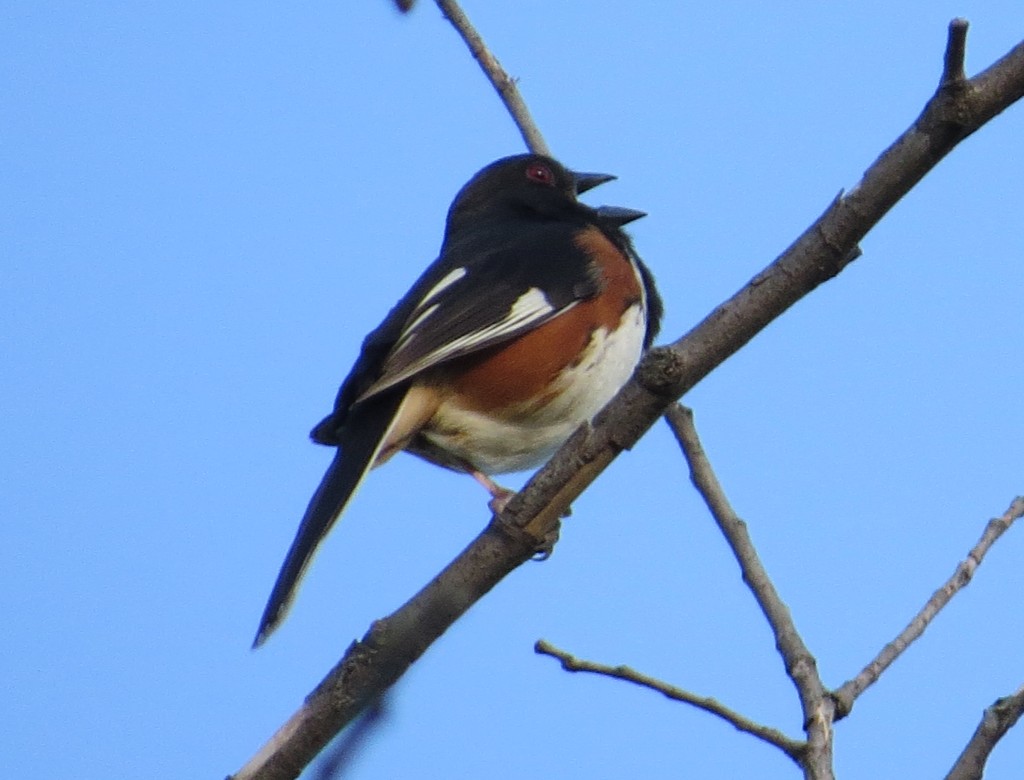
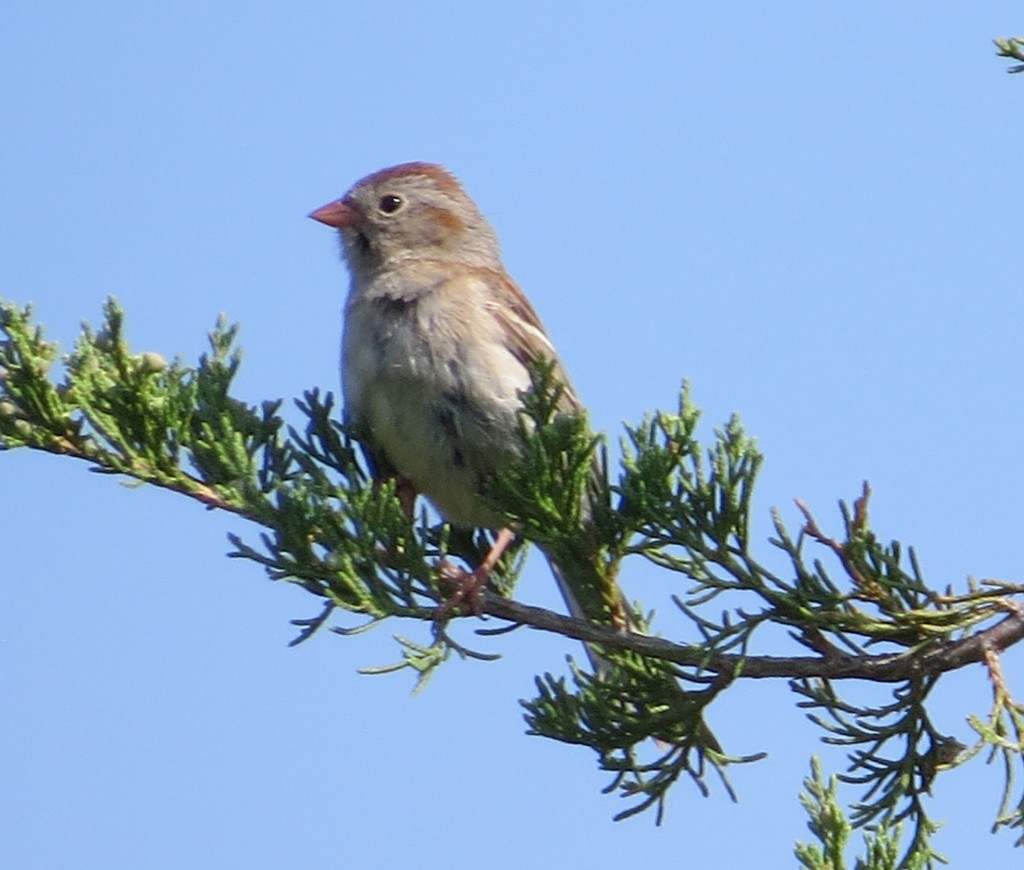
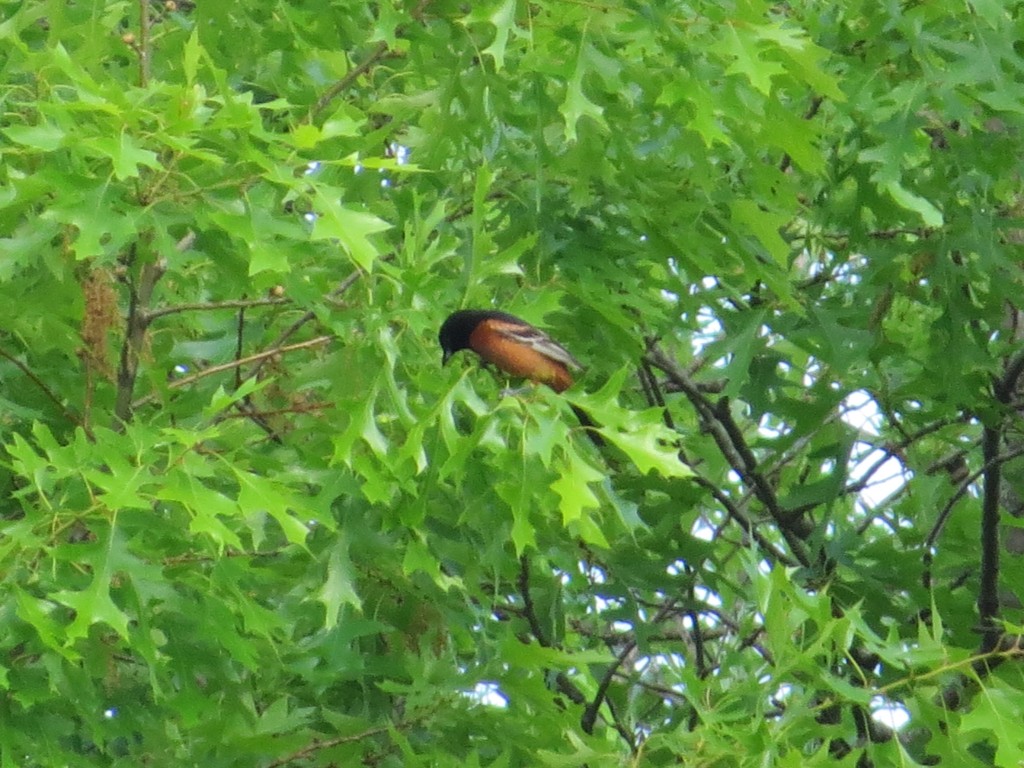
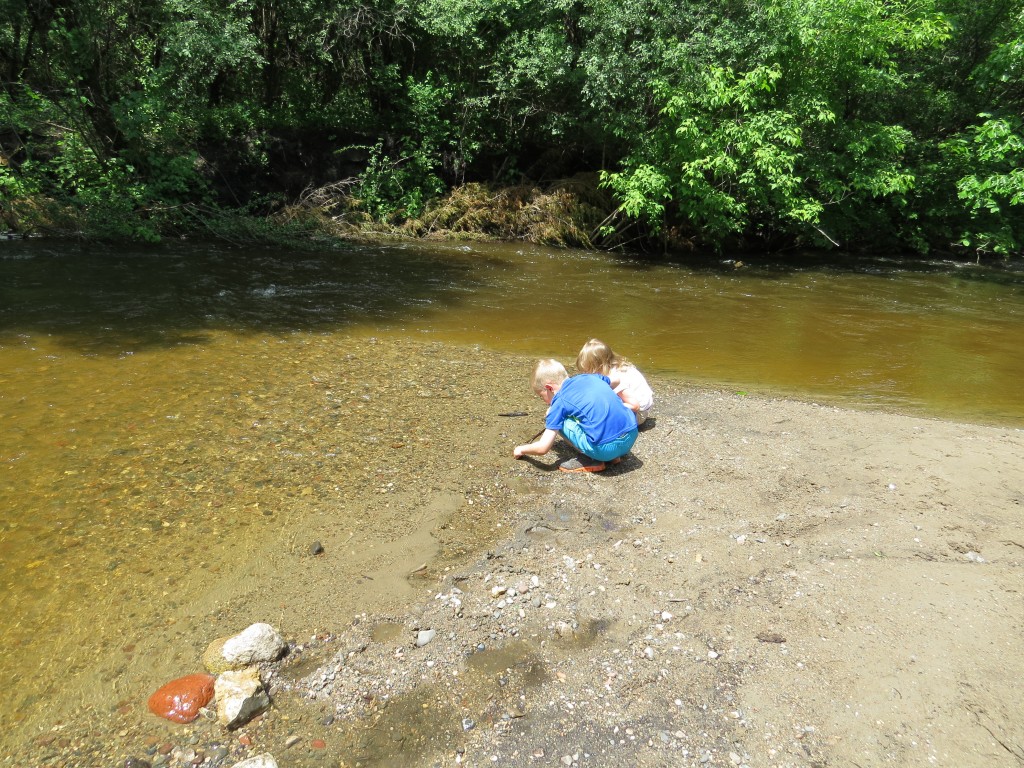
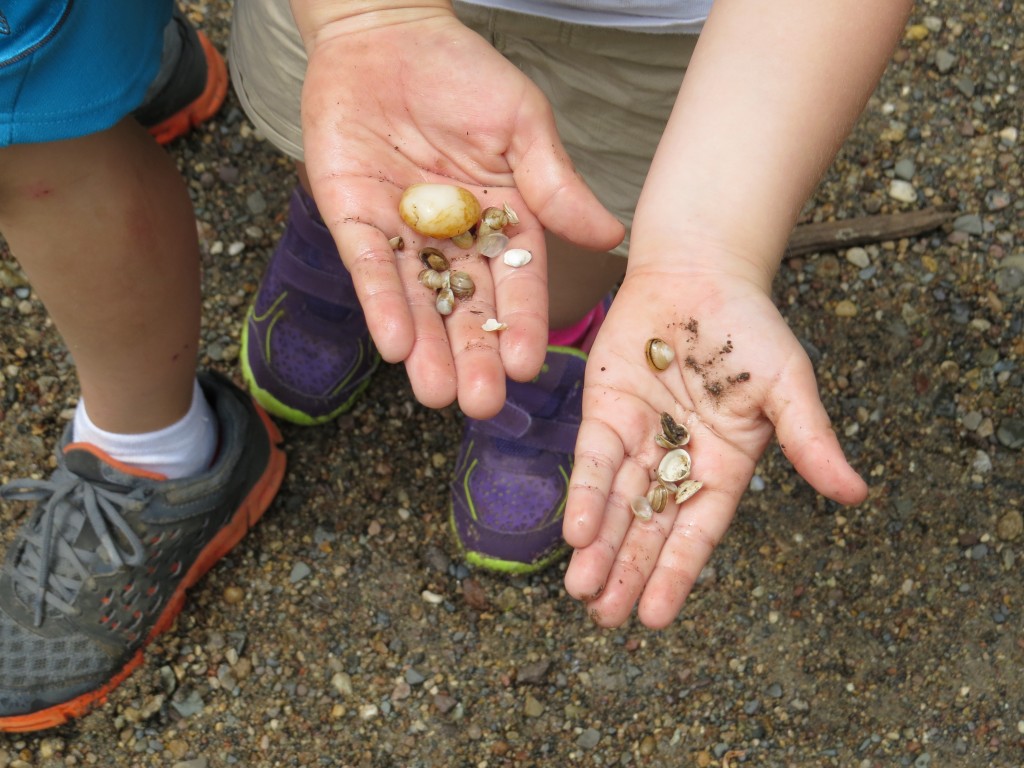
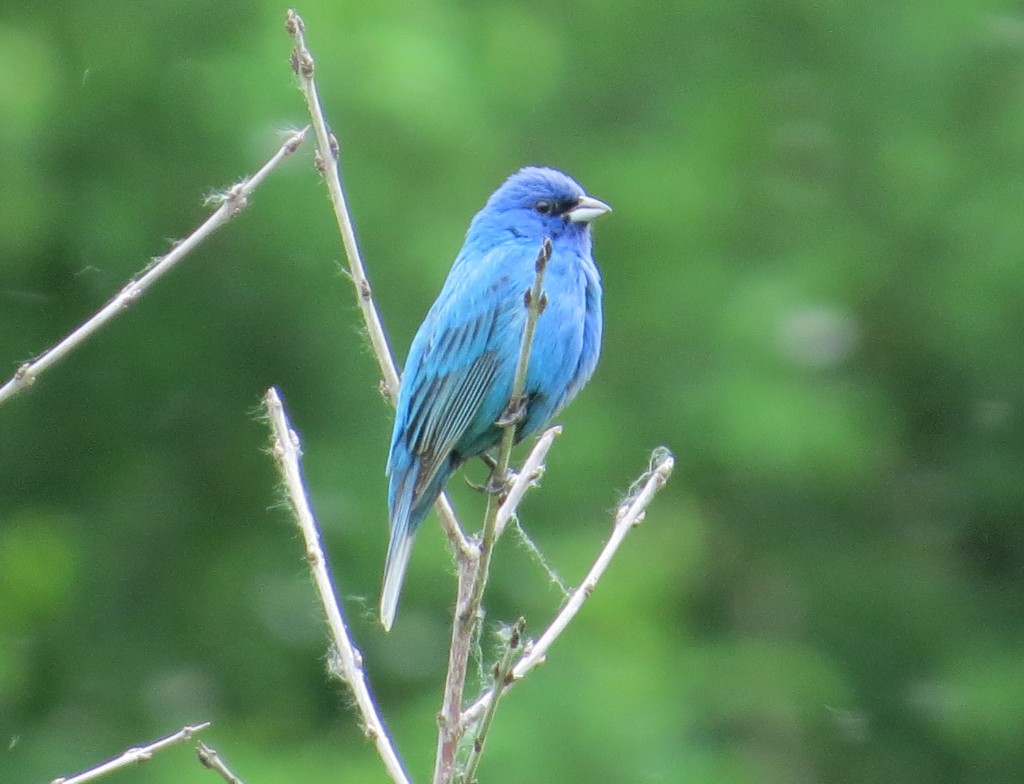
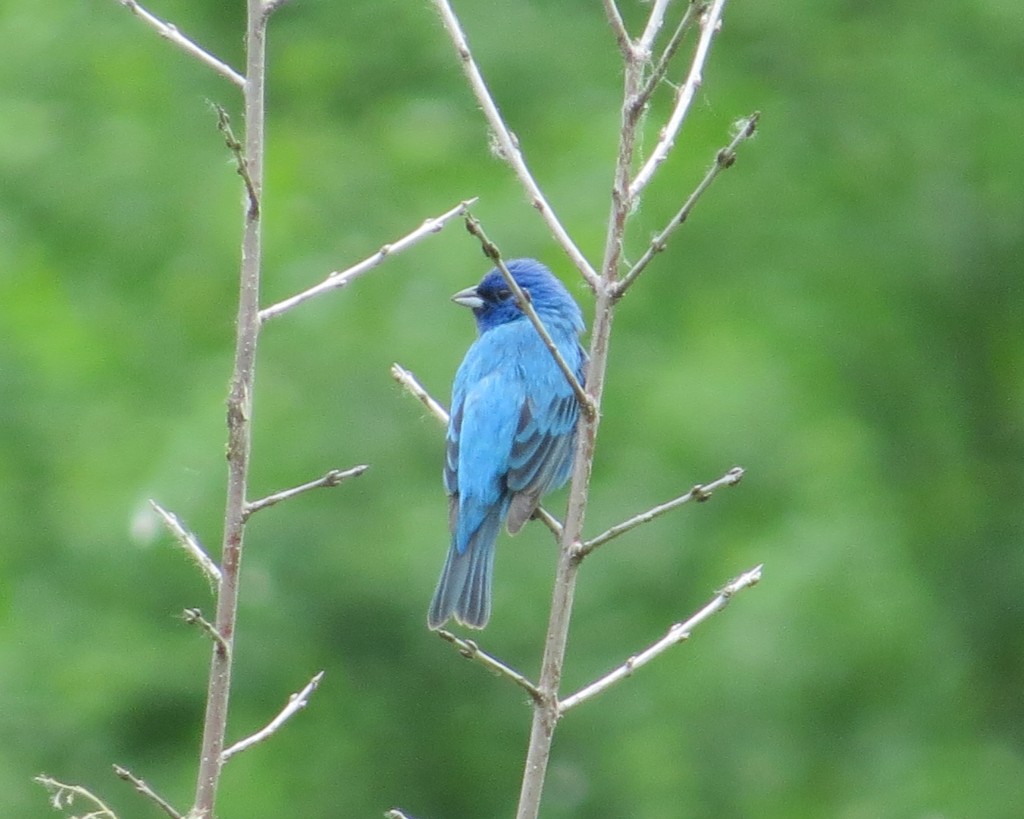
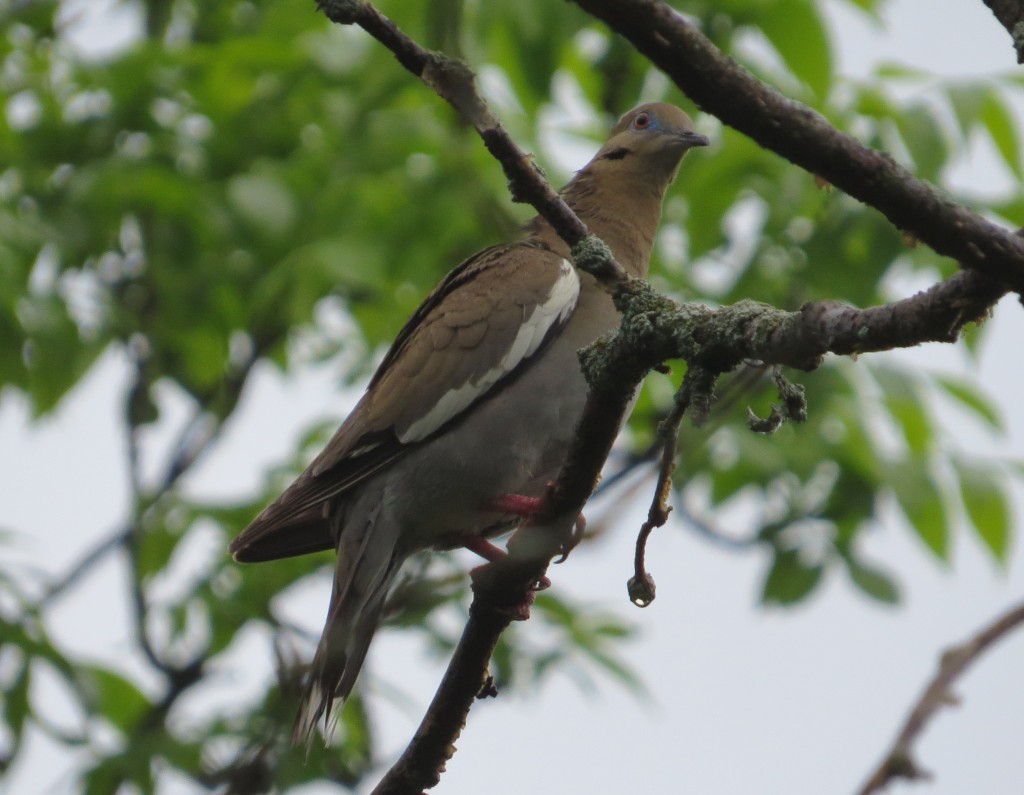
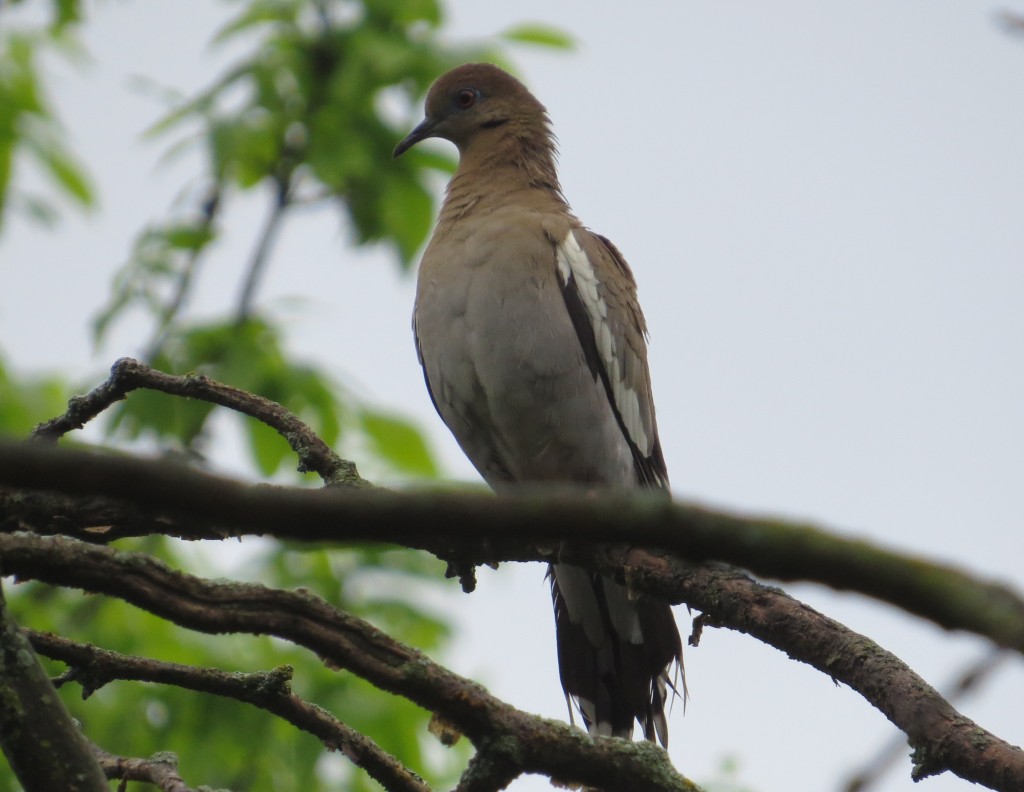 After our lightning-fast, dynamic sighting, we knocked on the door to thank Charlene, the birder and homeowner who made this amazing discovery. Charlene was the epitomy of Minnesota-nice, offering us coffee and donuts and showing us a plat book and telling us where to find other great birds in the area. It’s always a pleasure to meet a friendly birder in the field.
After our lightning-fast, dynamic sighting, we knocked on the door to thank Charlene, the birder and homeowner who made this amazing discovery. Charlene was the epitomy of Minnesota-nice, offering us coffee and donuts and showing us a plat book and telling us where to find other great birds in the area. It’s always a pleasure to meet a friendly birder in the field.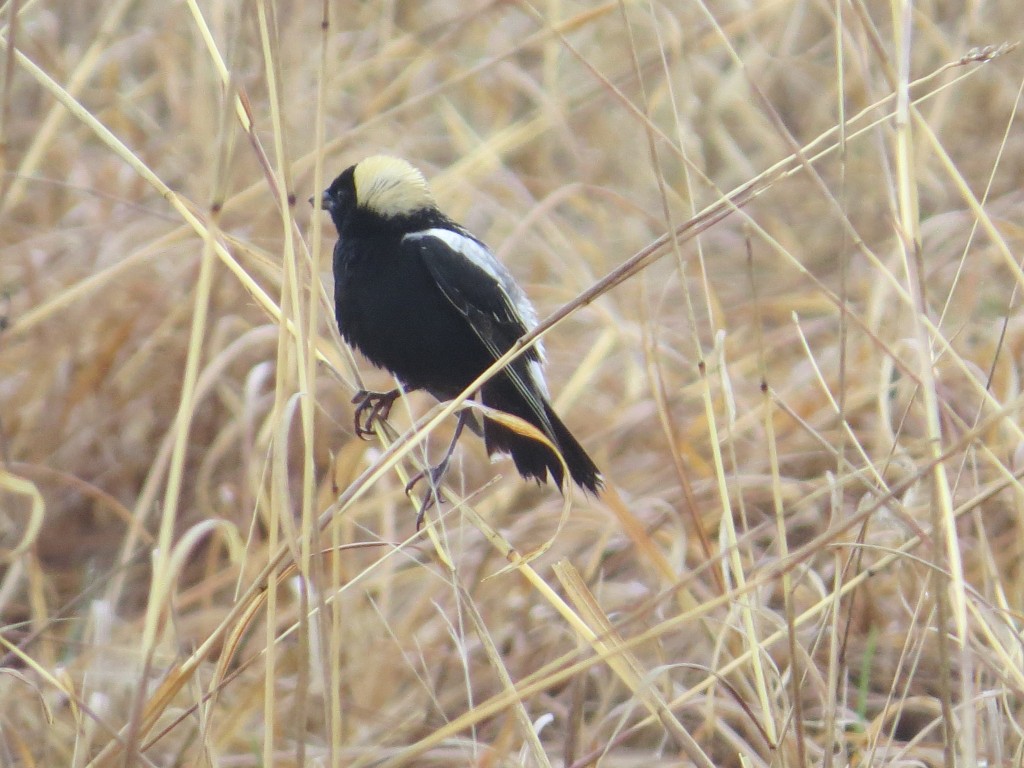
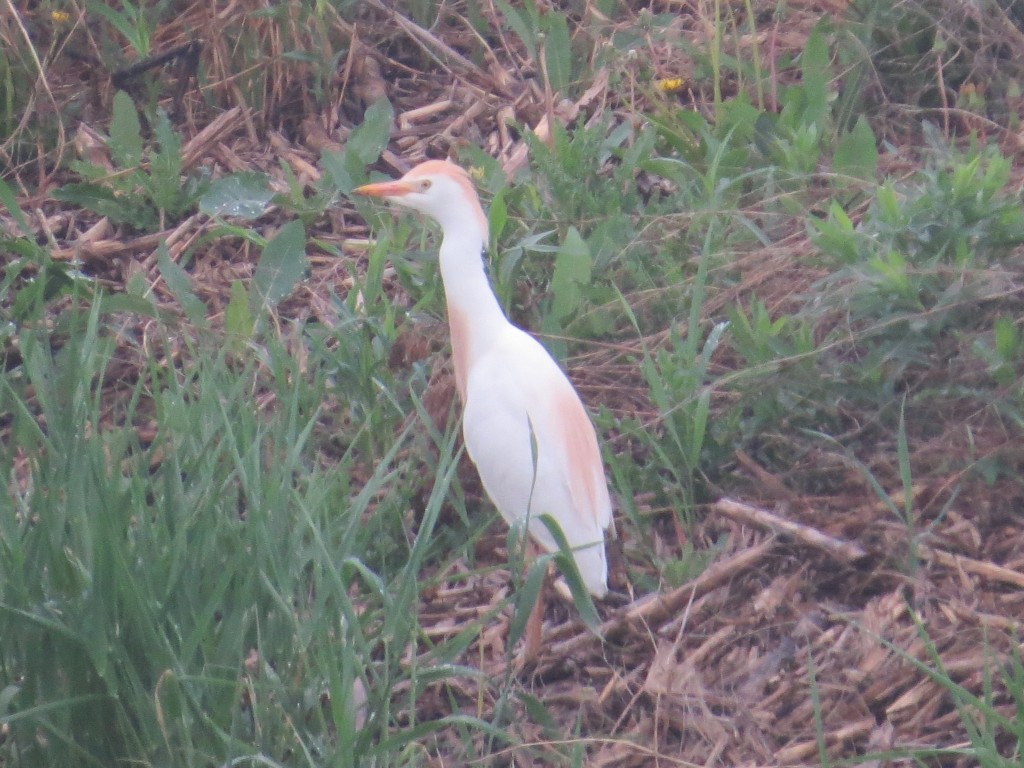
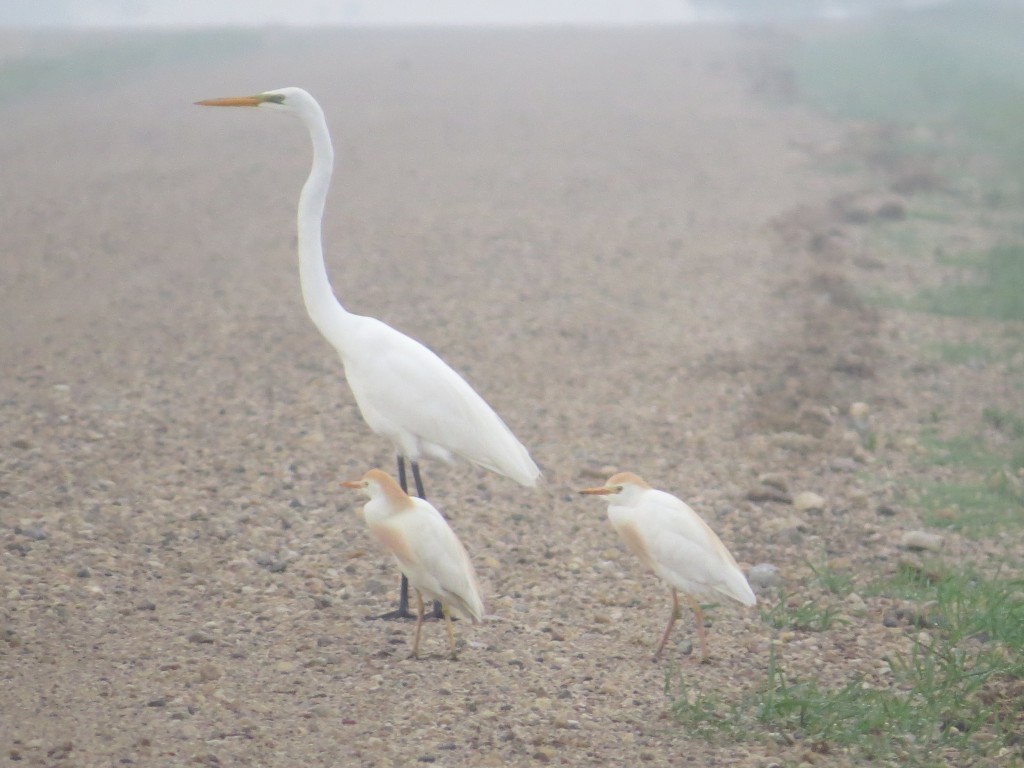
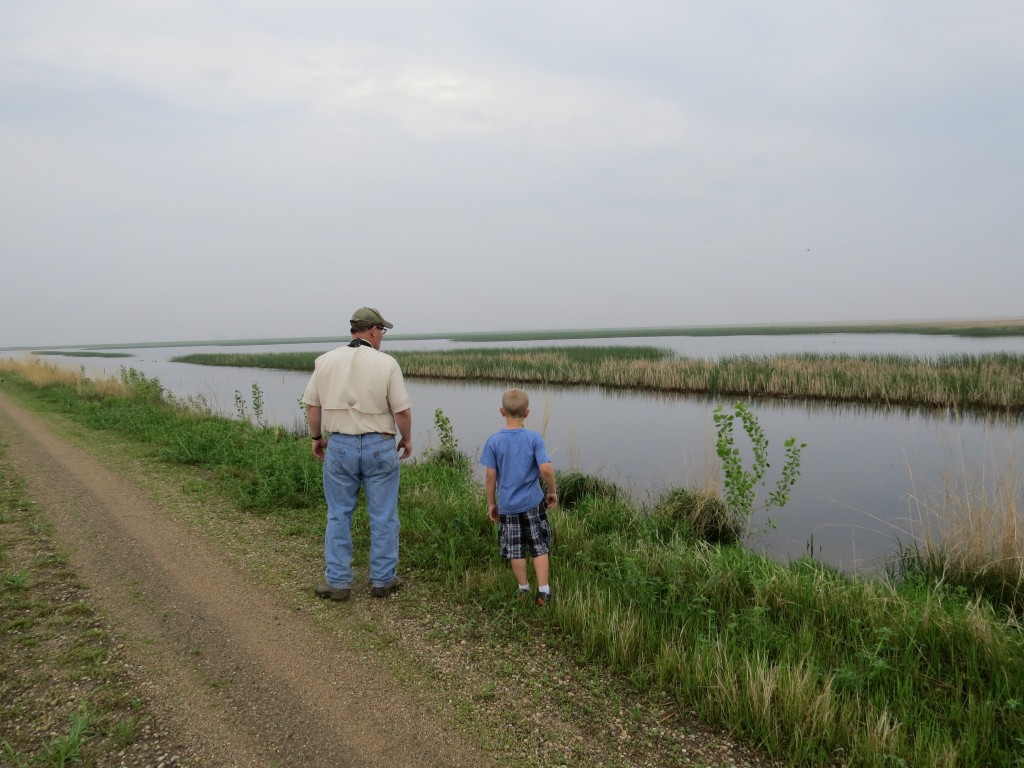
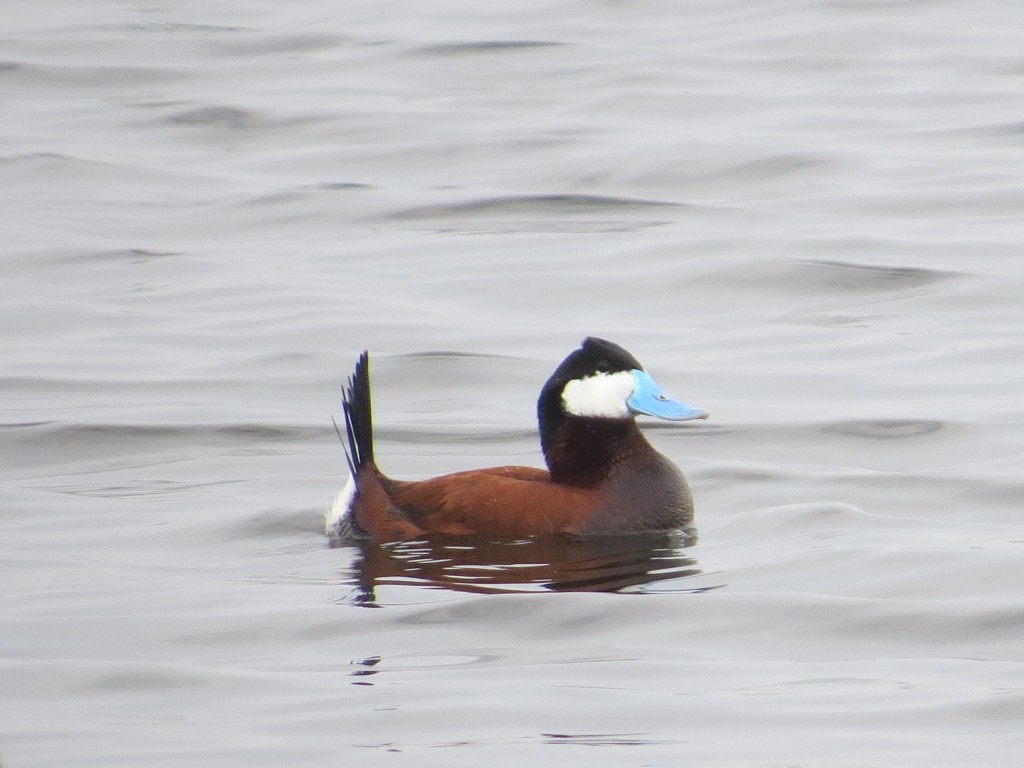
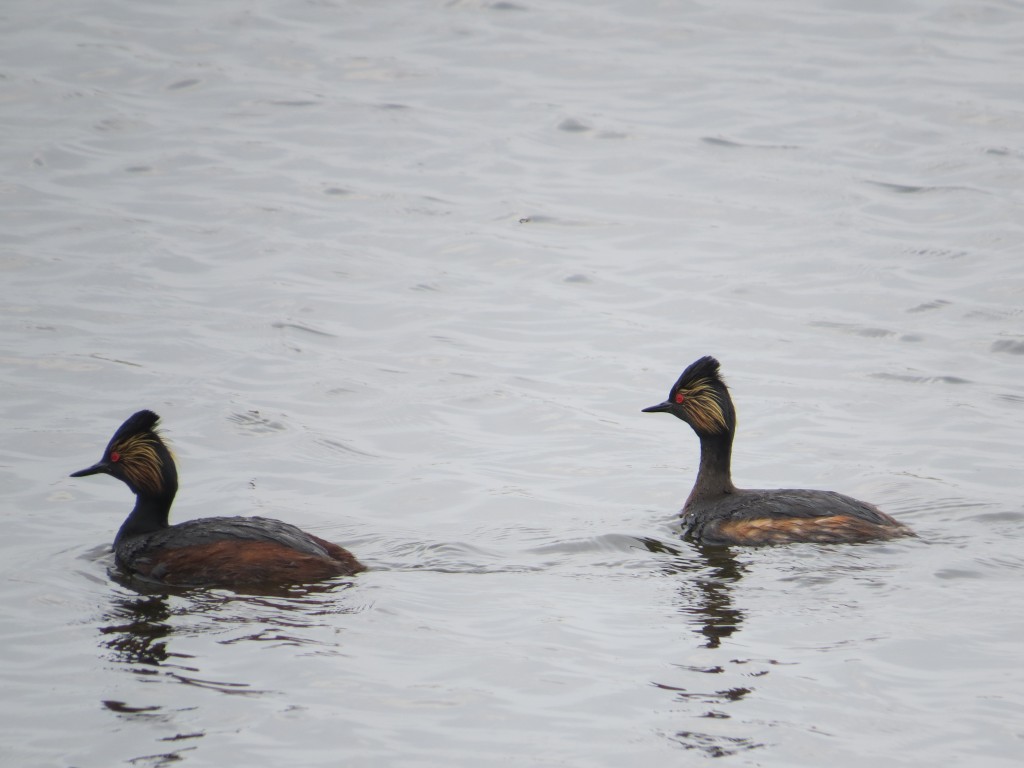
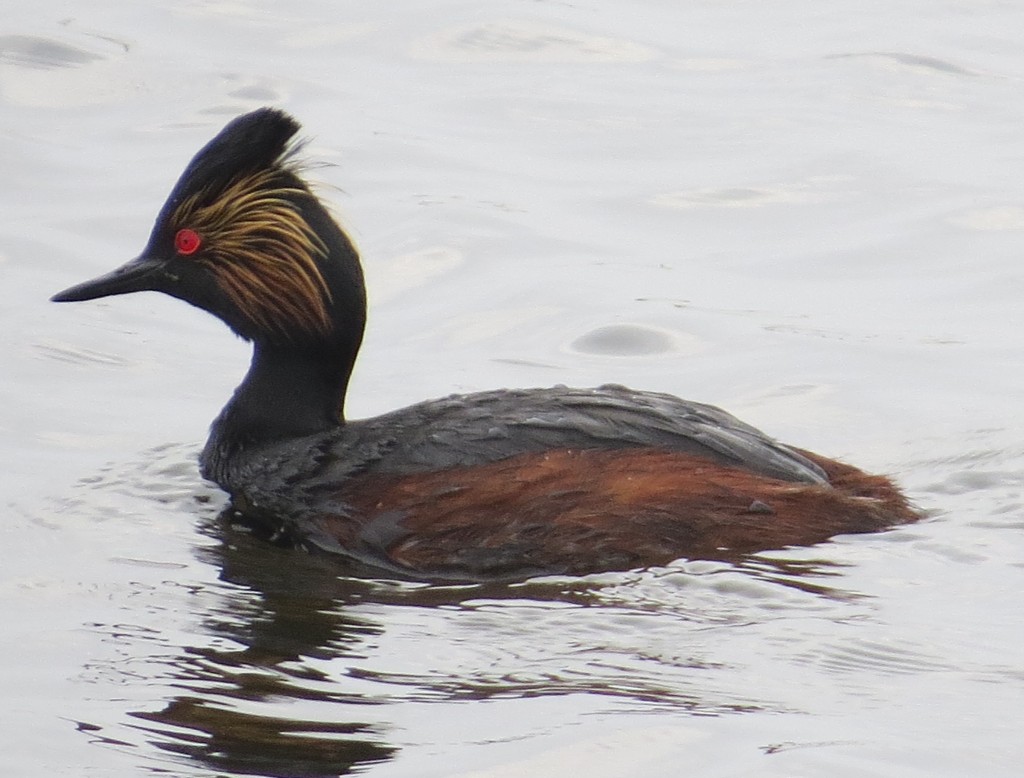
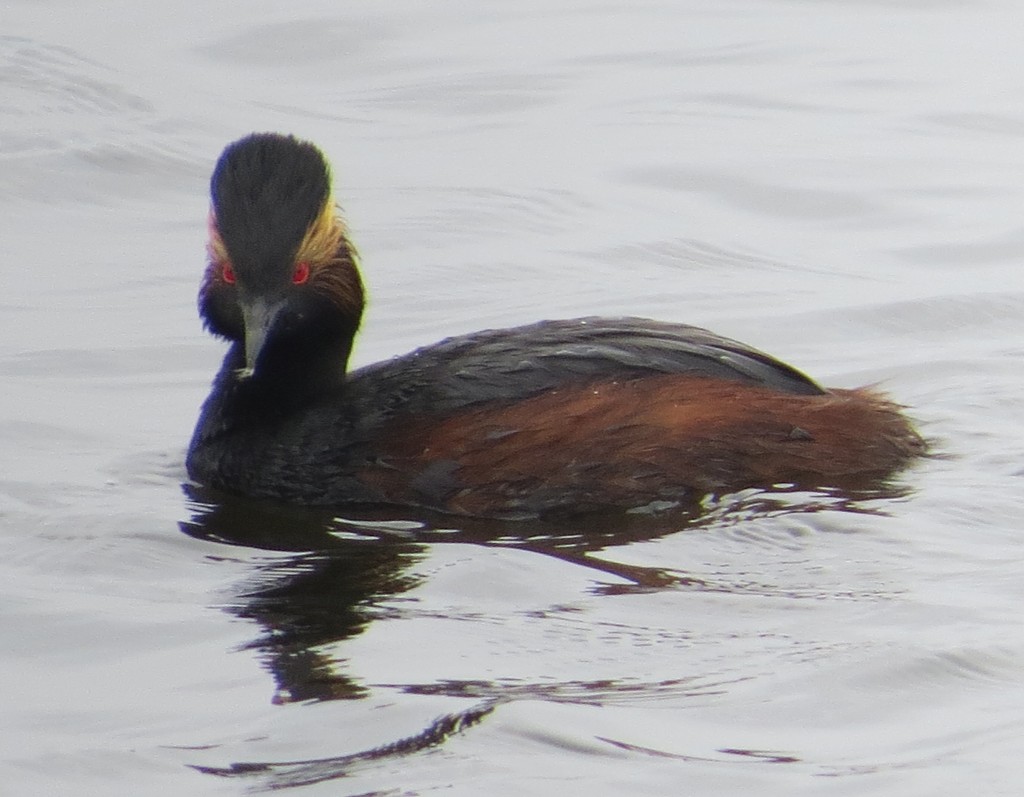 As much as we tried we could not turn up a Black-crowned Night Heron. I guess we can’t win it all, plus there was still more good birding ahead. Our next stop was the sewage ponds at the city of Herman where two Black-necked Stilts have decided to nest. Because of the work of some dedicated birders who brought this to the city’s attention, the city has agreed to not mow around this pond until the birds are done nesting. In fact, the townsfolk are pretty excited over the hub-bub at their local sewage ponds.
As much as we tried we could not turn up a Black-crowned Night Heron. I guess we can’t win it all, plus there was still more good birding ahead. Our next stop was the sewage ponds at the city of Herman where two Black-necked Stilts have decided to nest. Because of the work of some dedicated birders who brought this to the city’s attention, the city has agreed to not mow around this pond until the birds are done nesting. In fact, the townsfolk are pretty excited over the hub-bub at their local sewage ponds.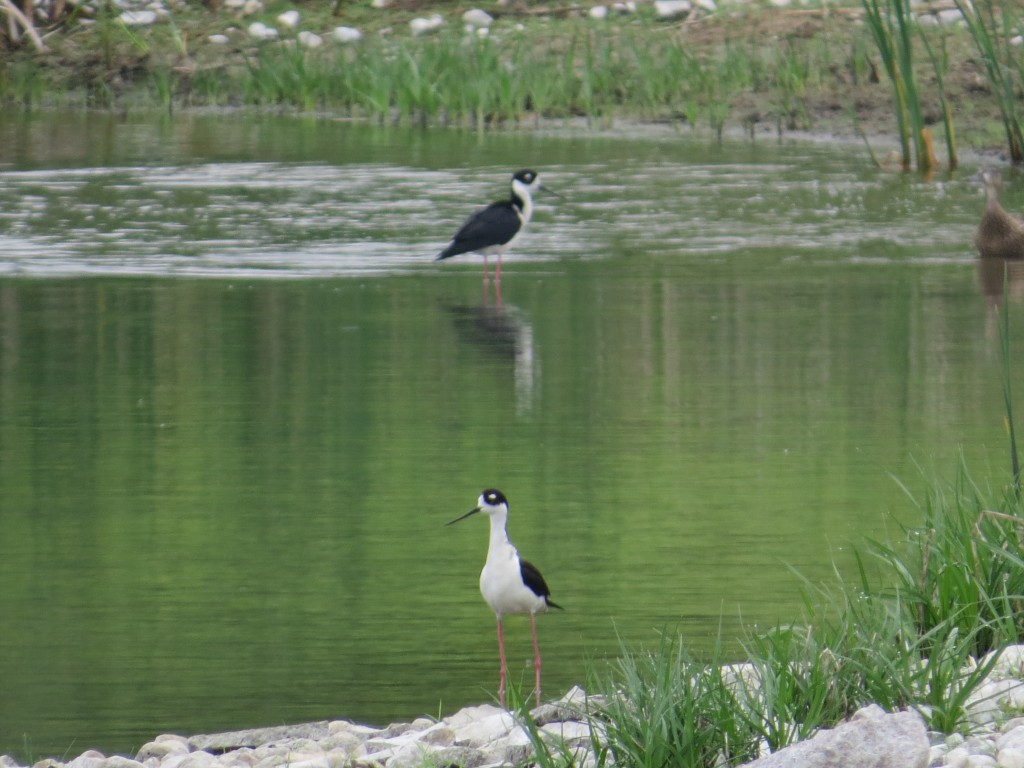
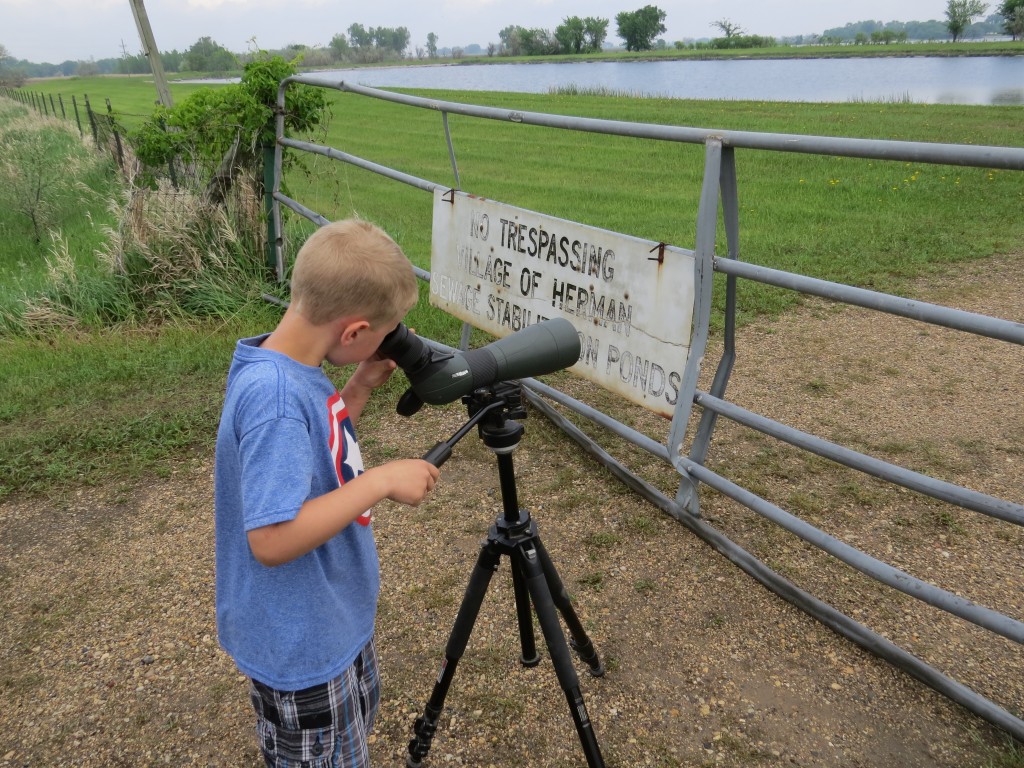 It was fun to see the female sit on the nest which has one confirmed egg.
It was fun to see the female sit on the nest which has one confirmed egg.